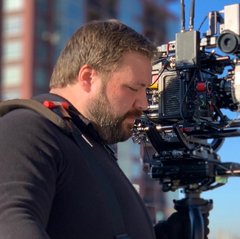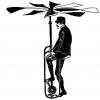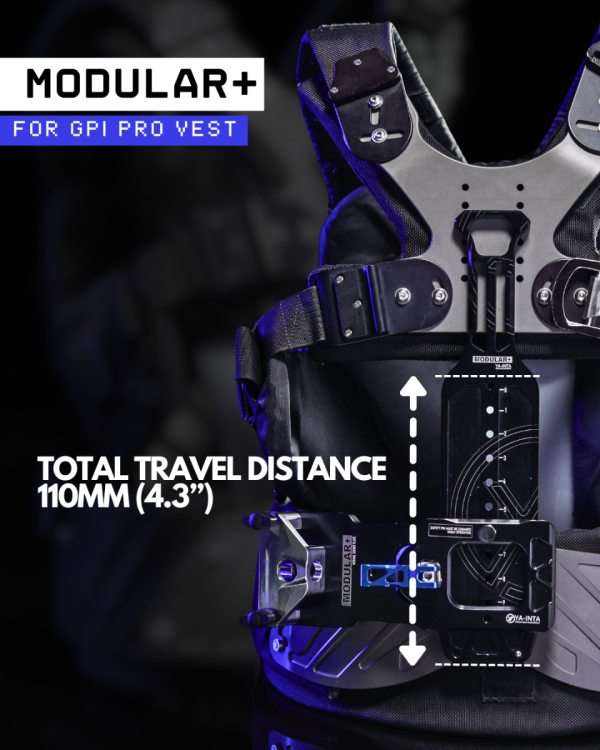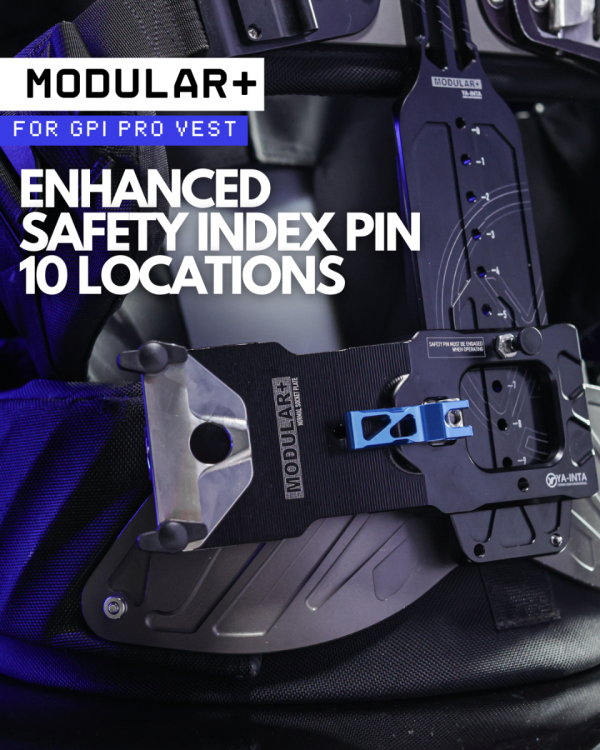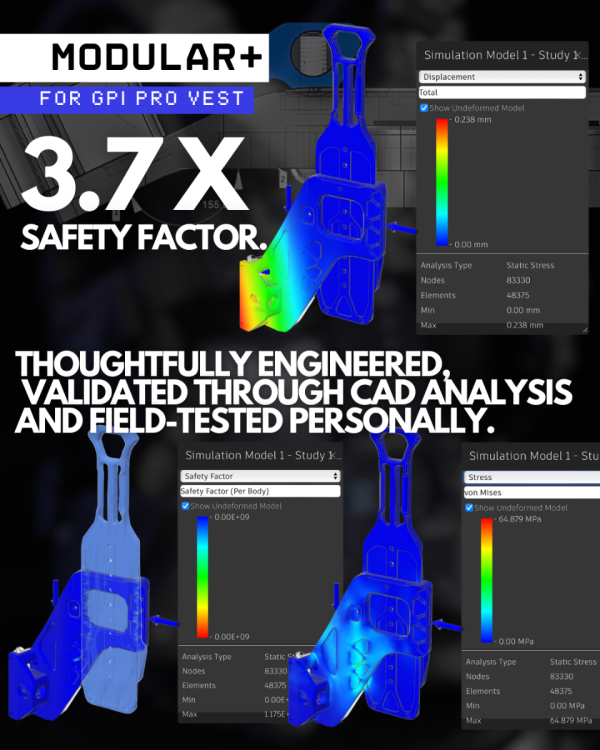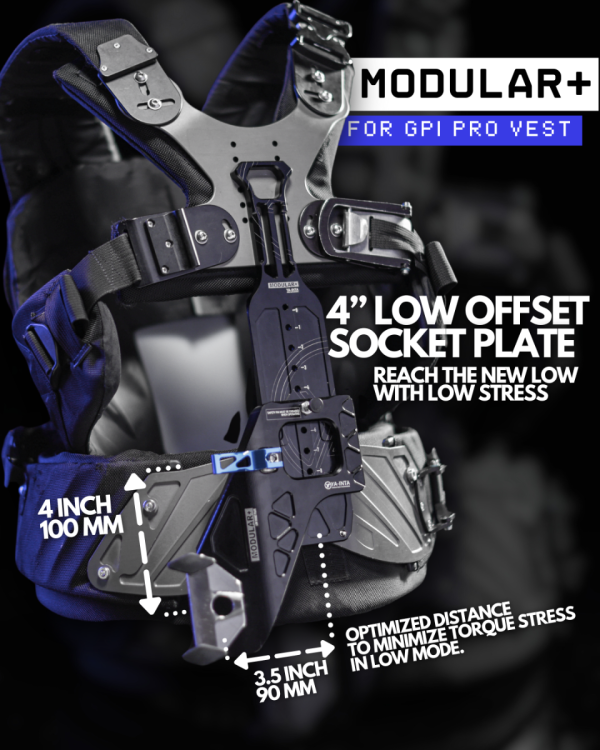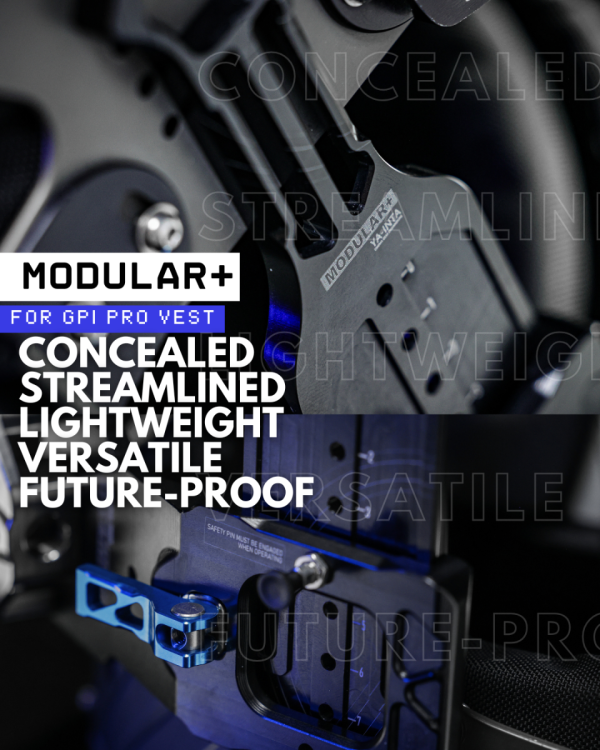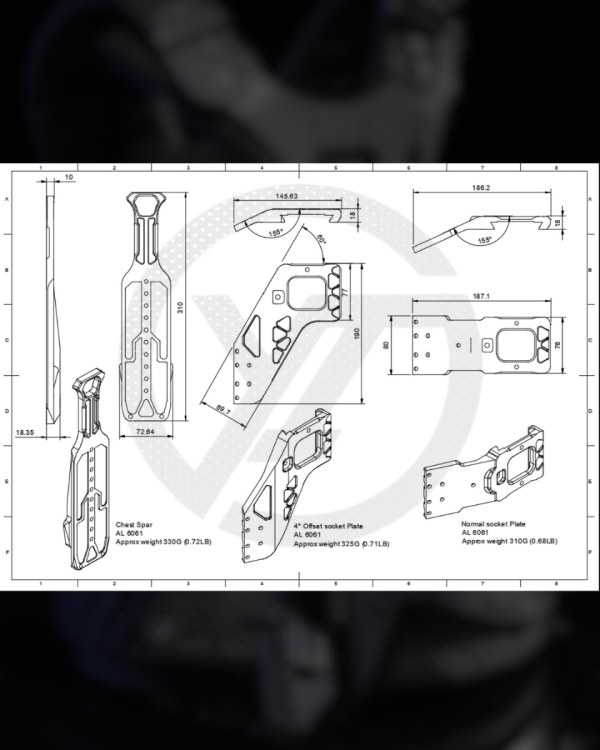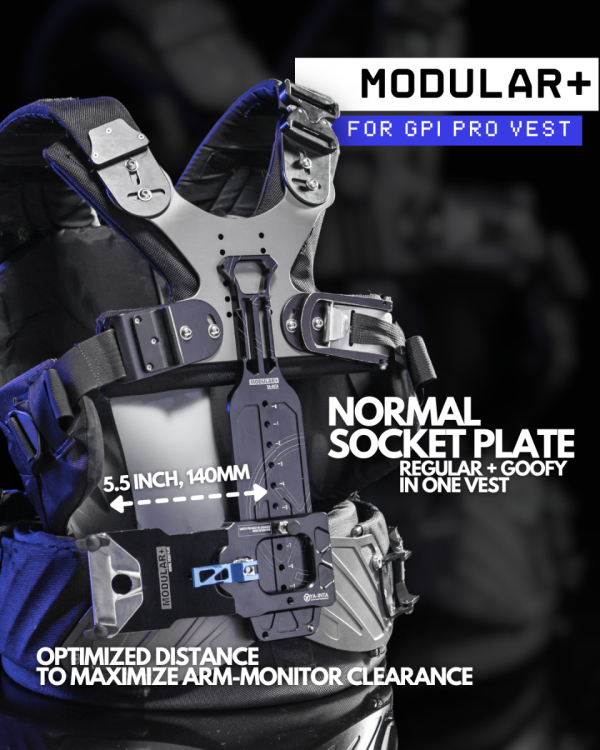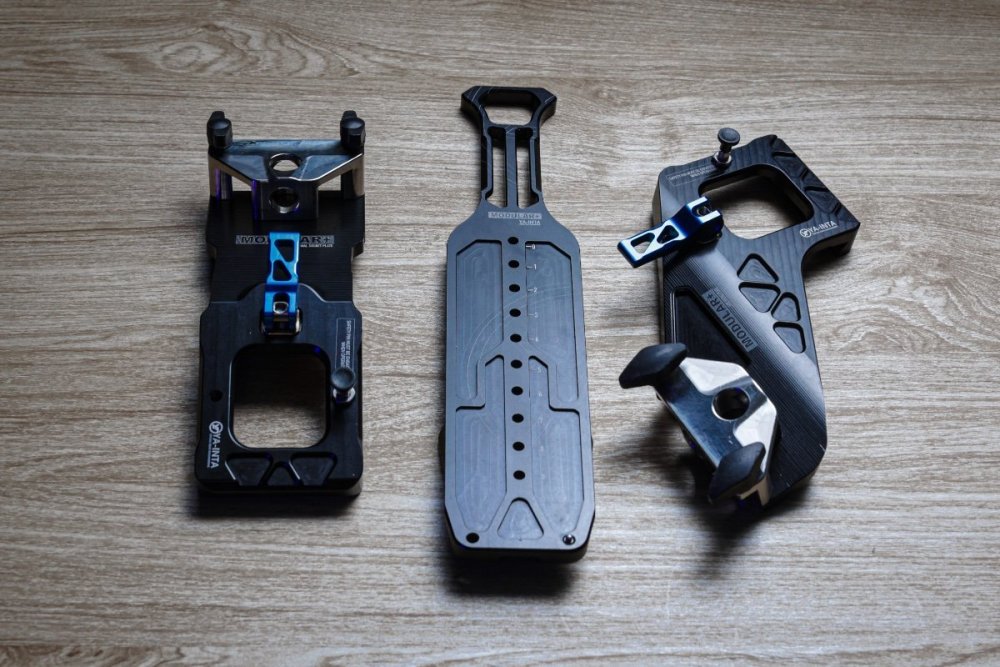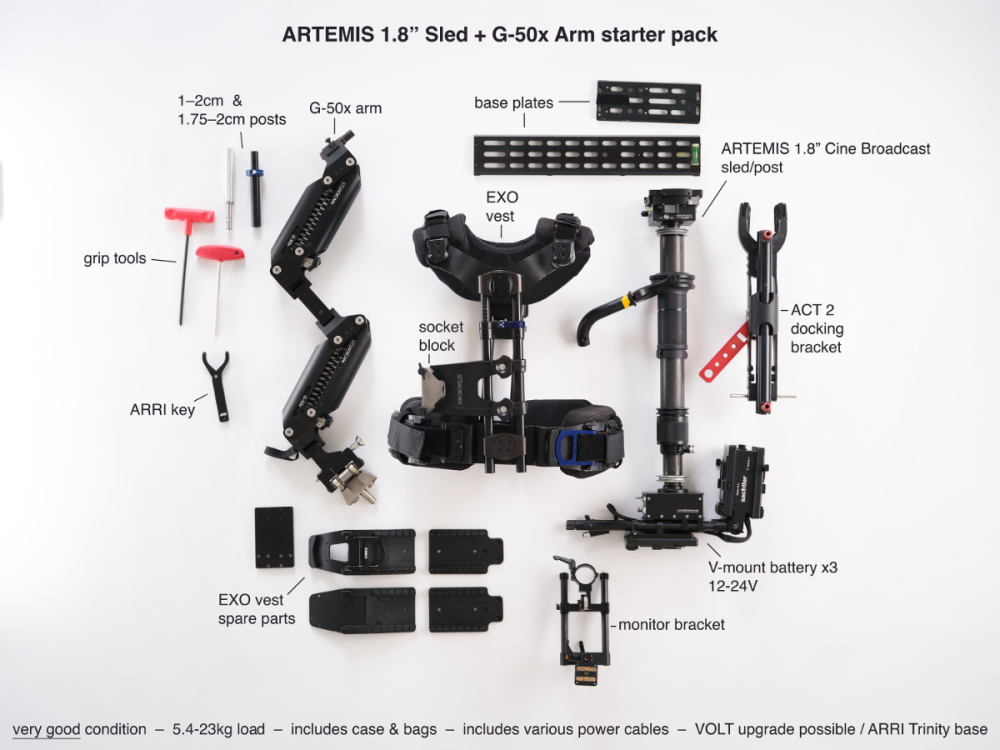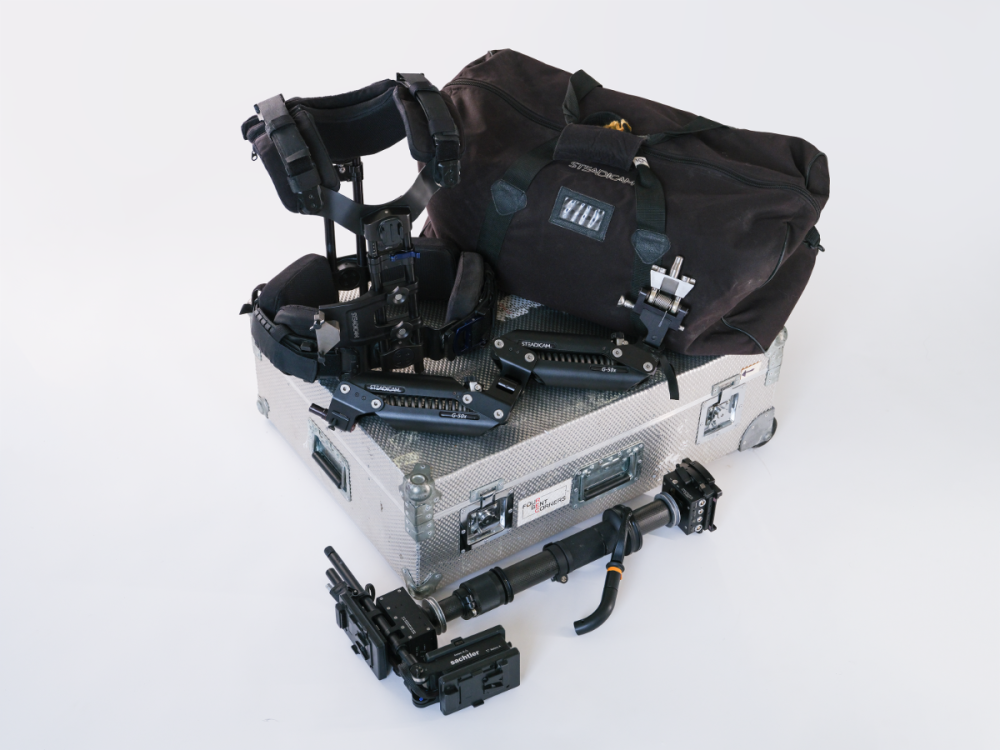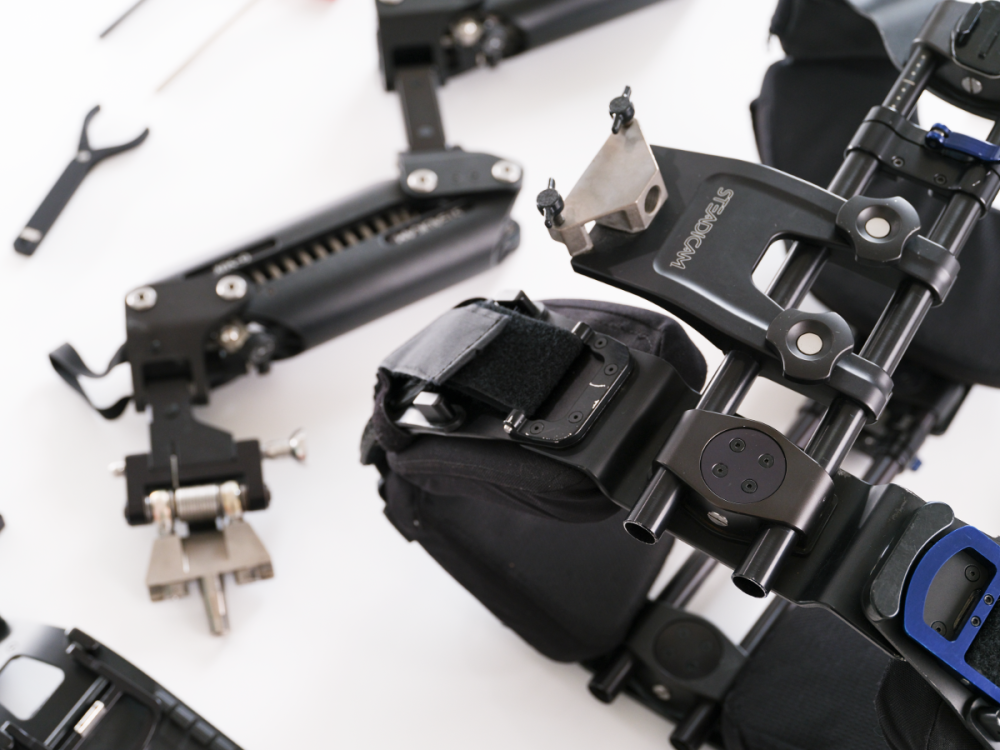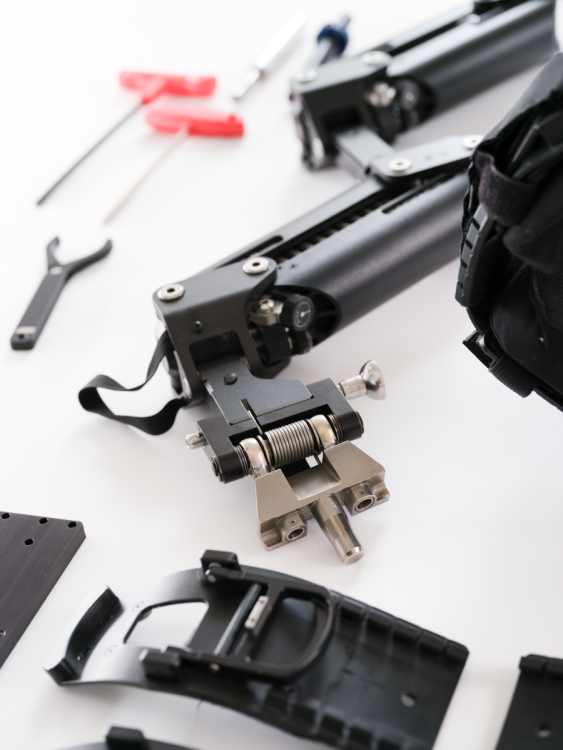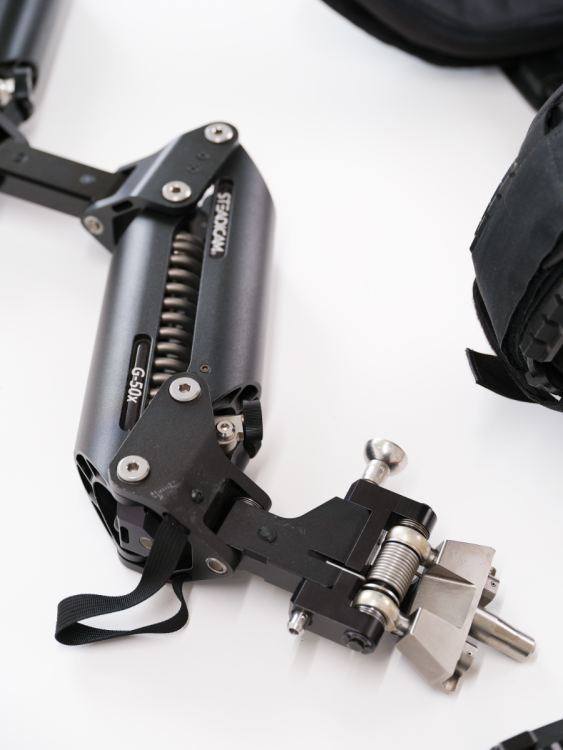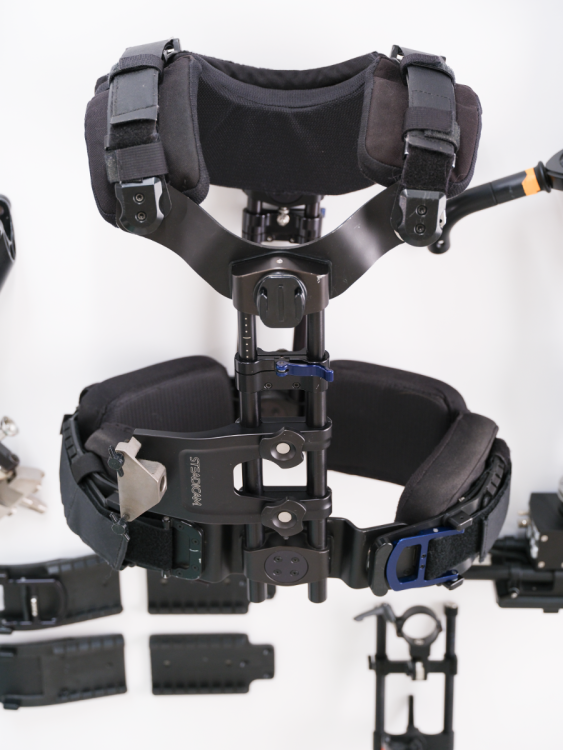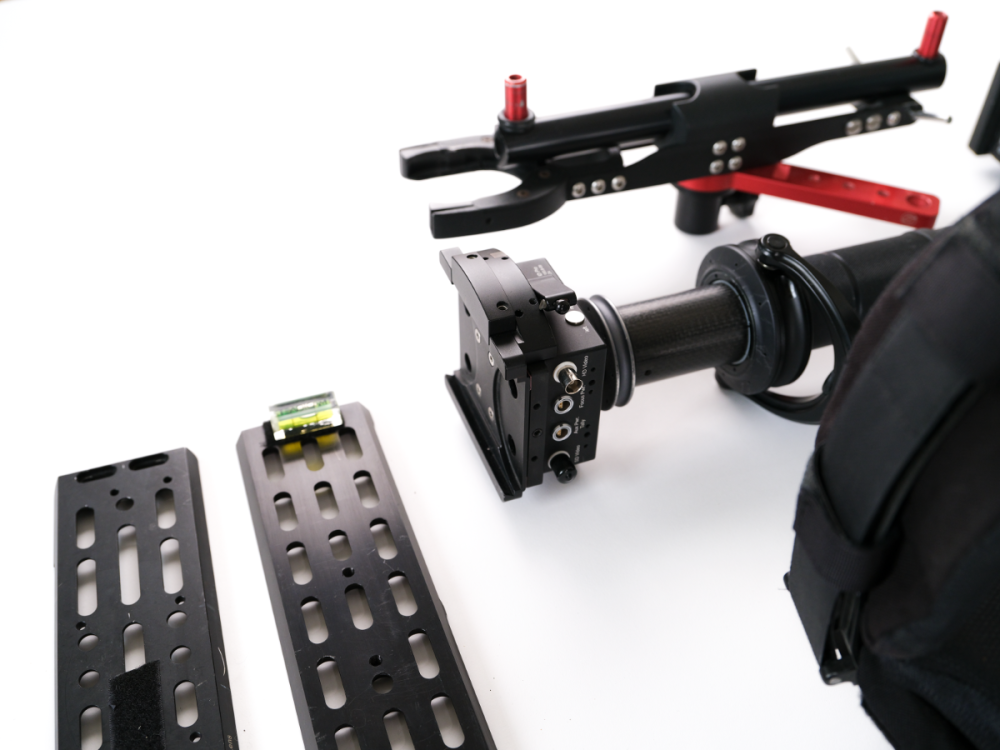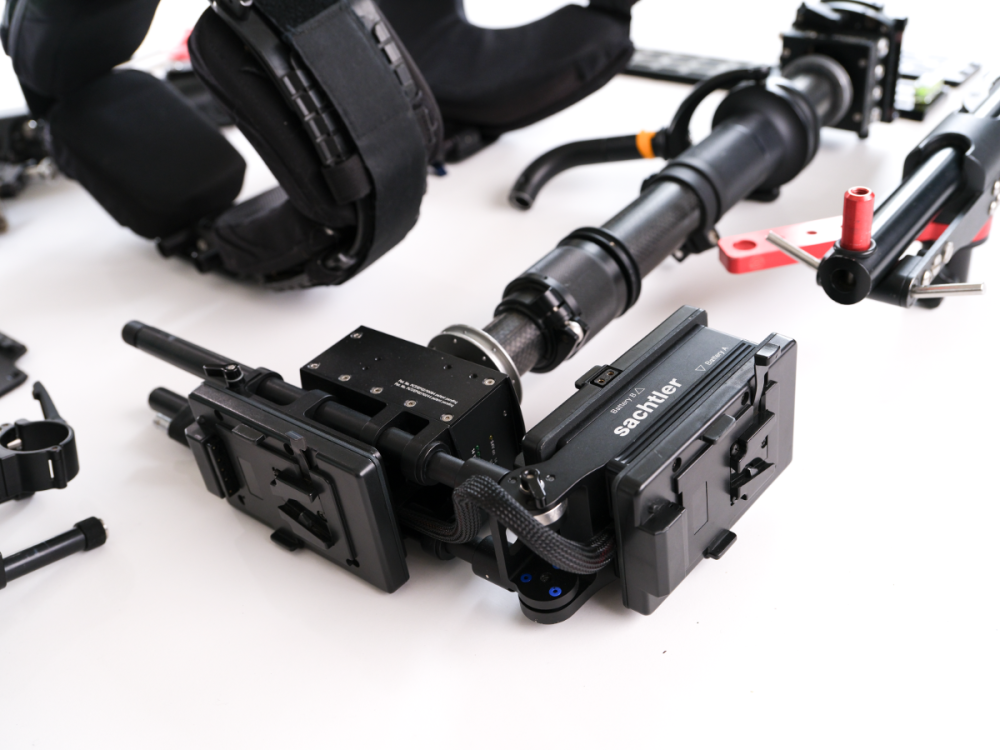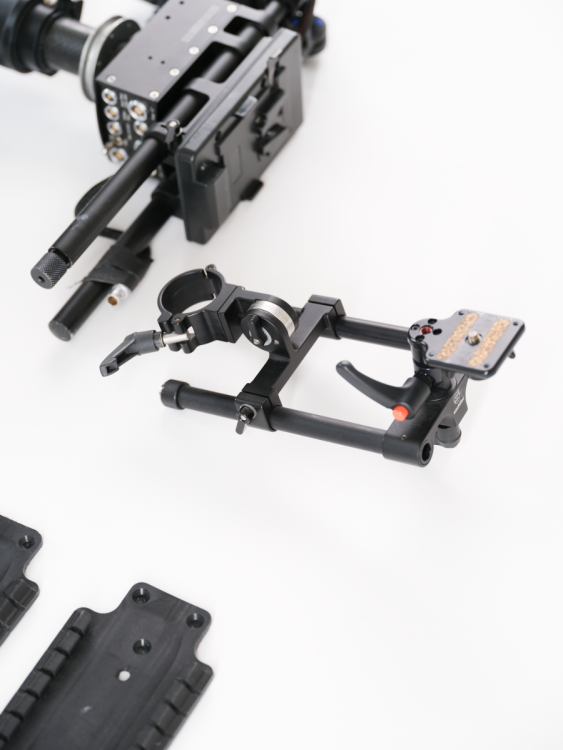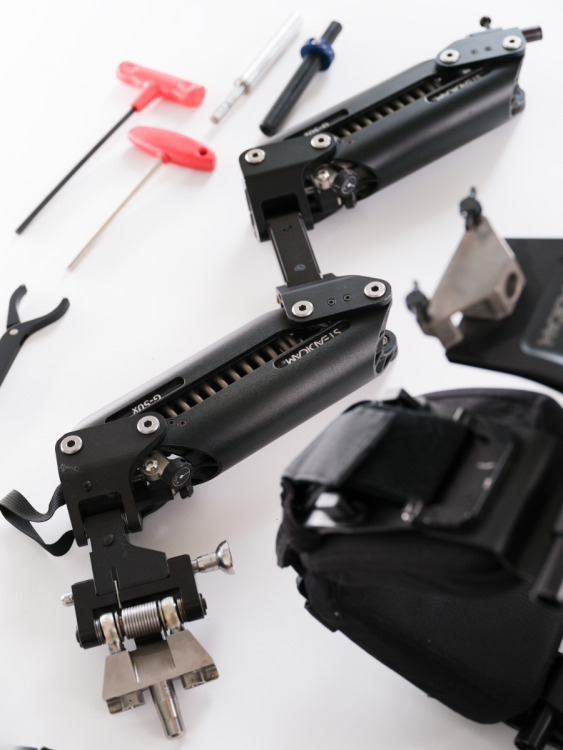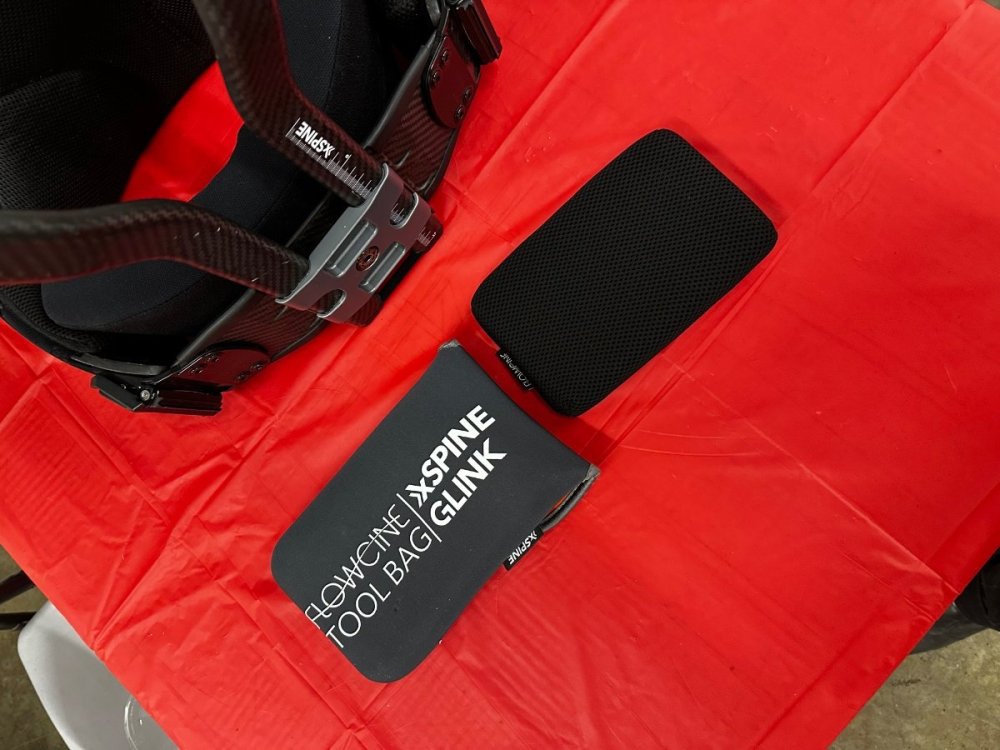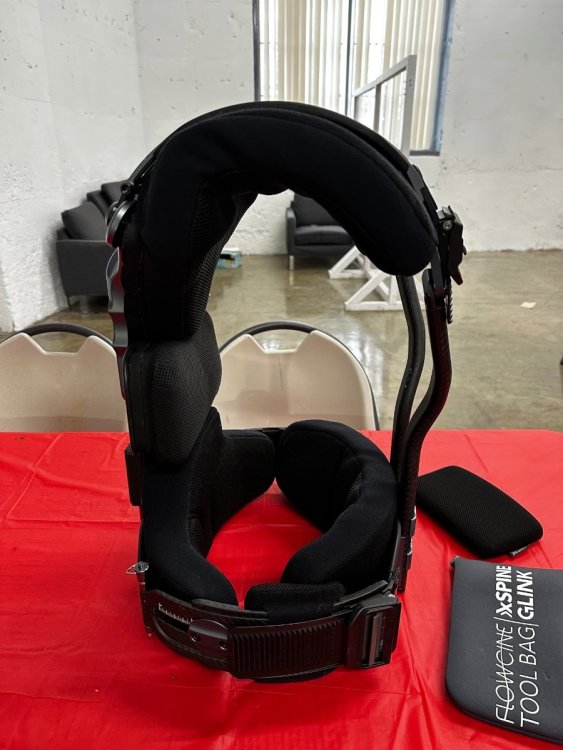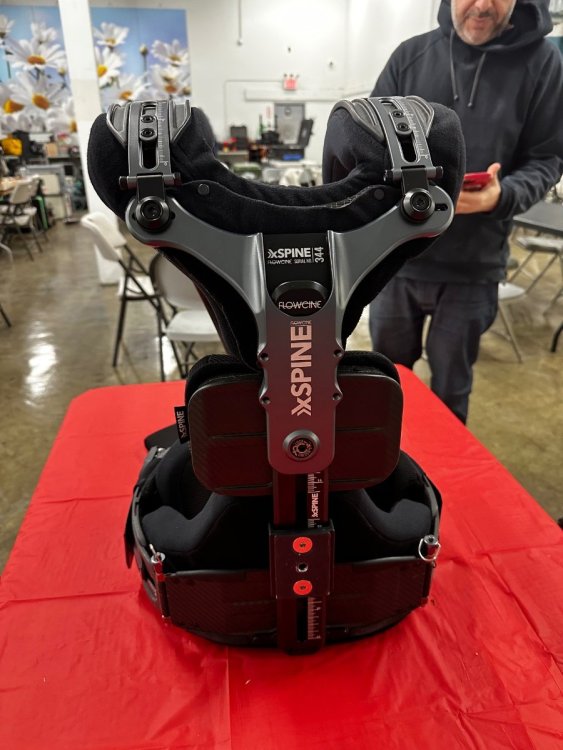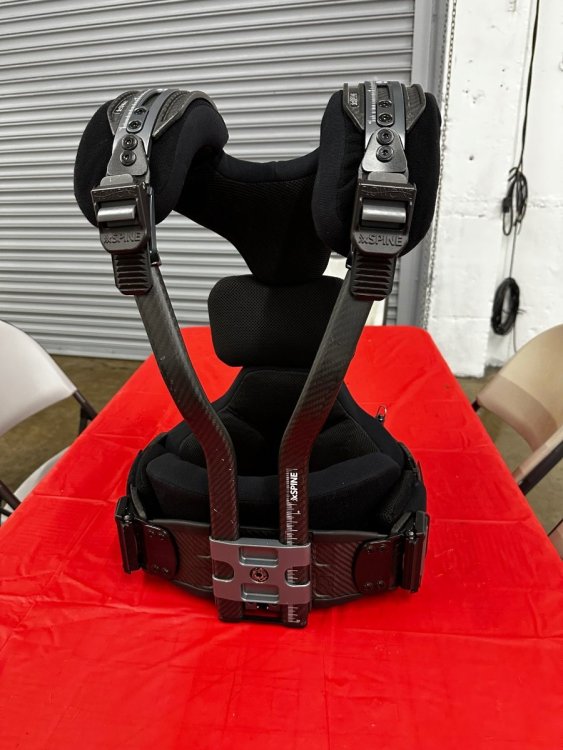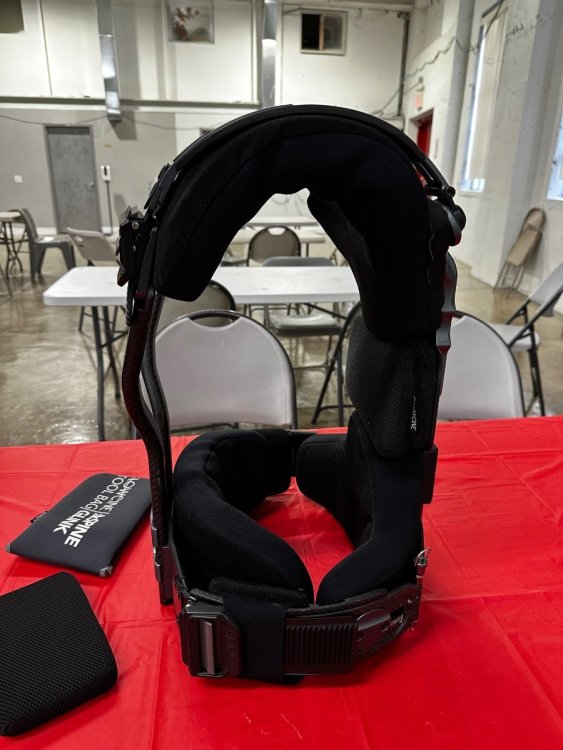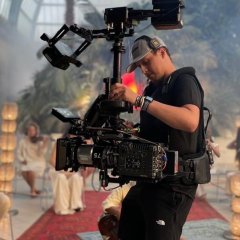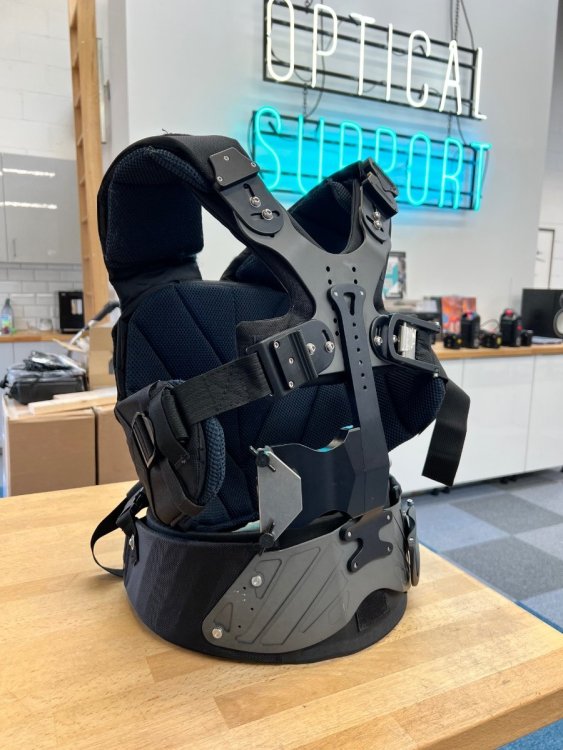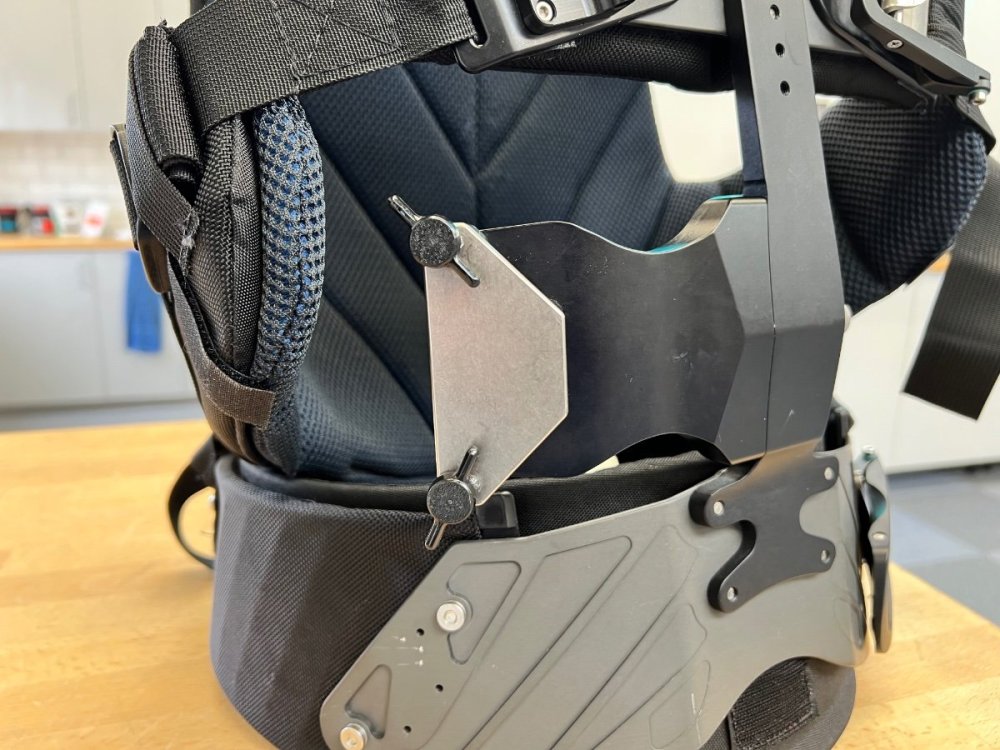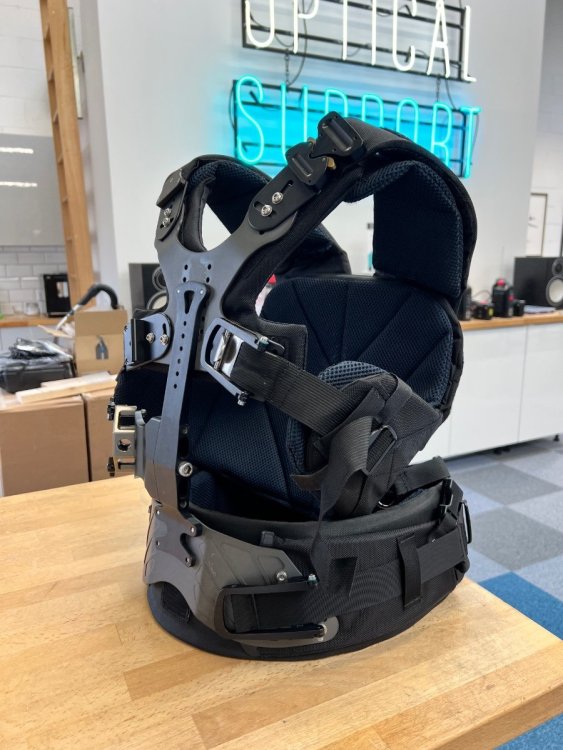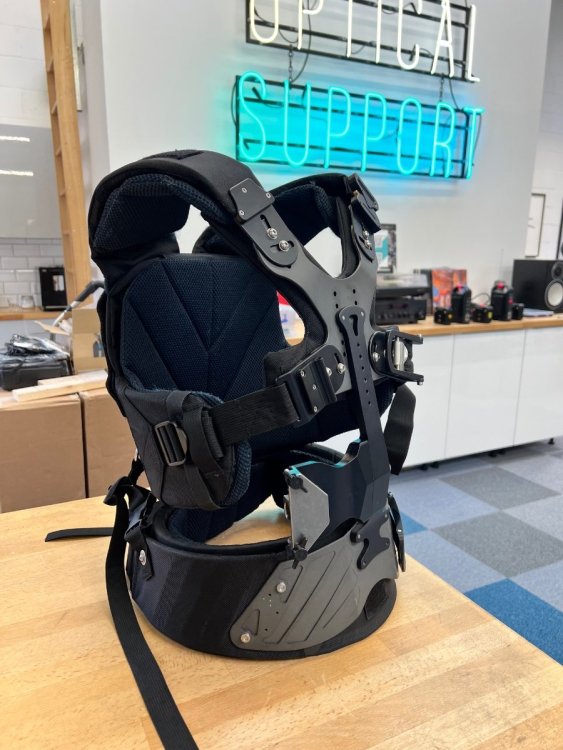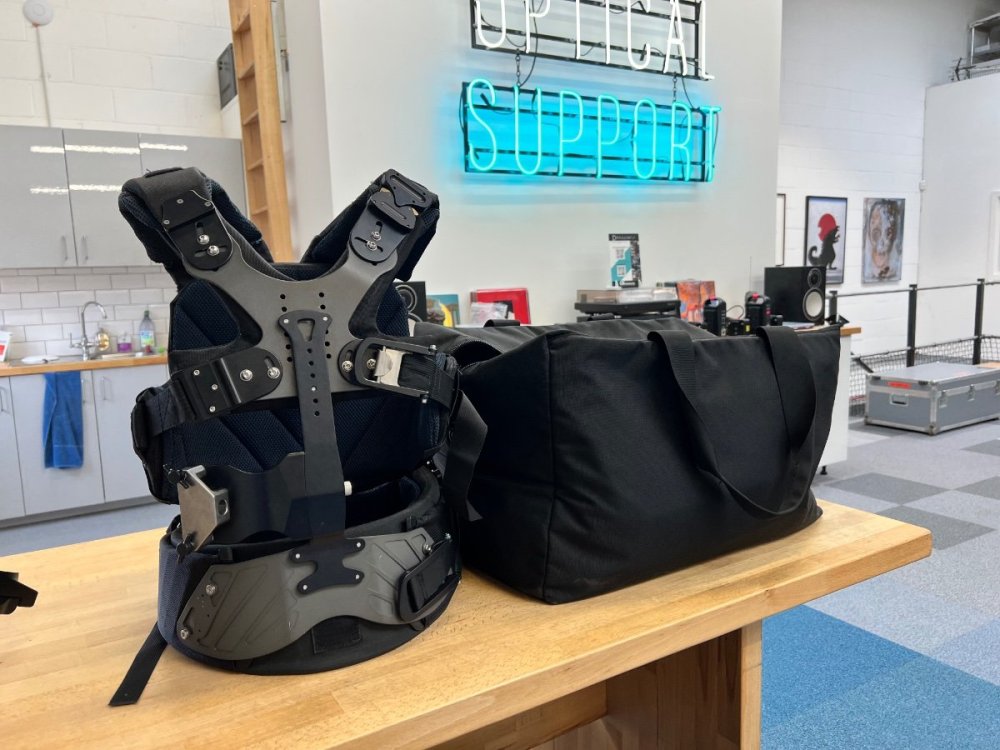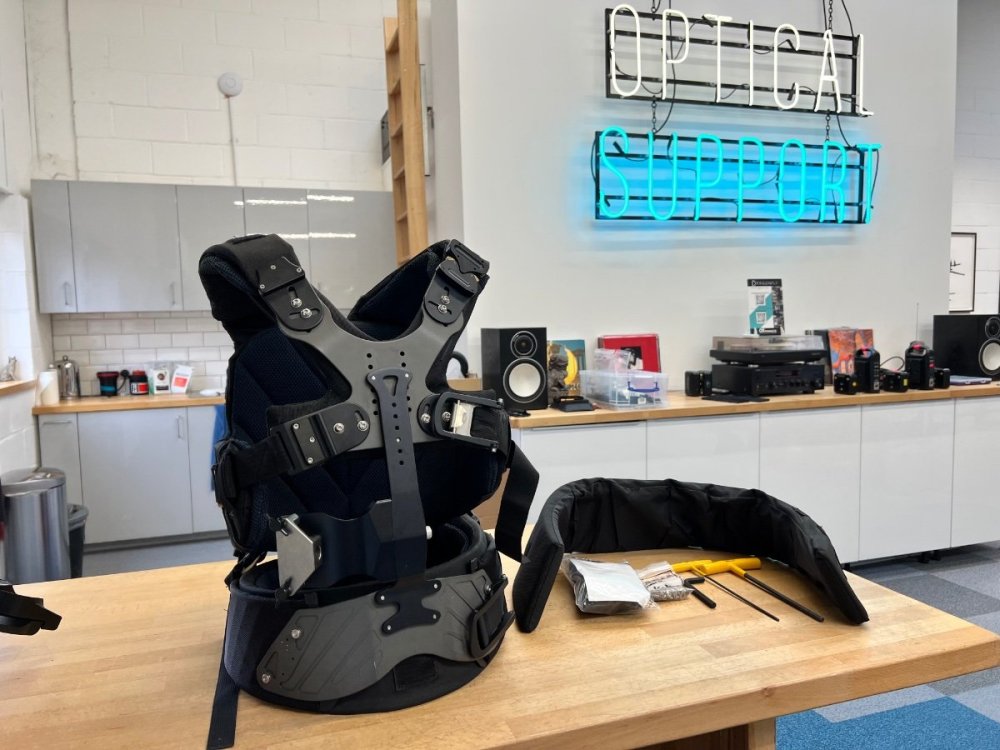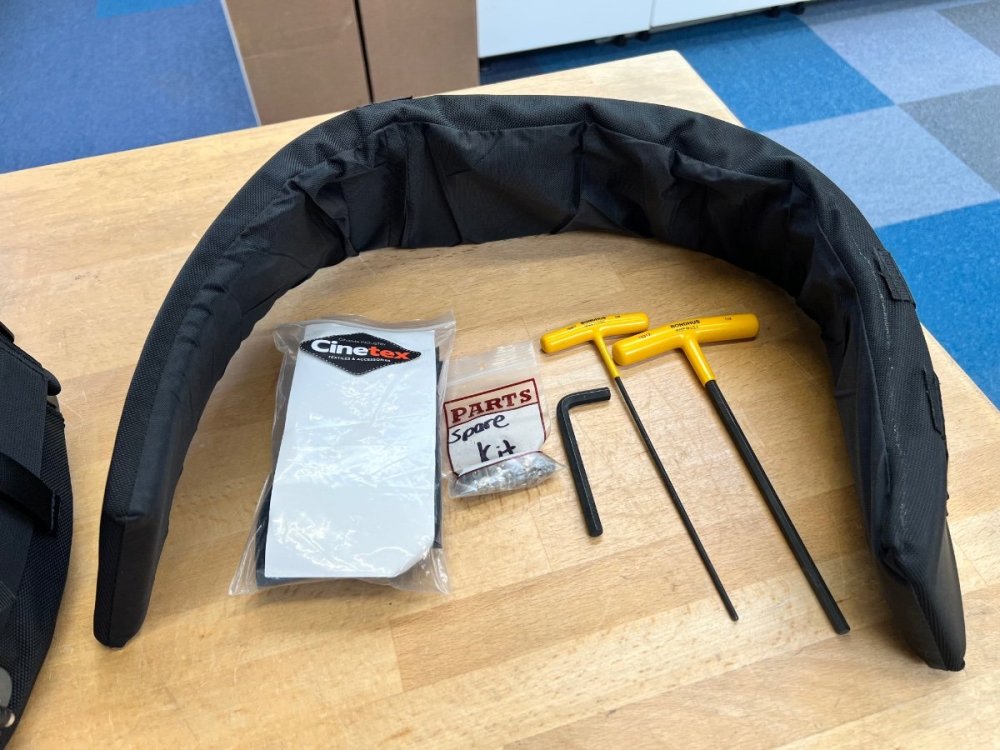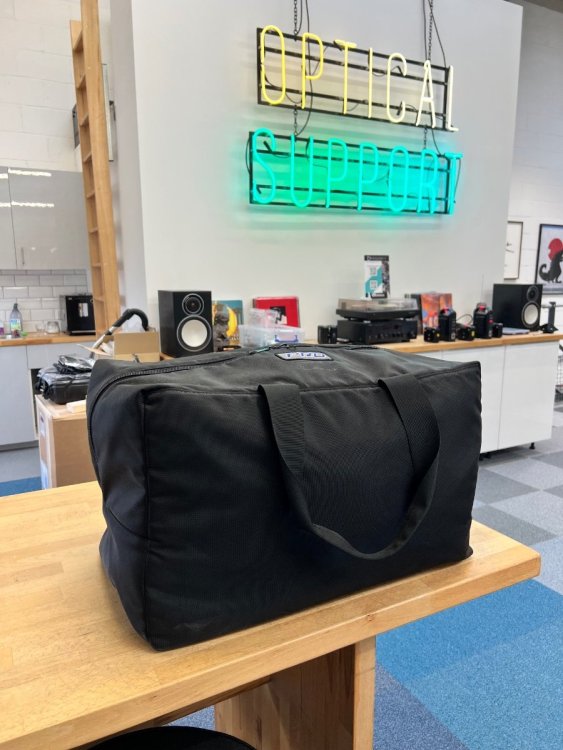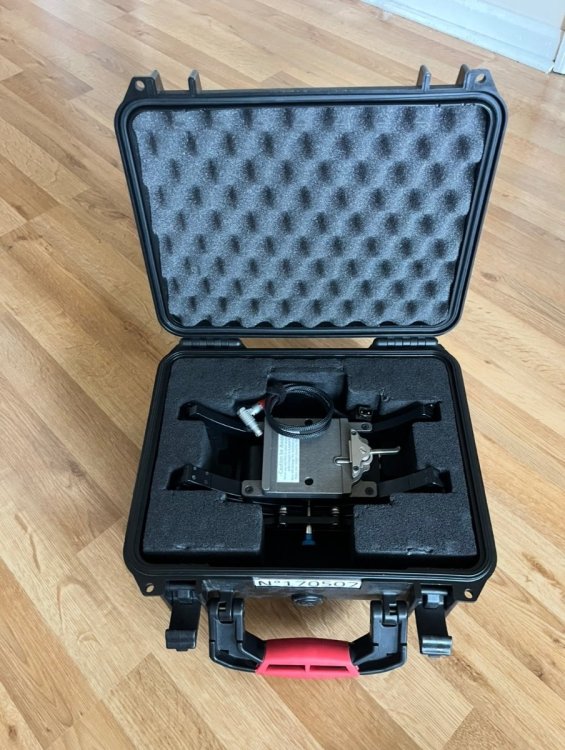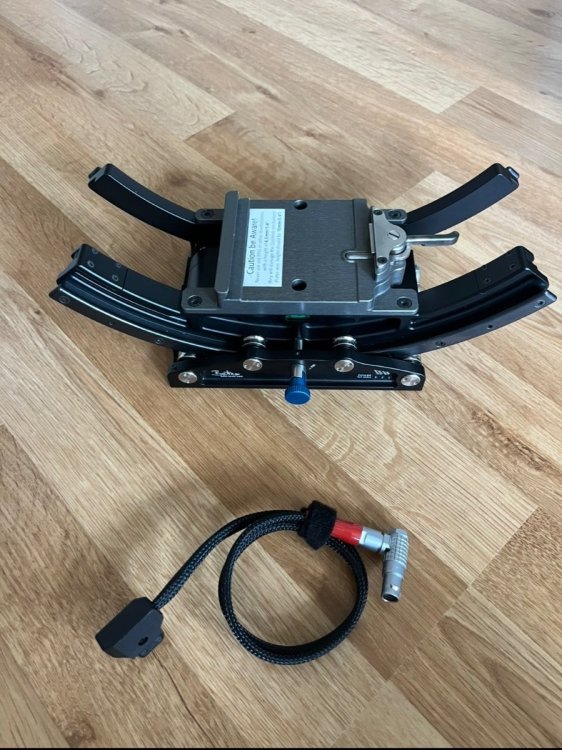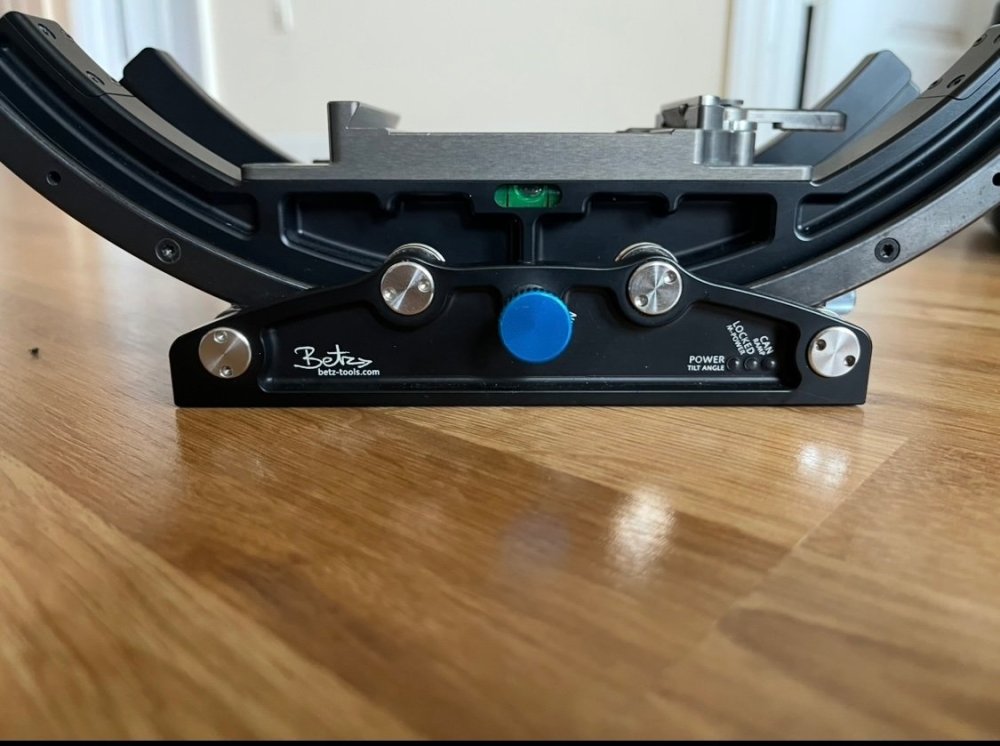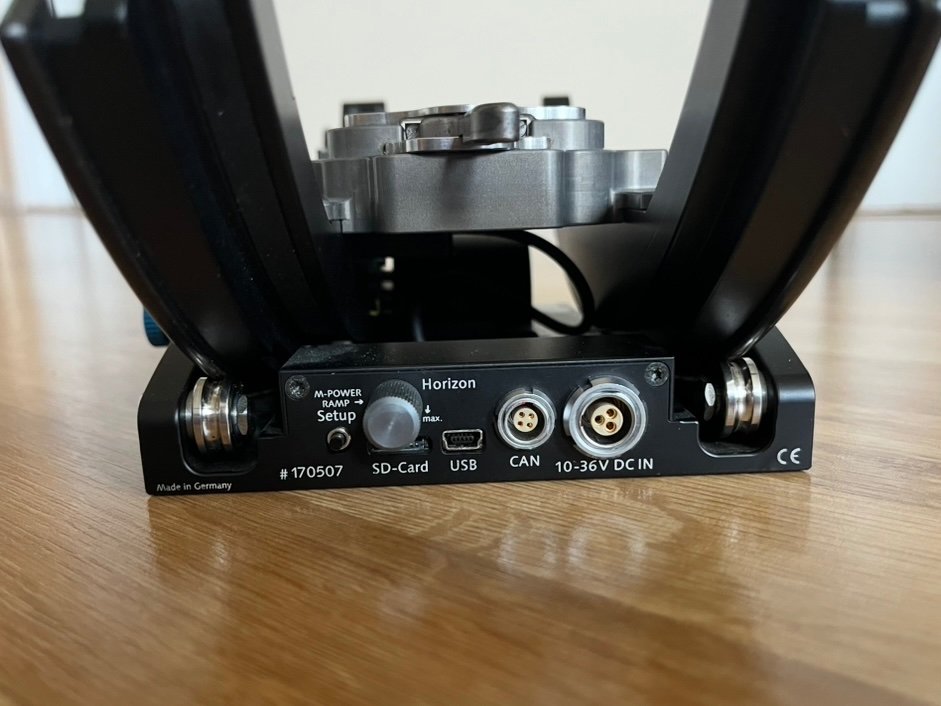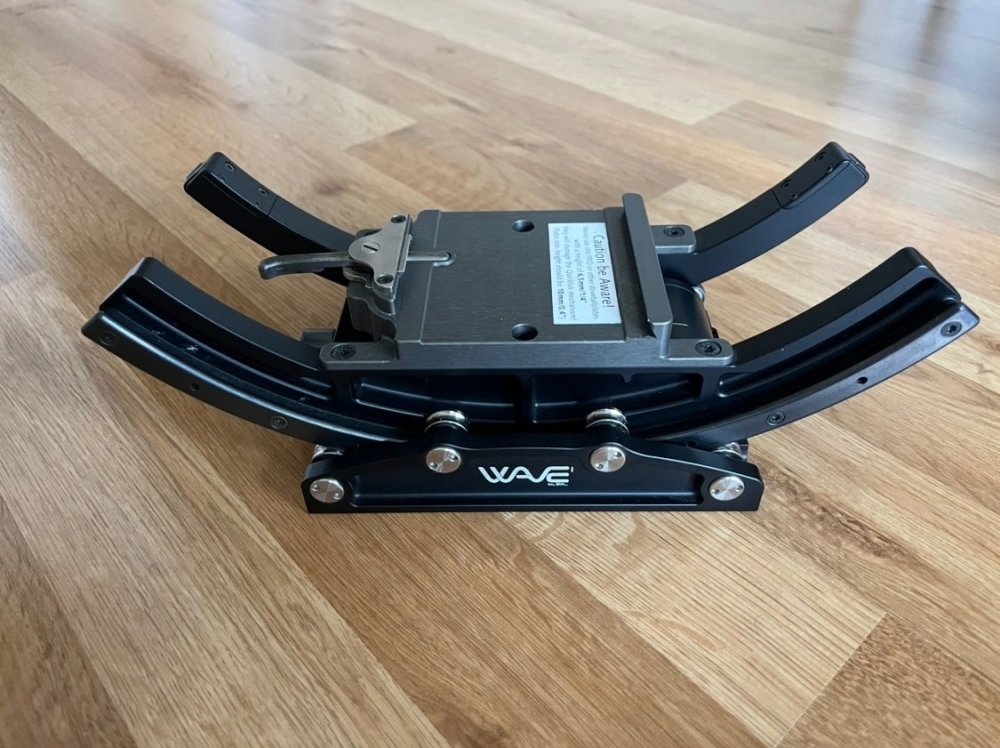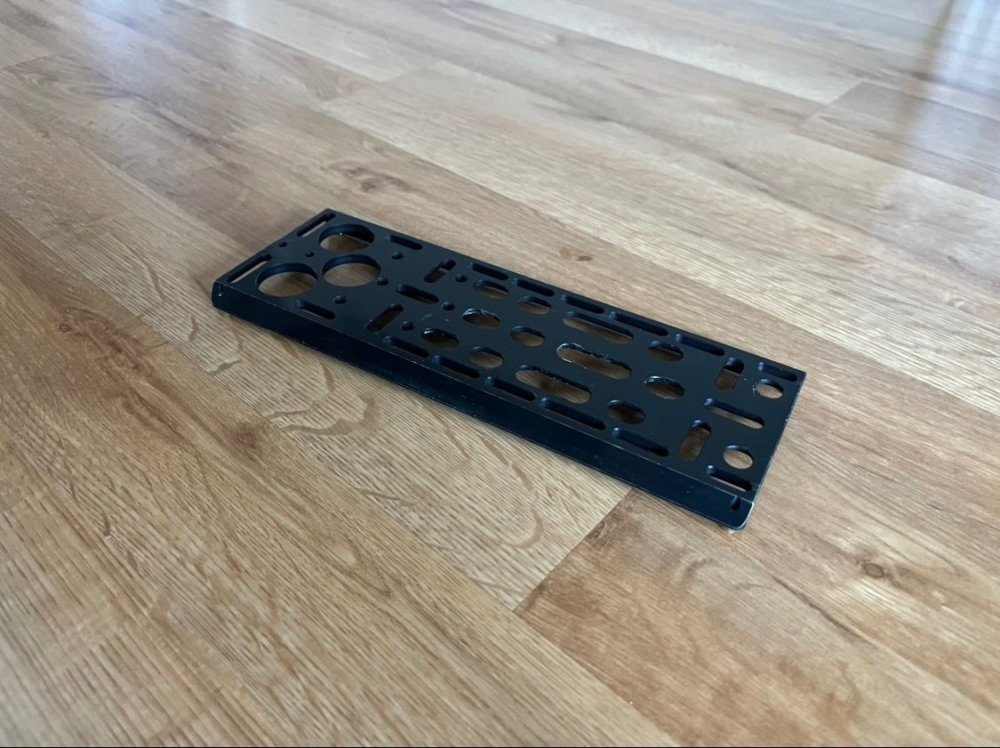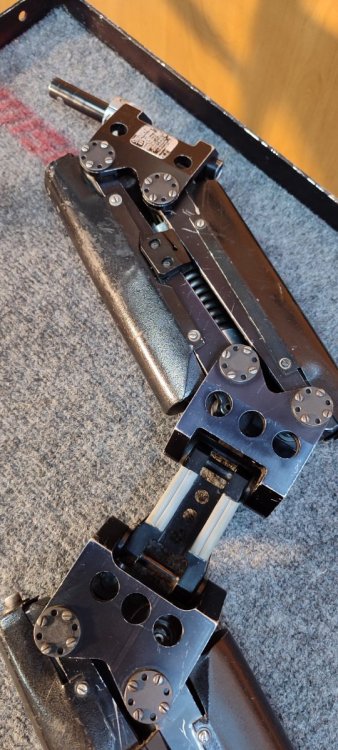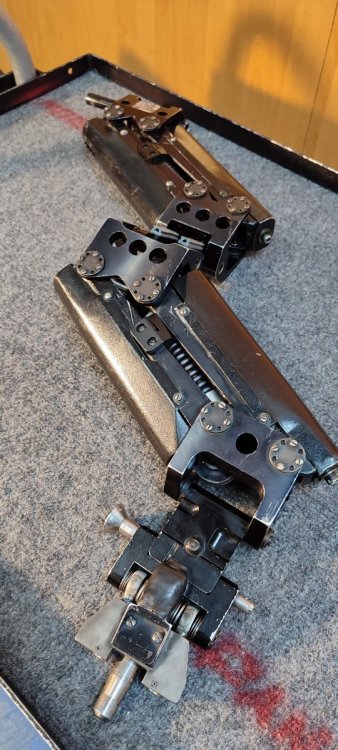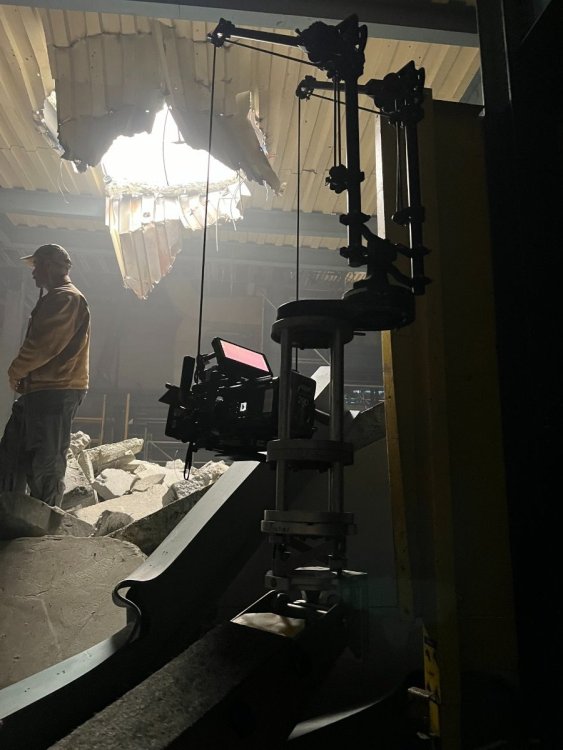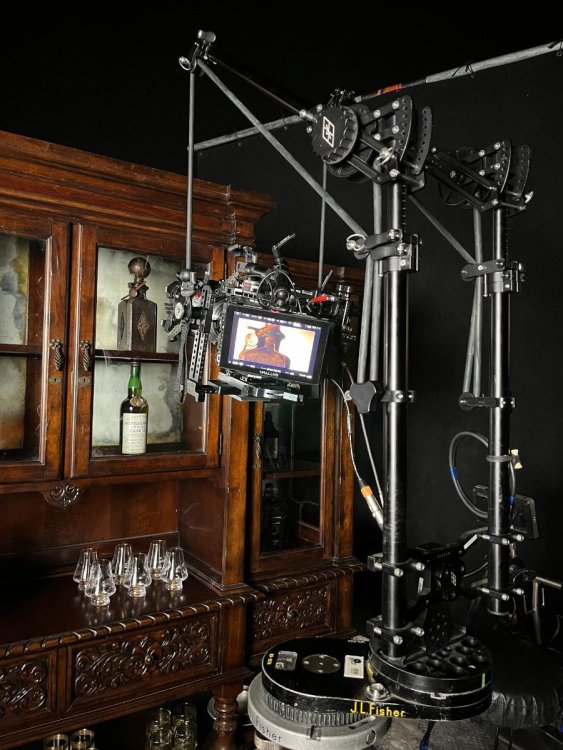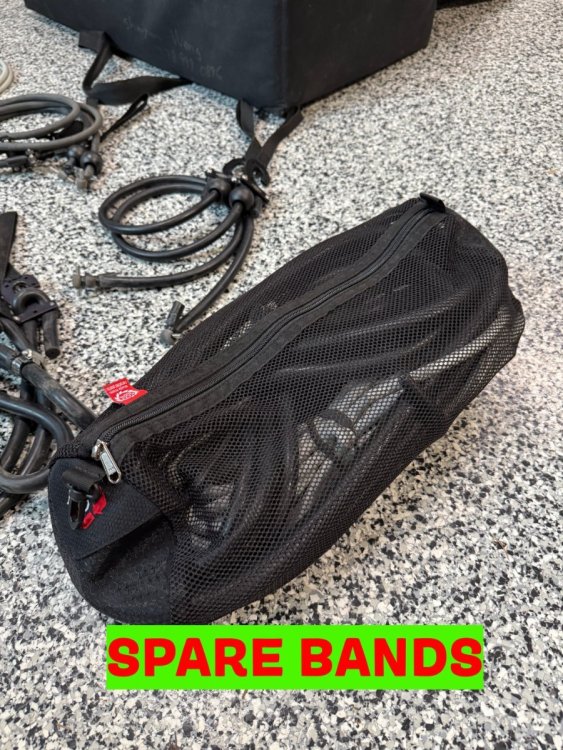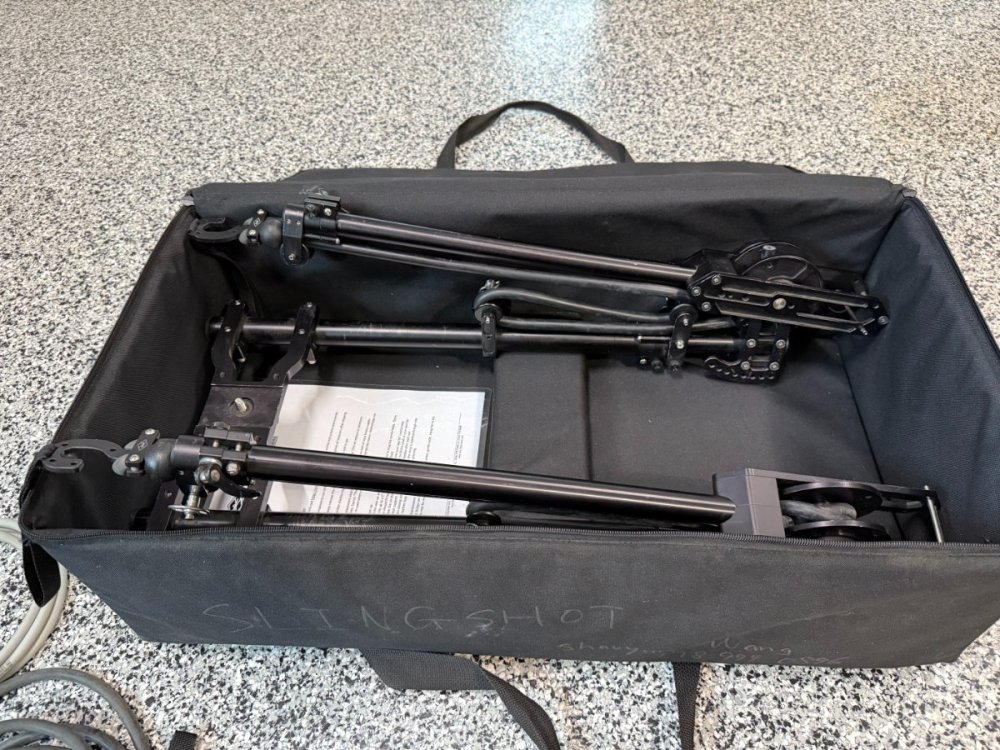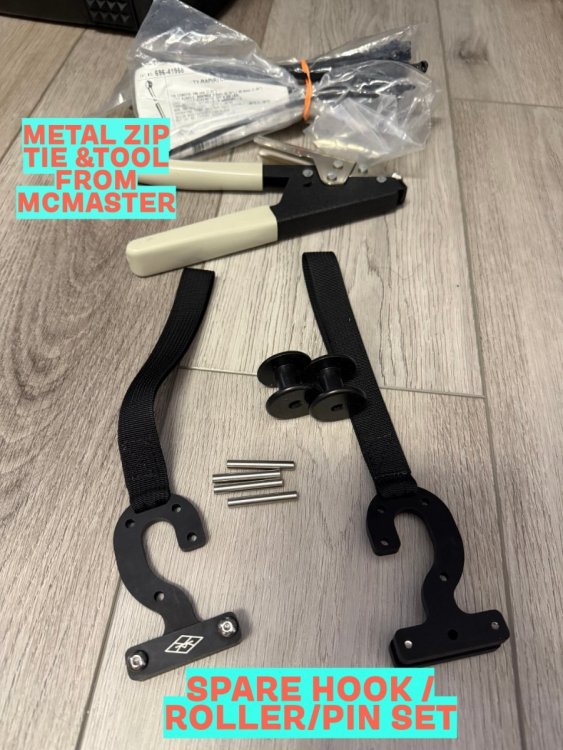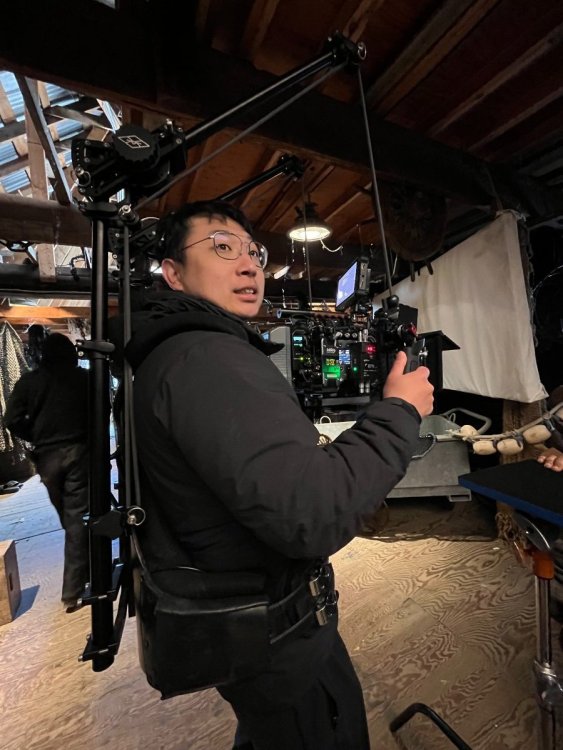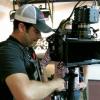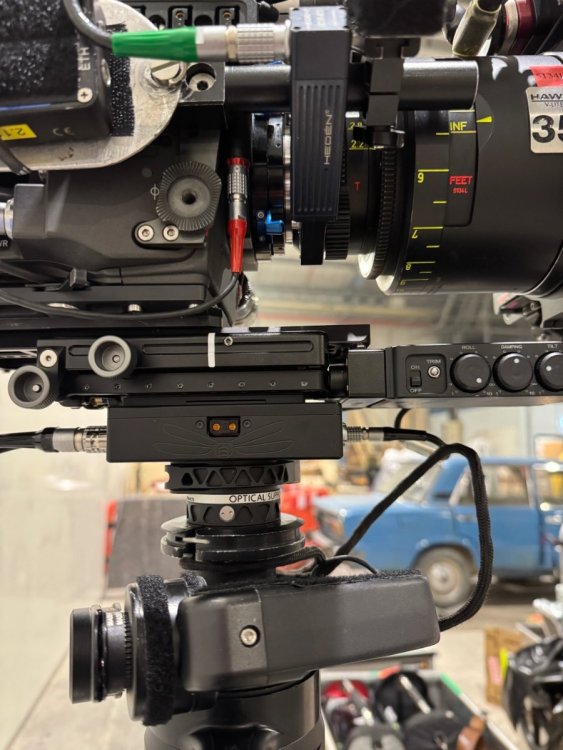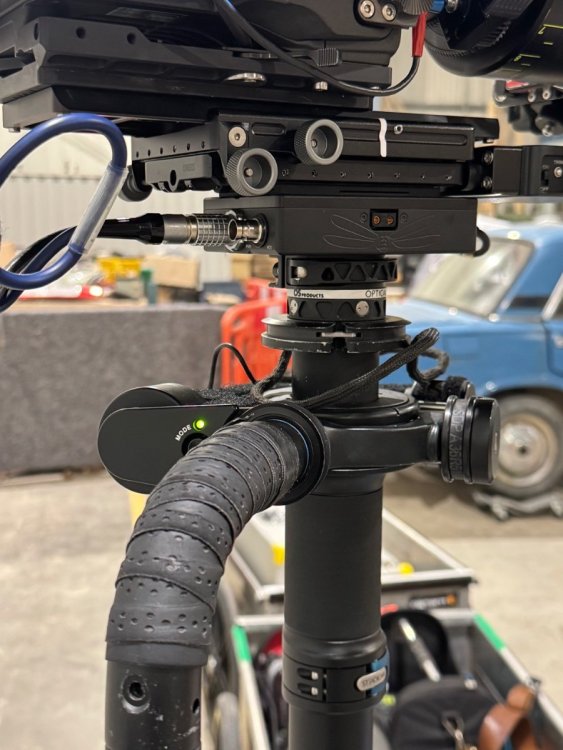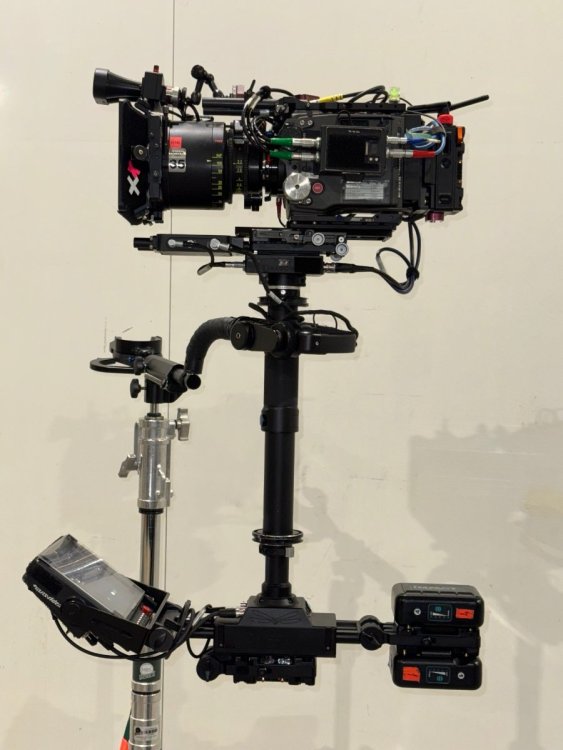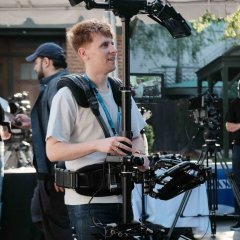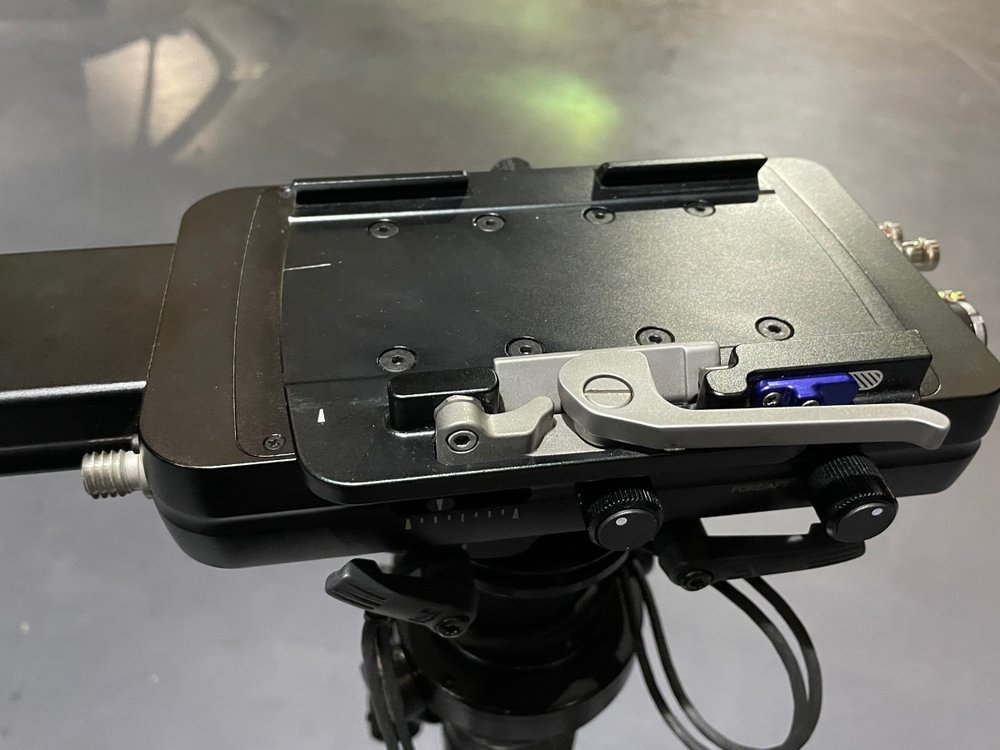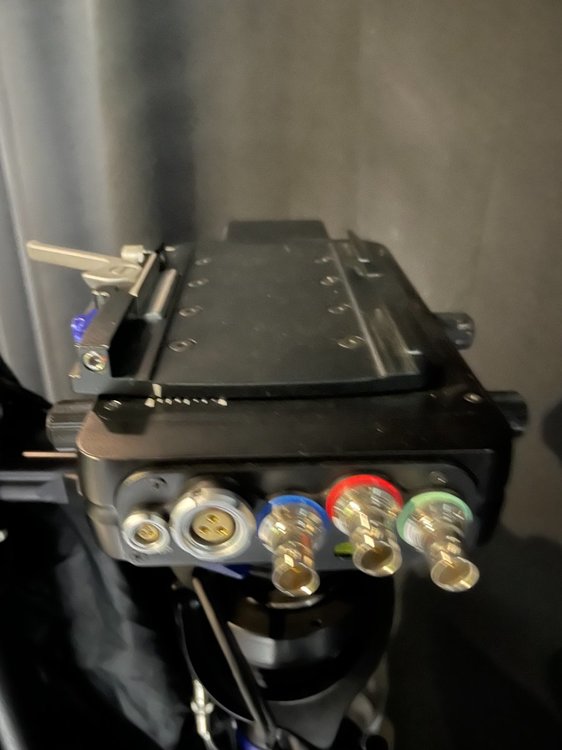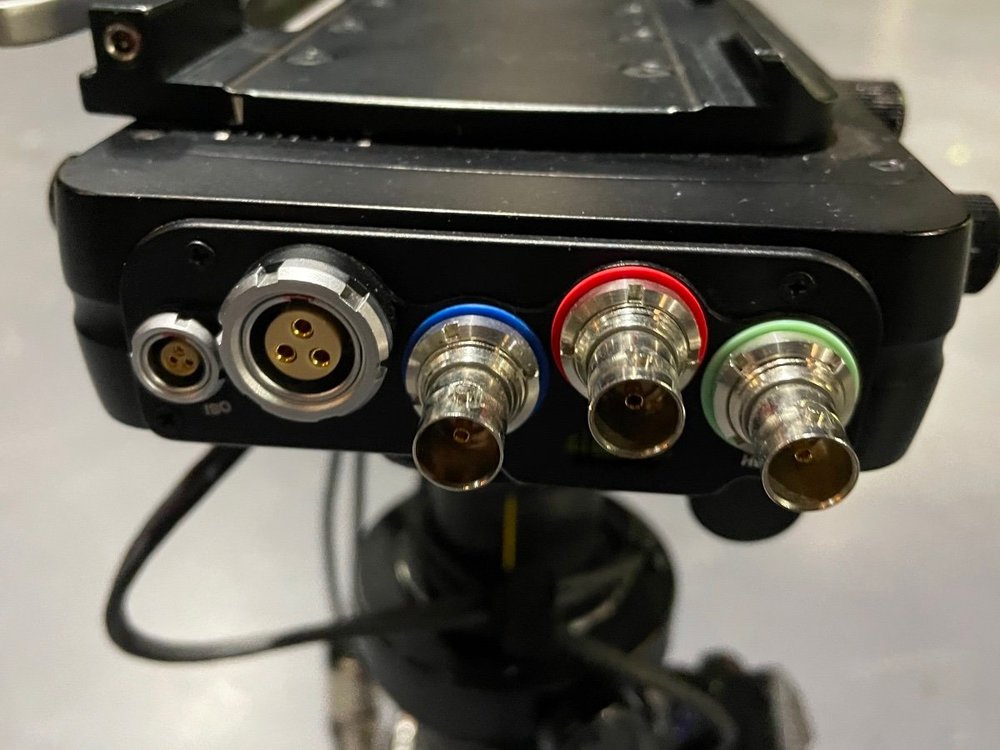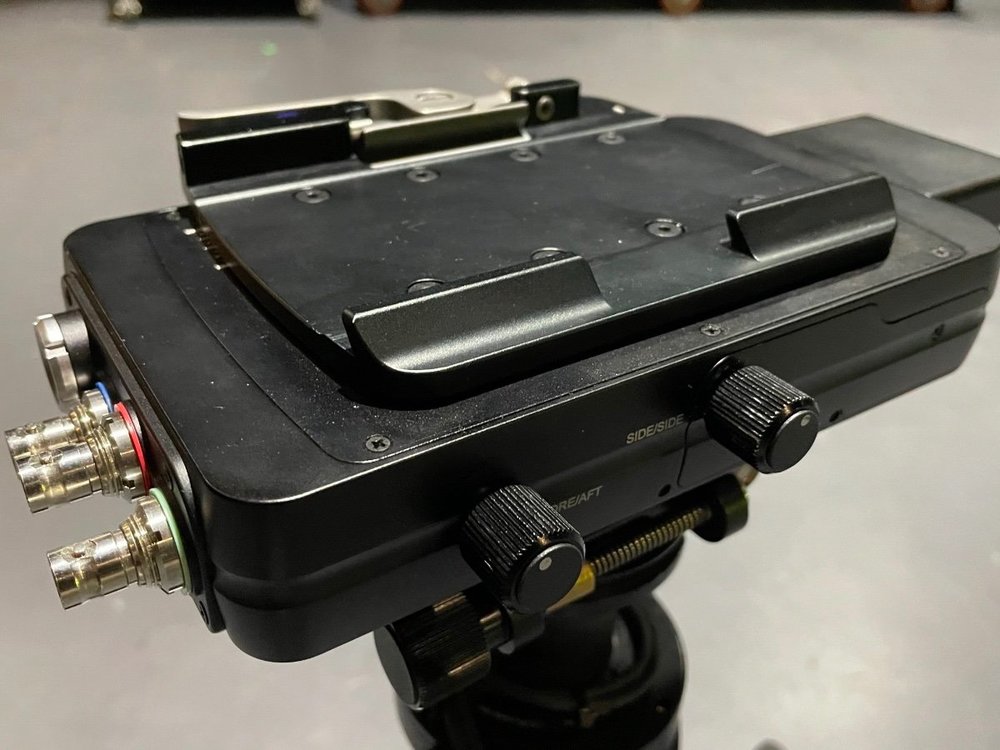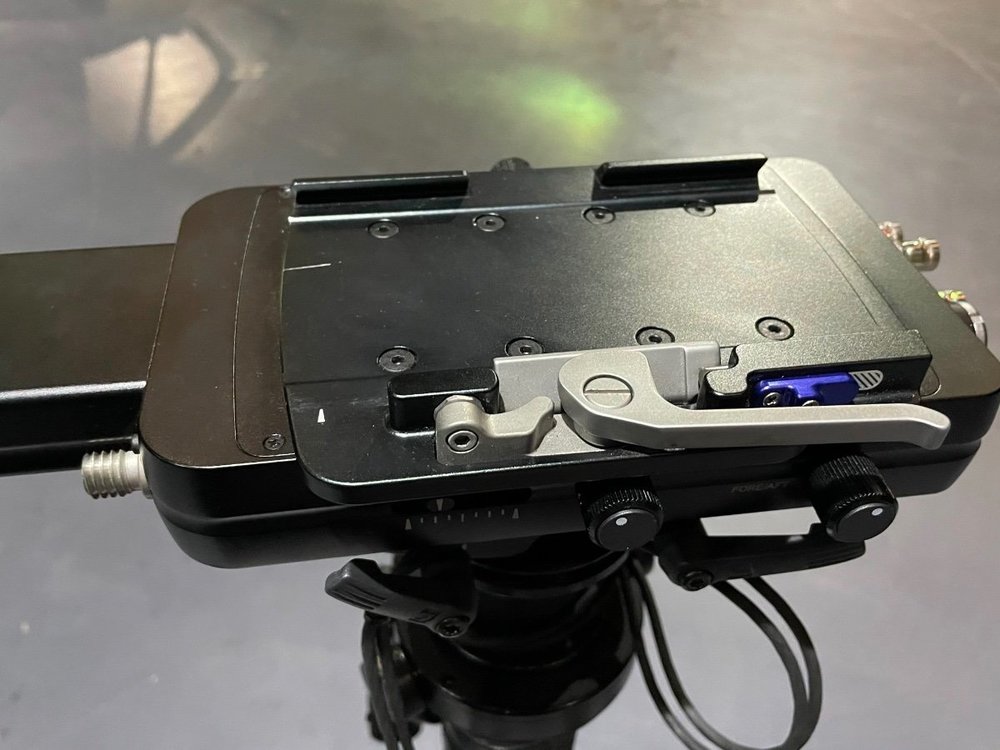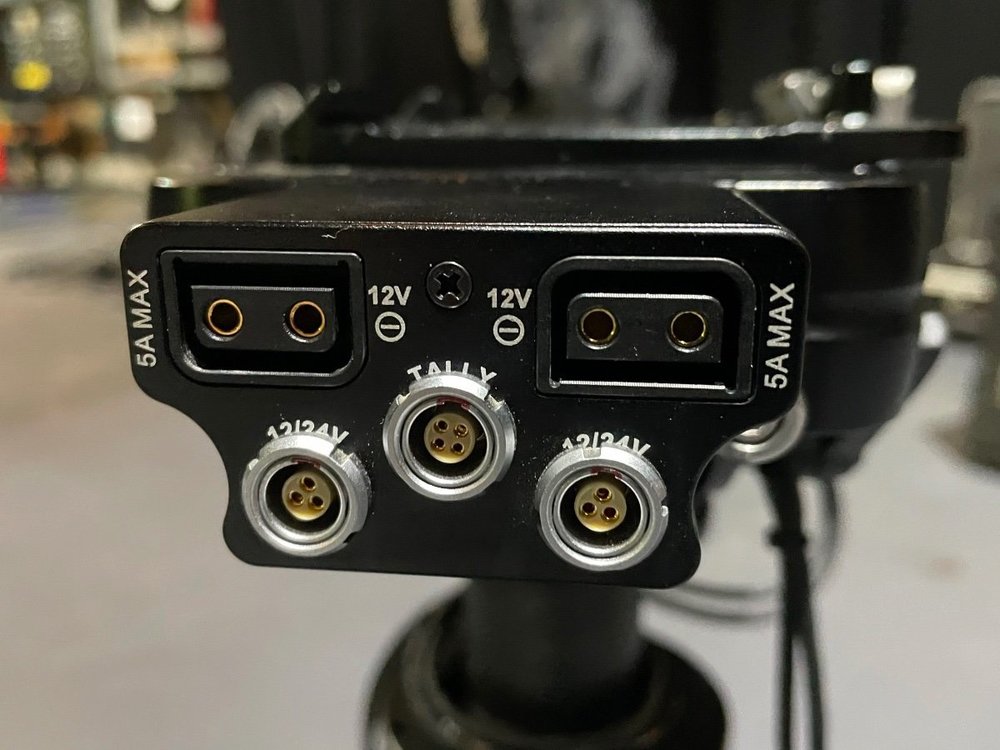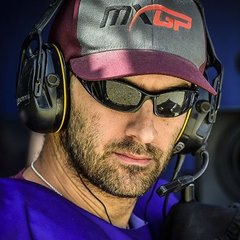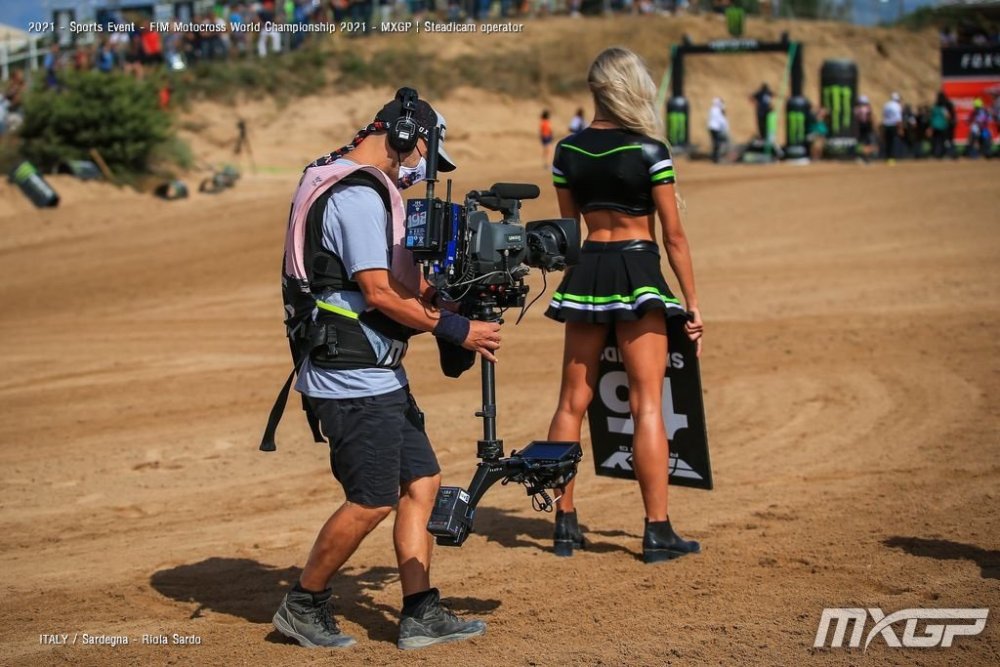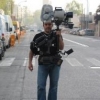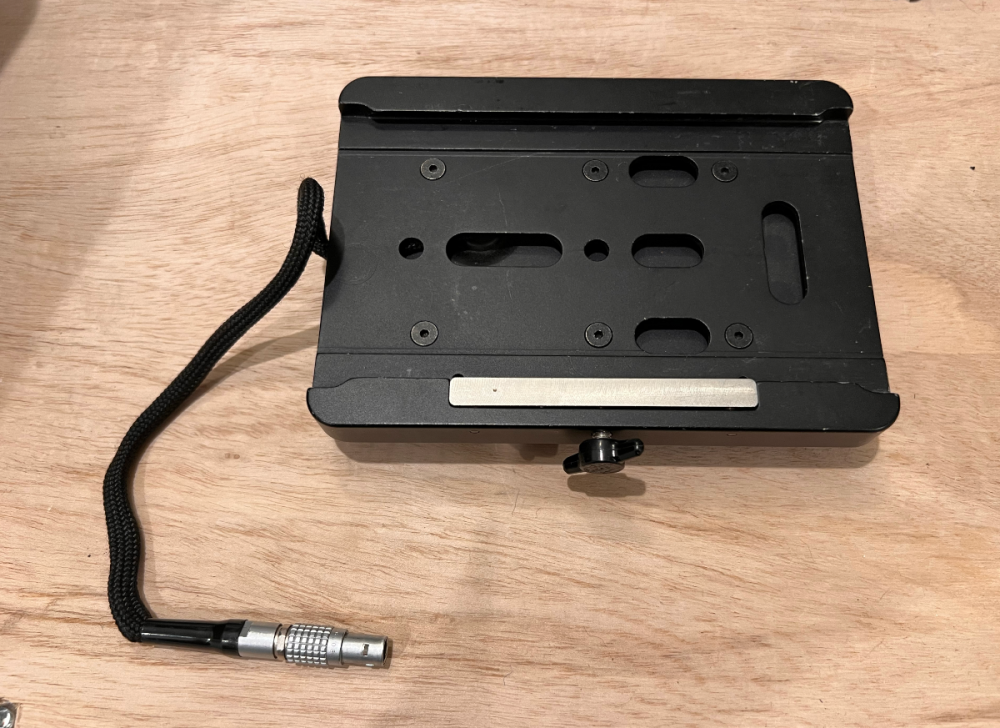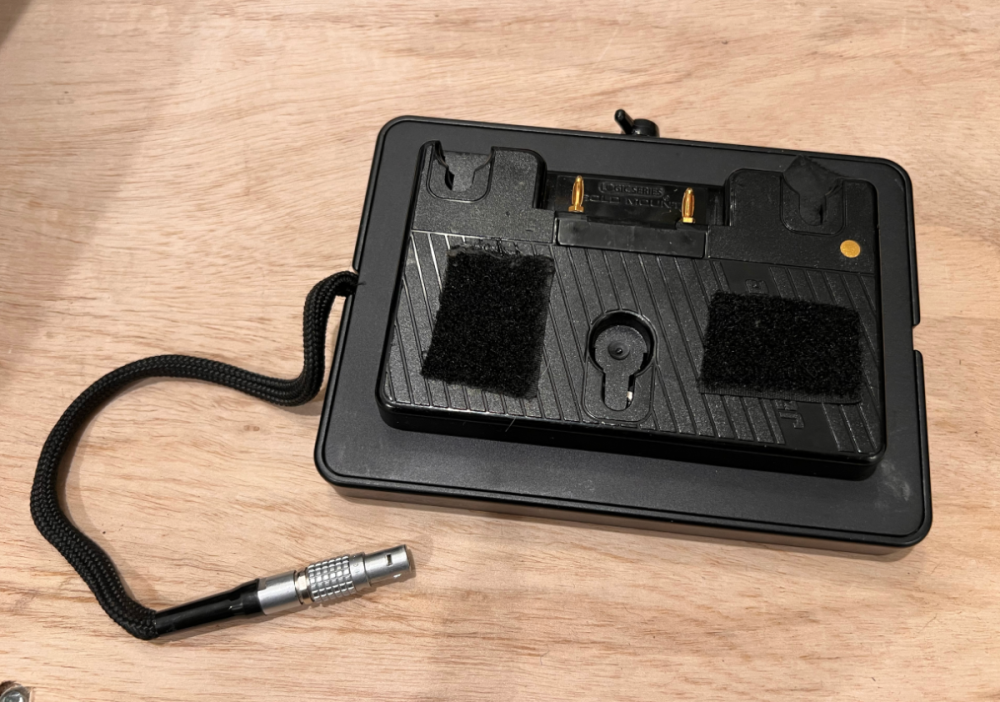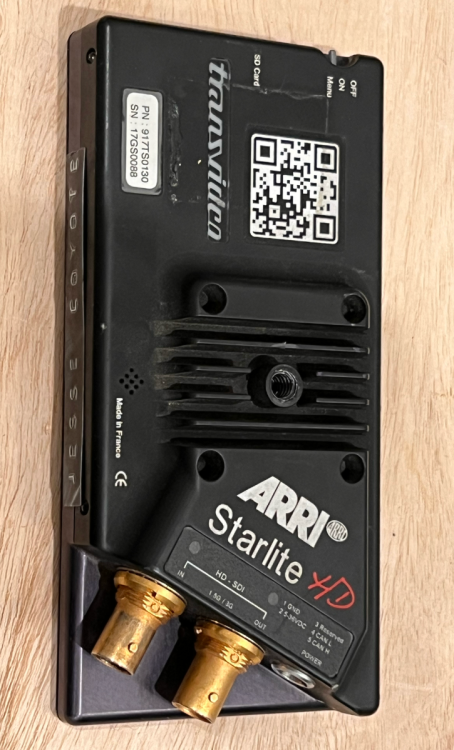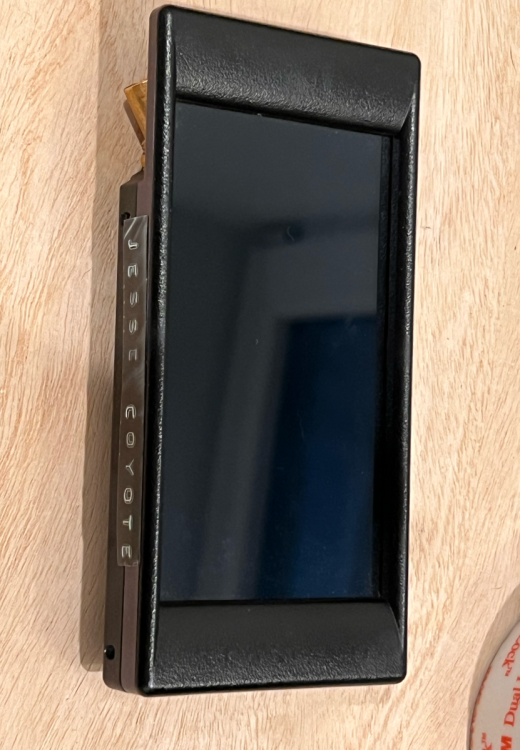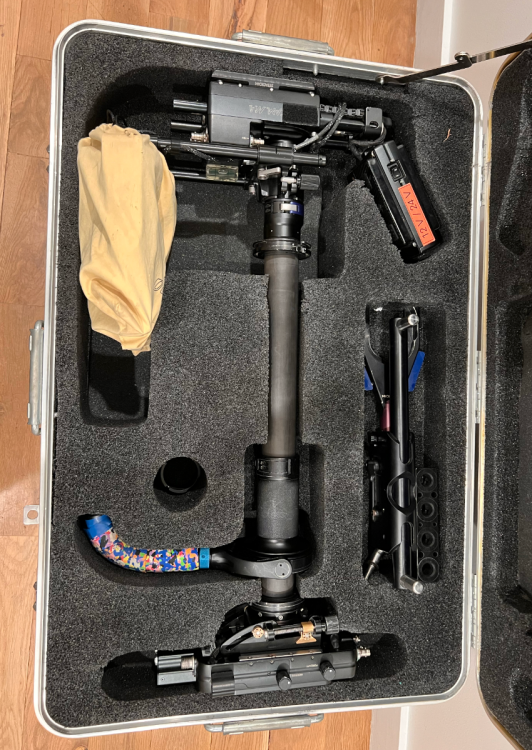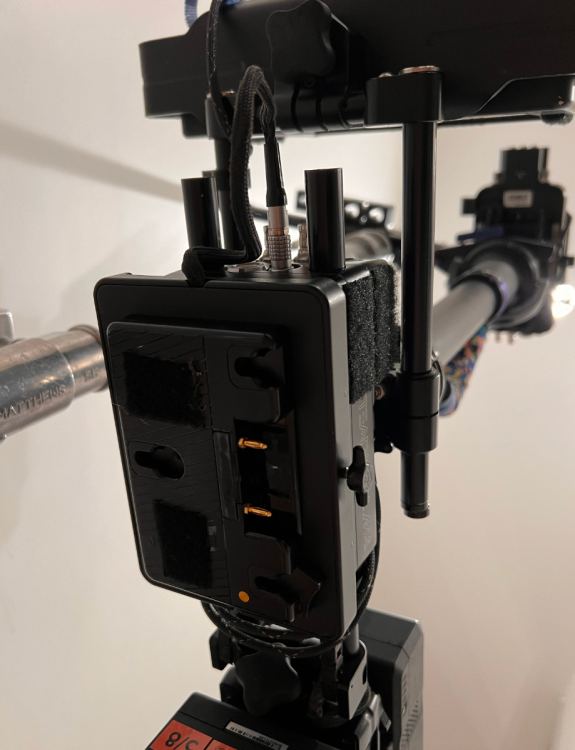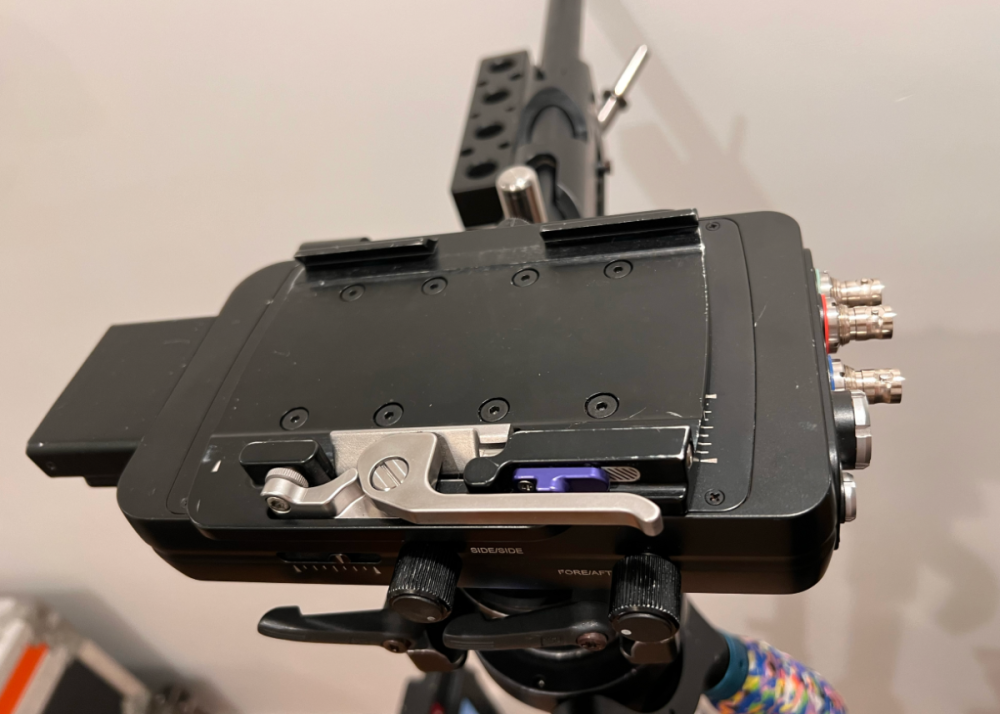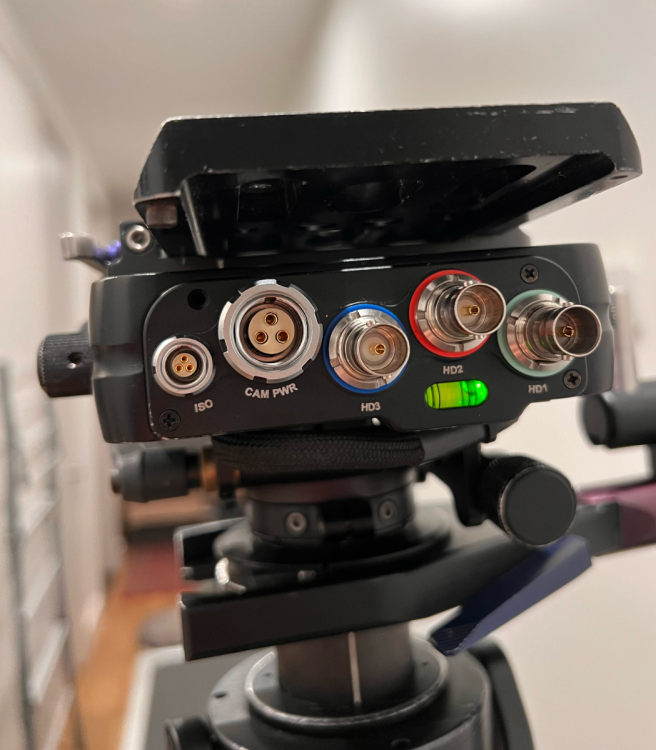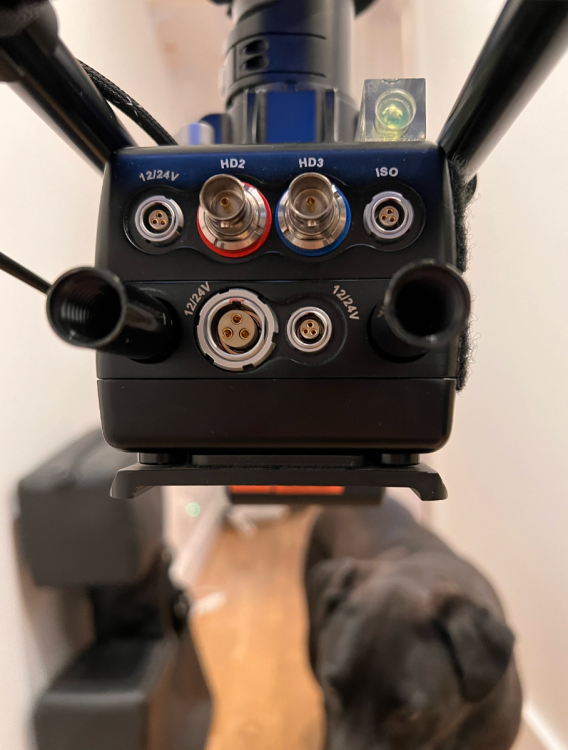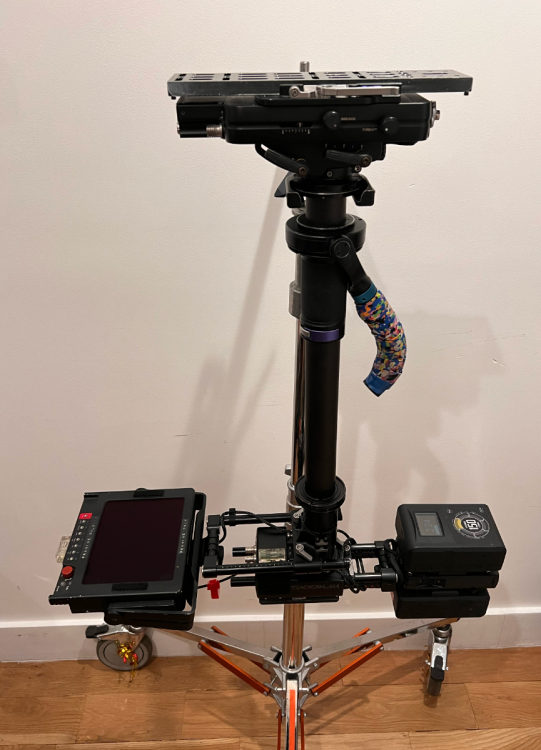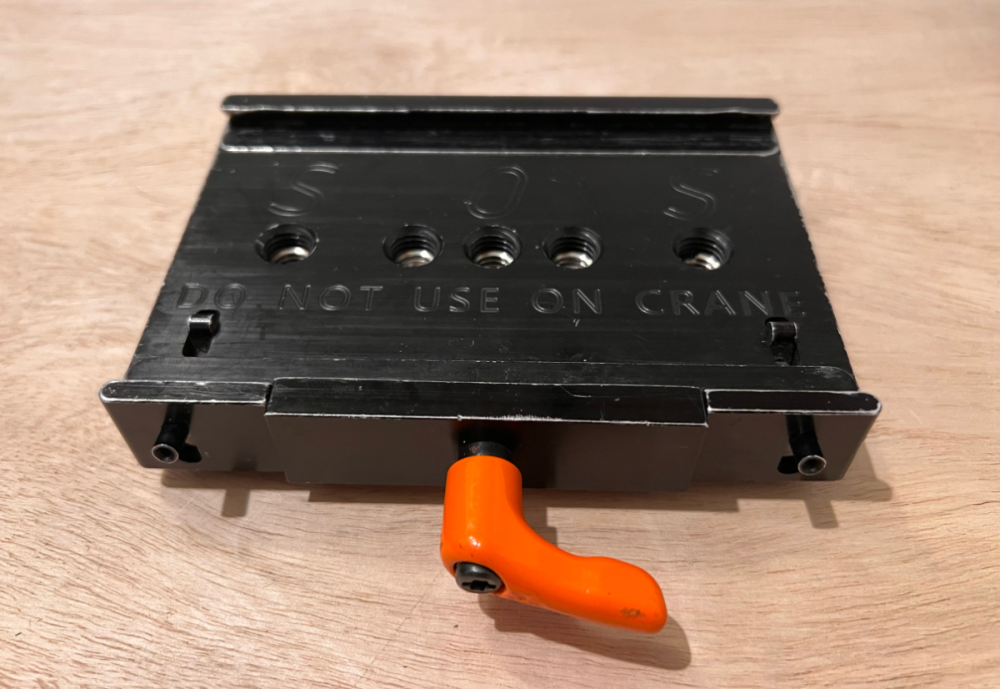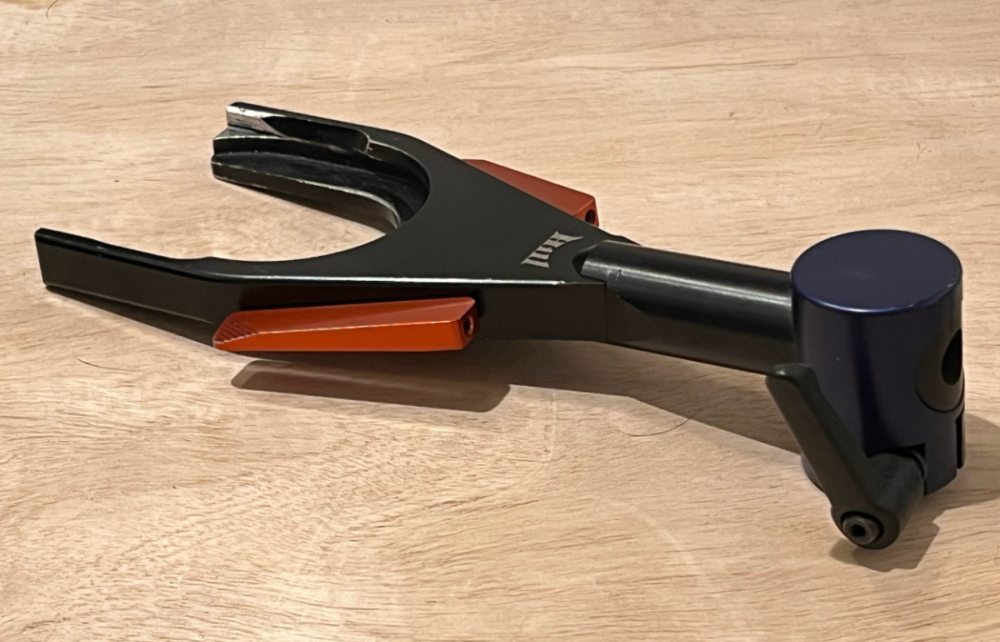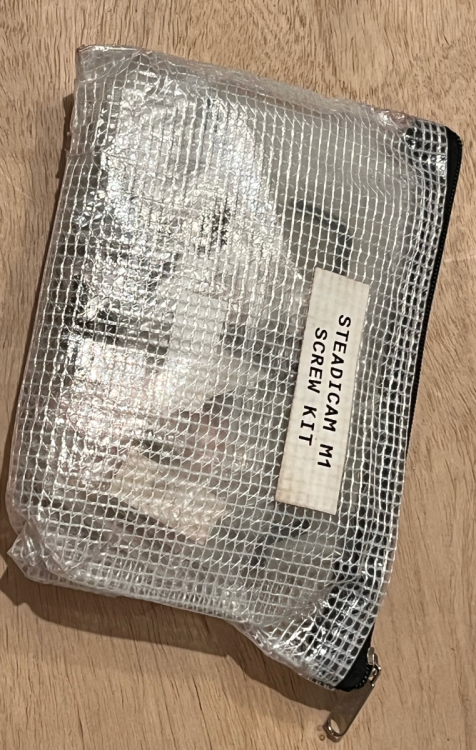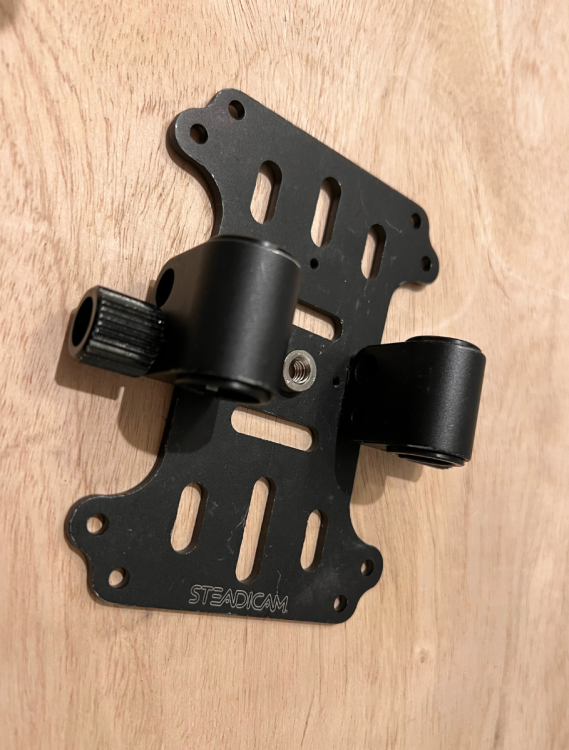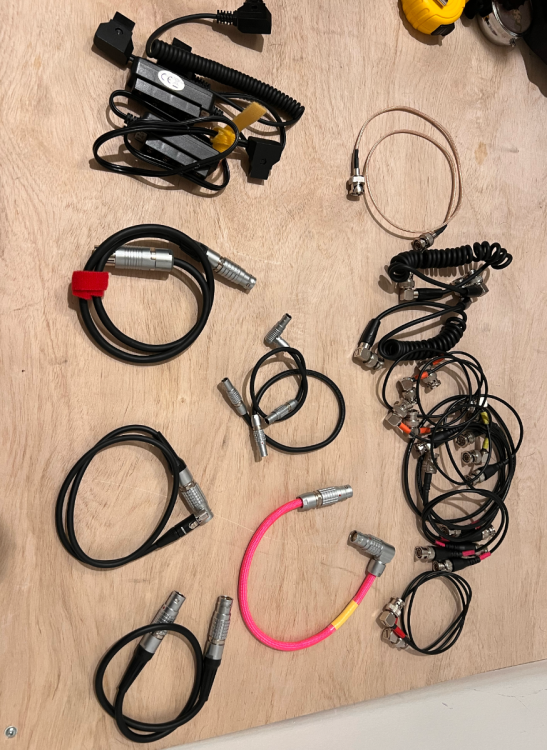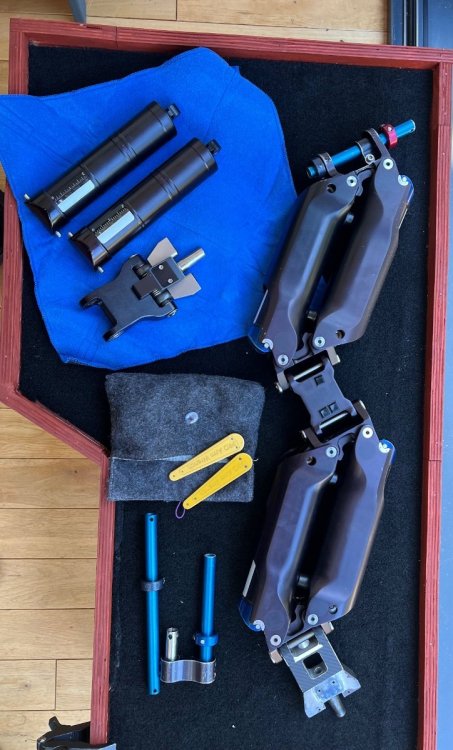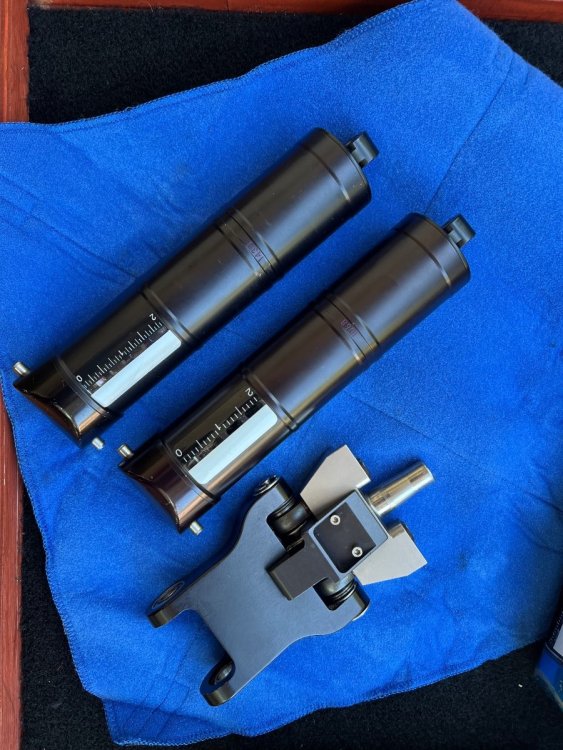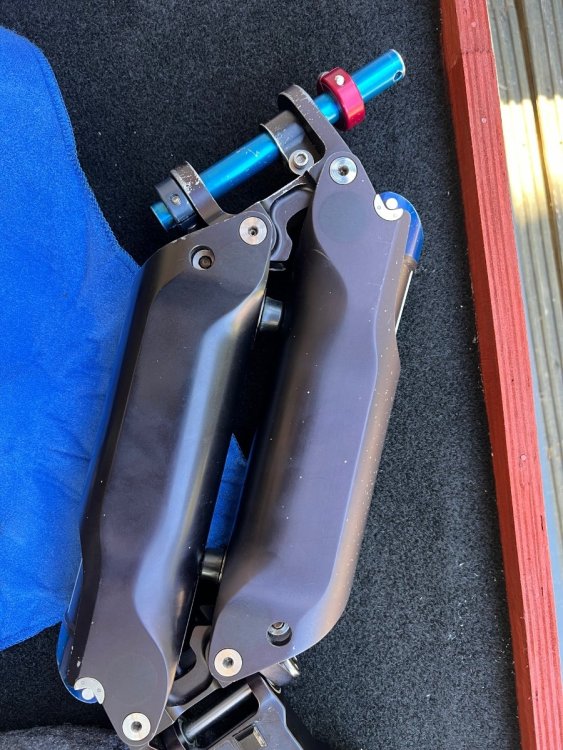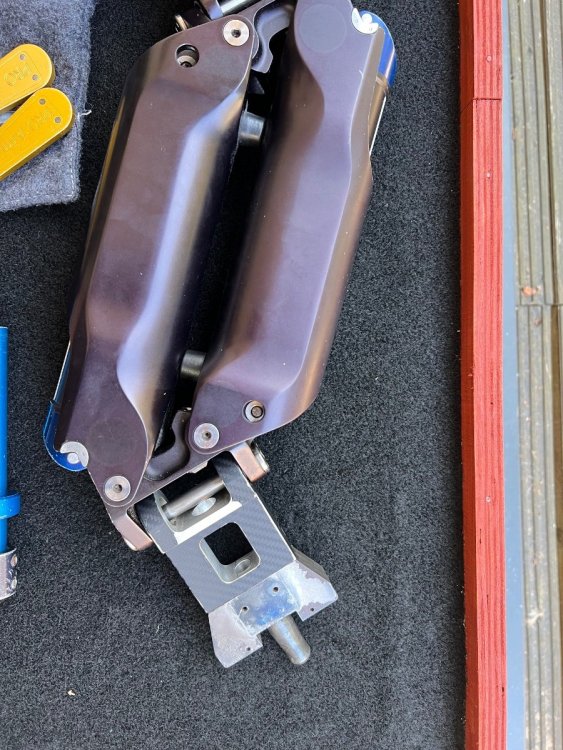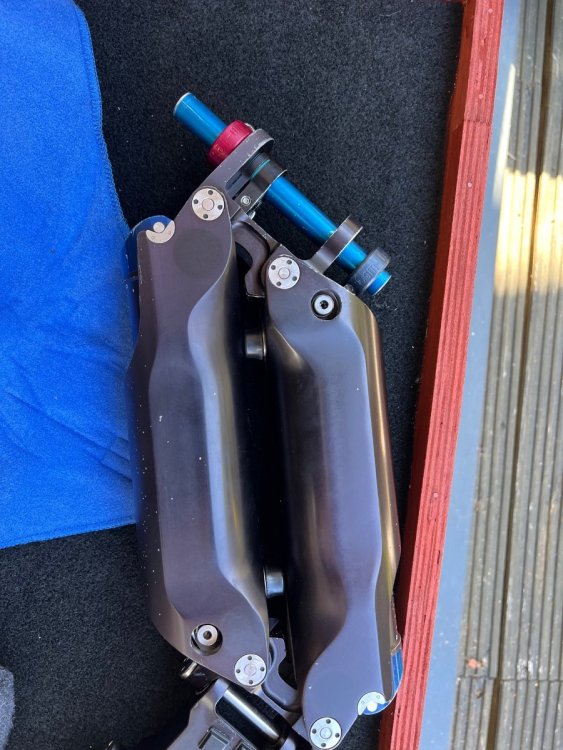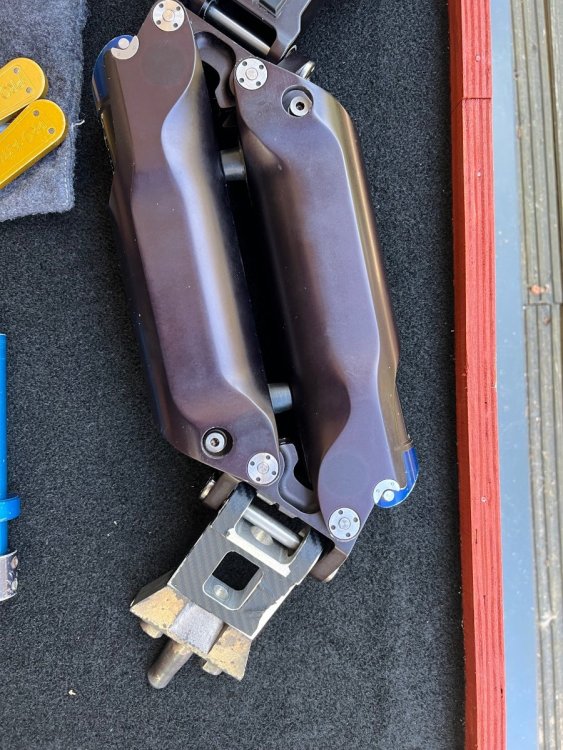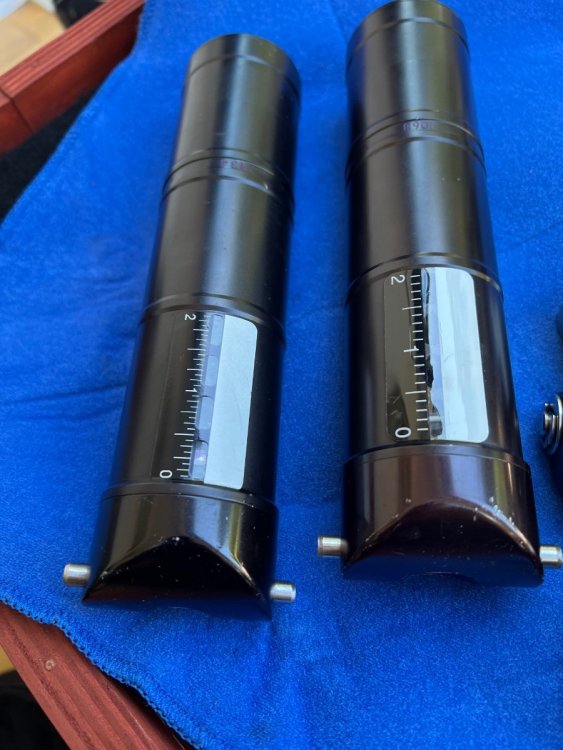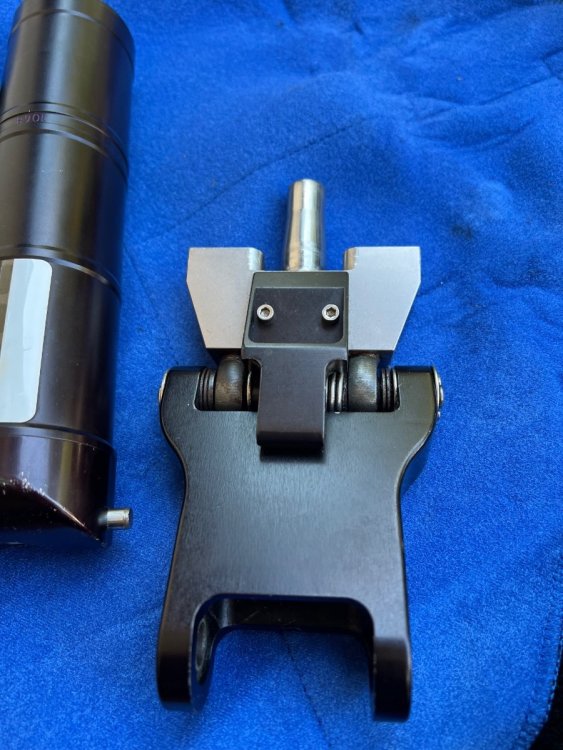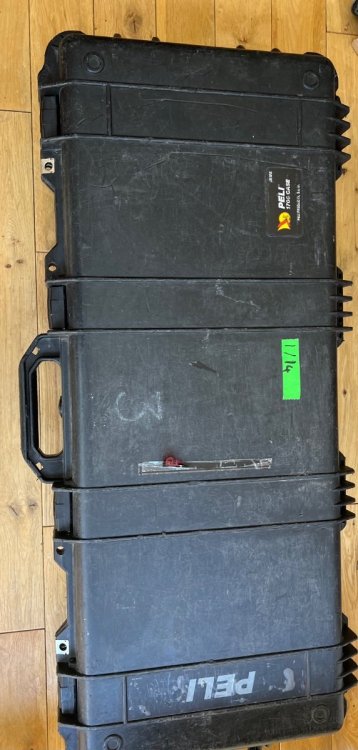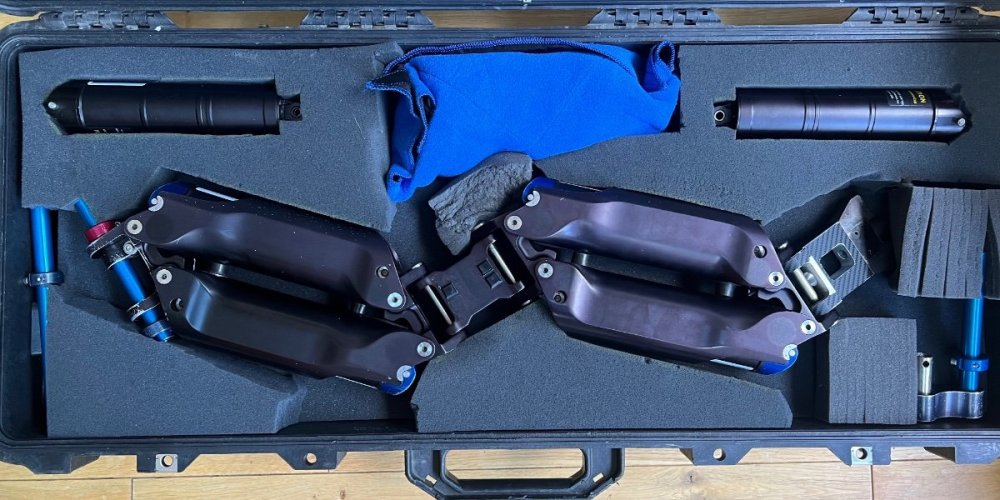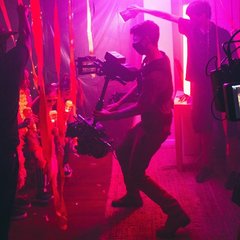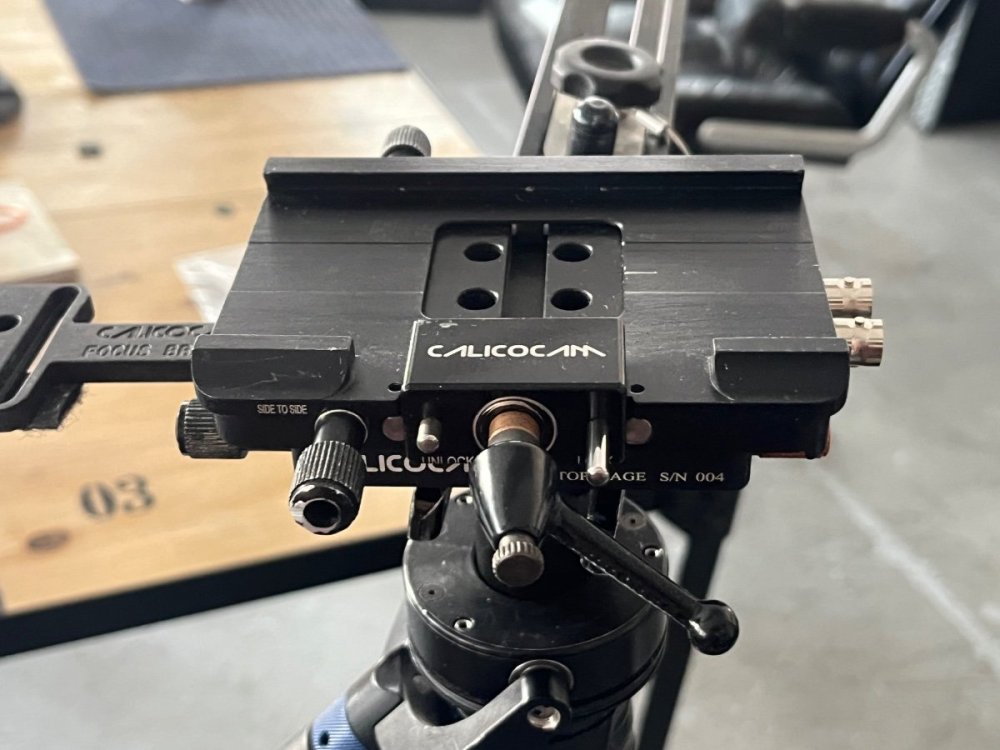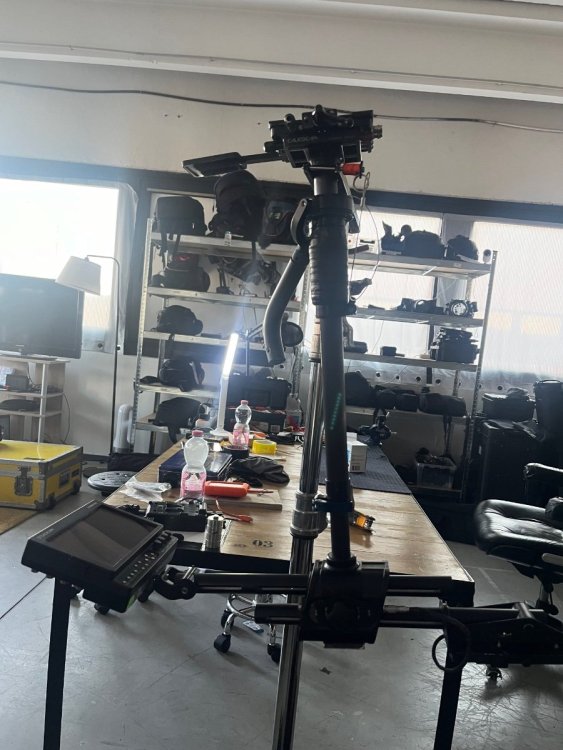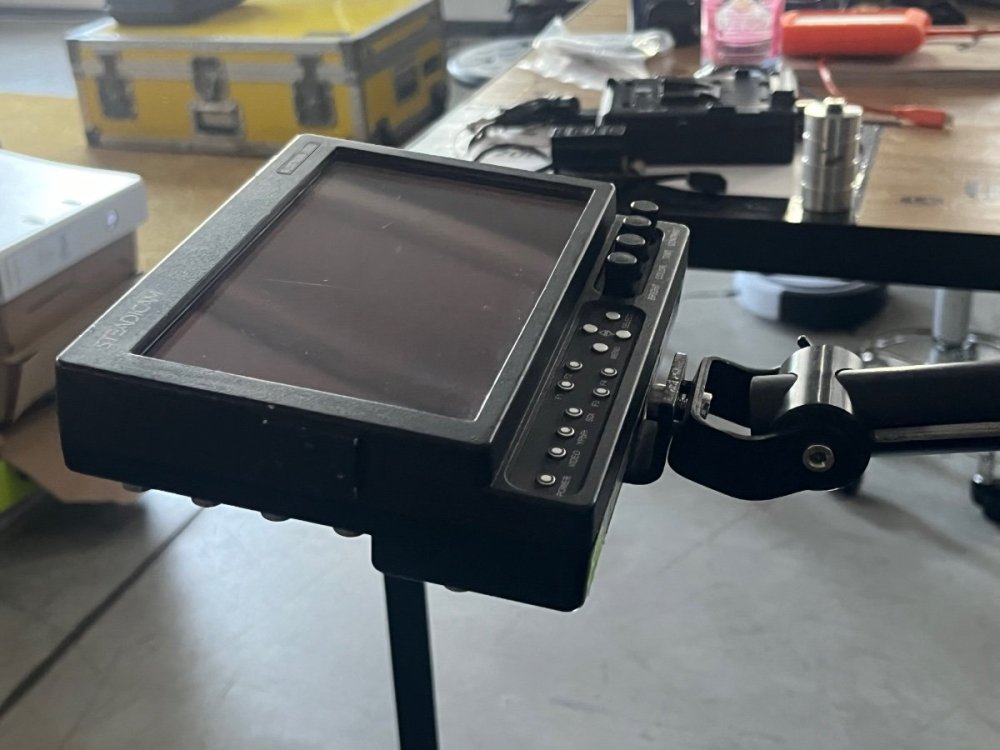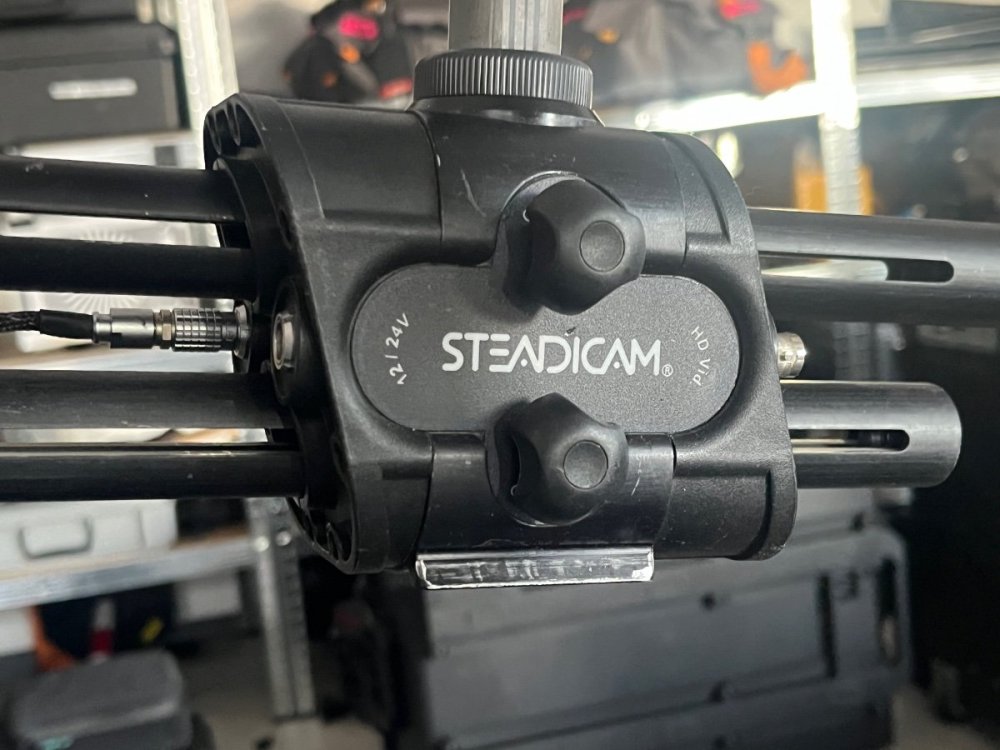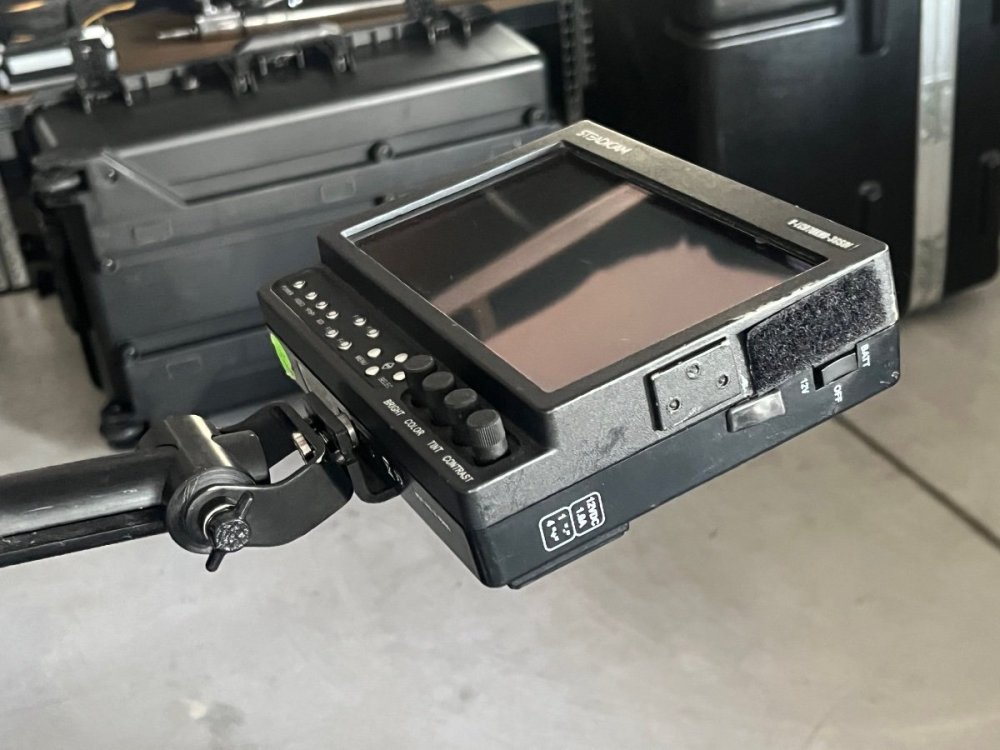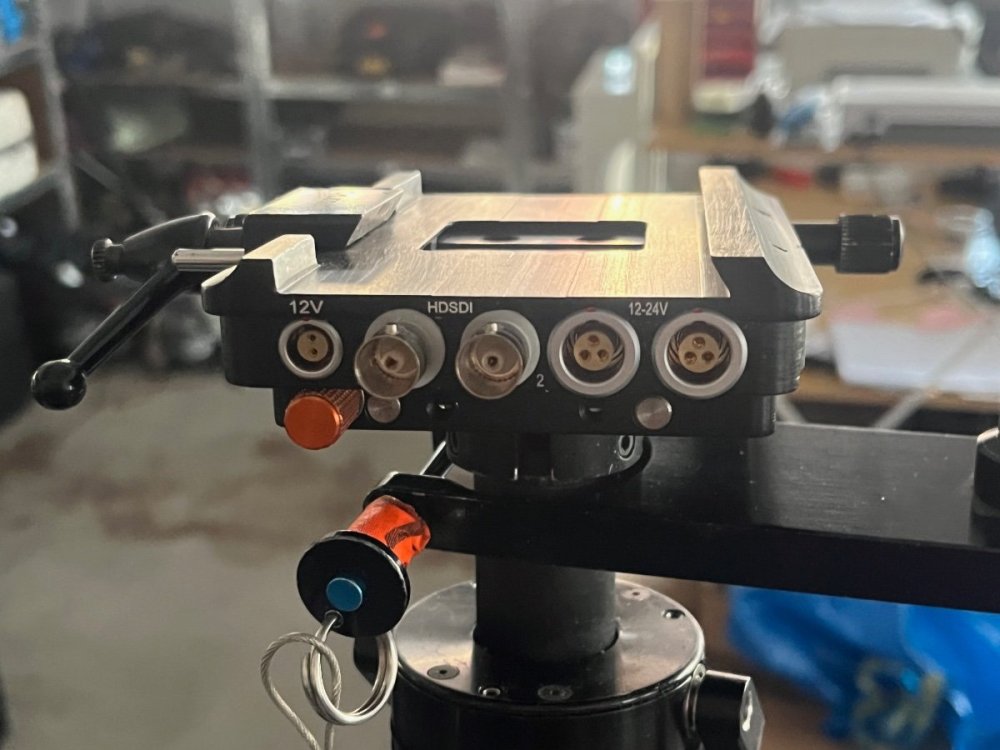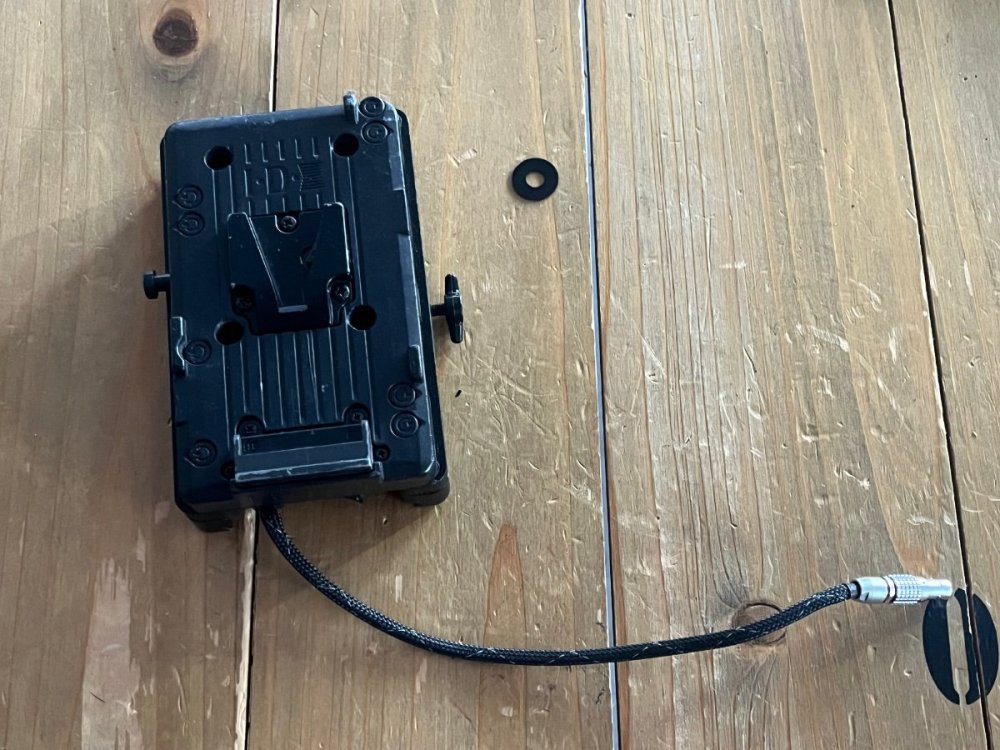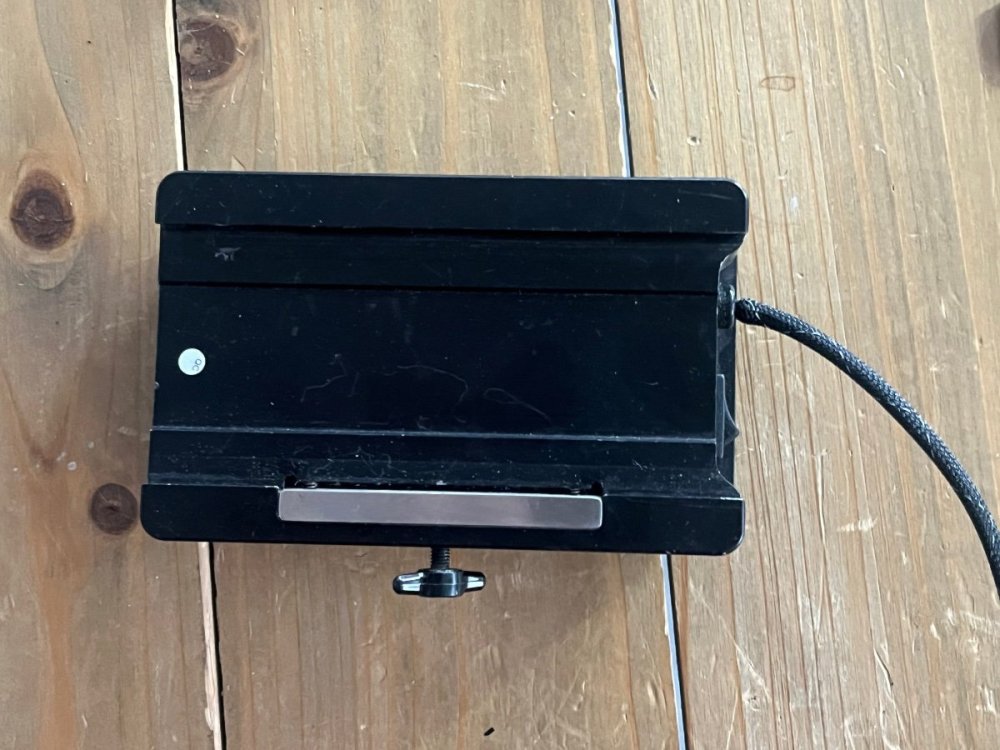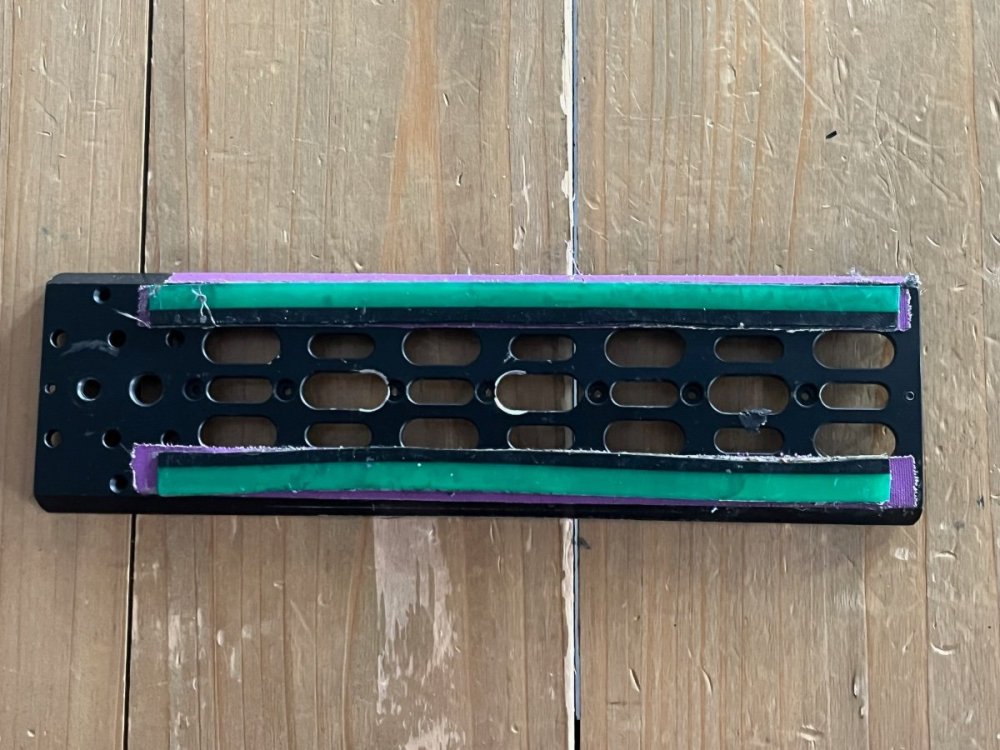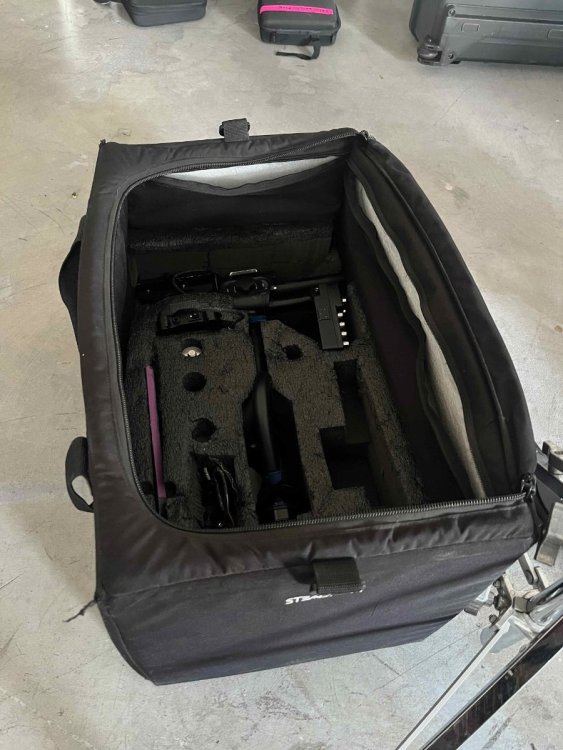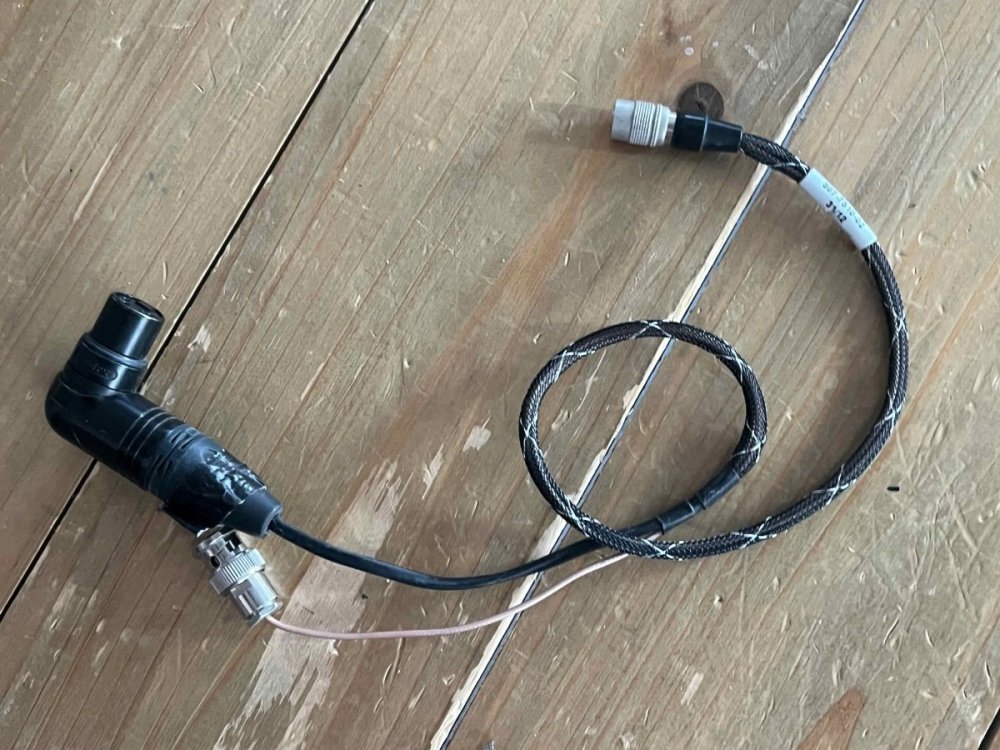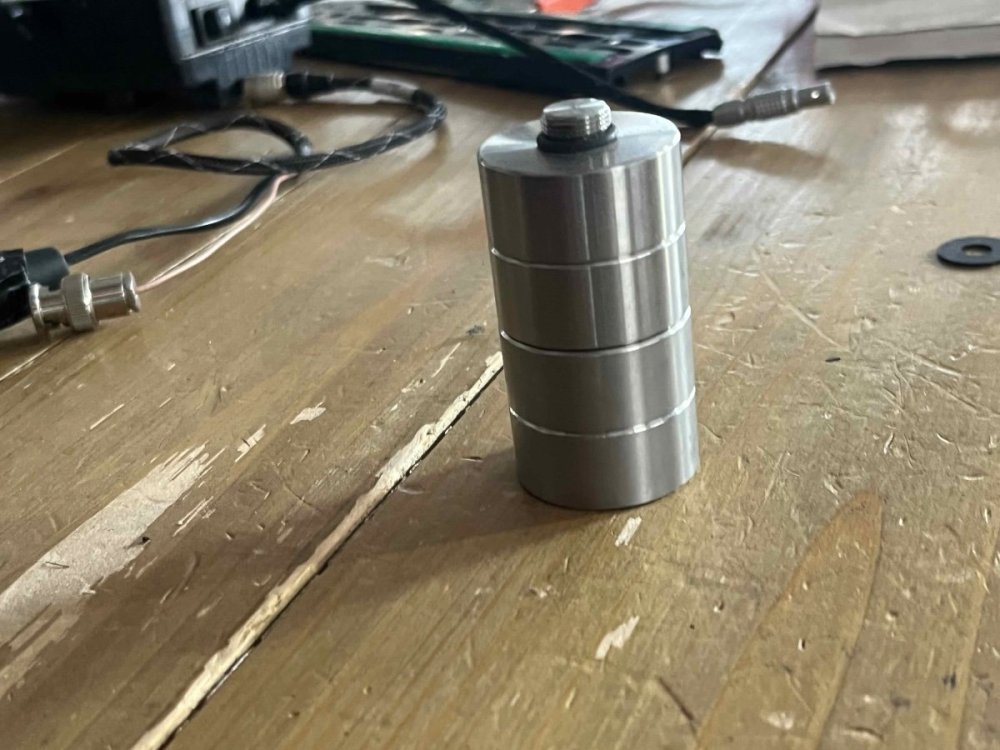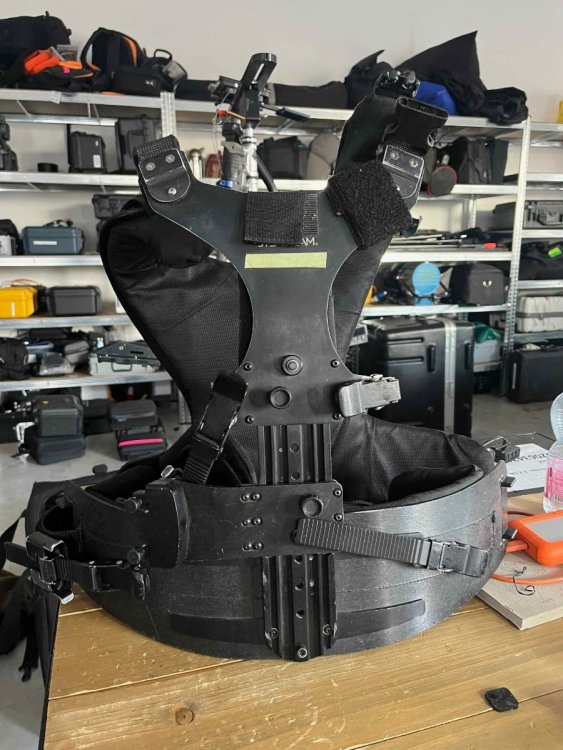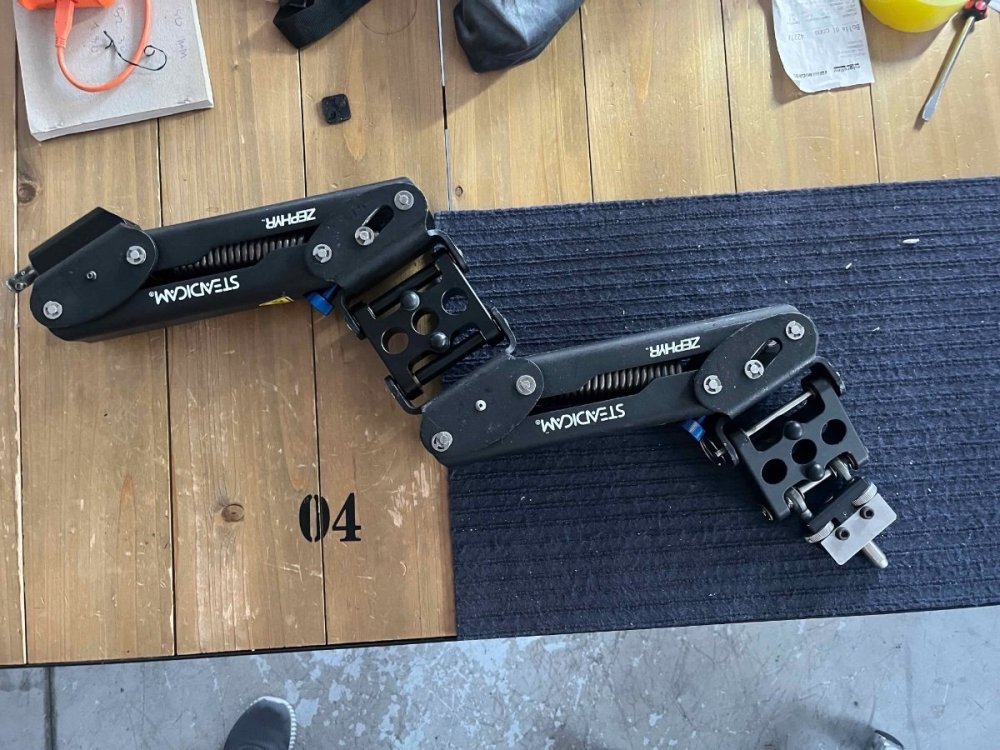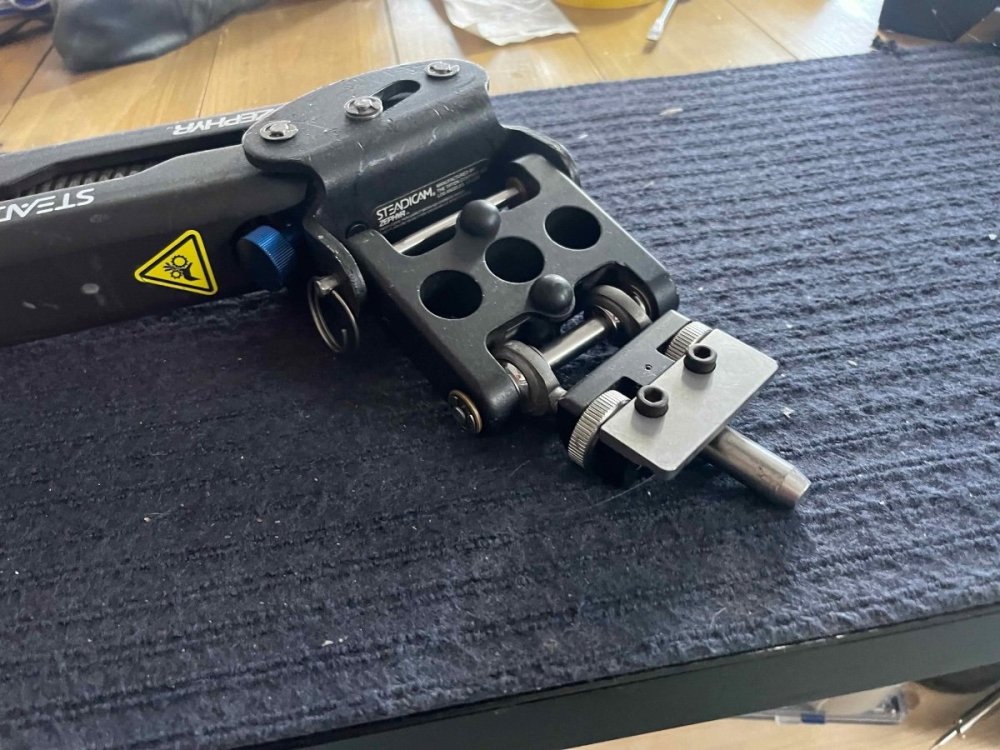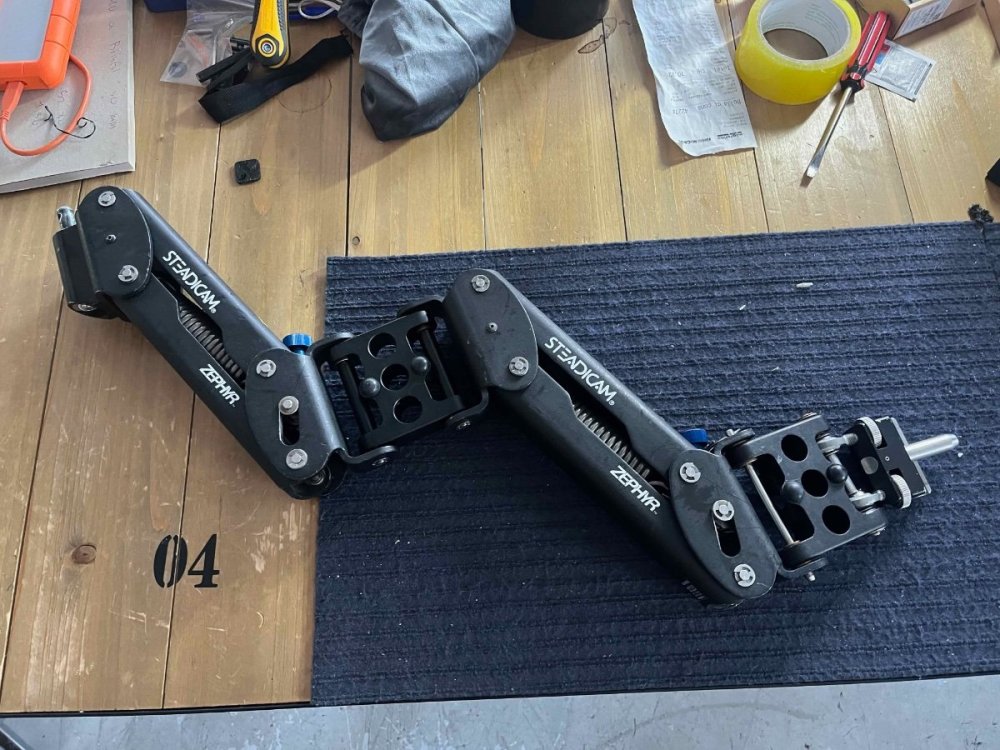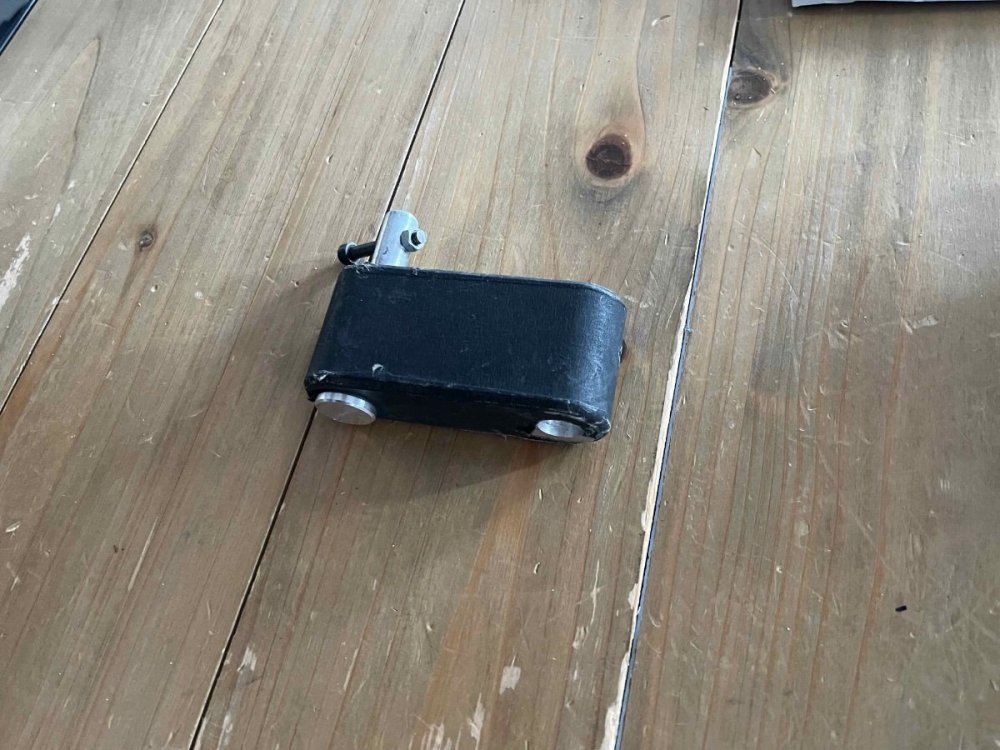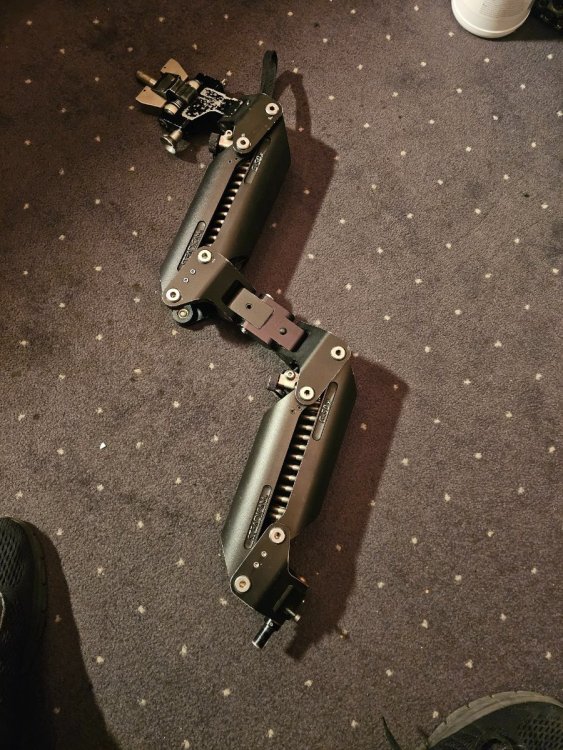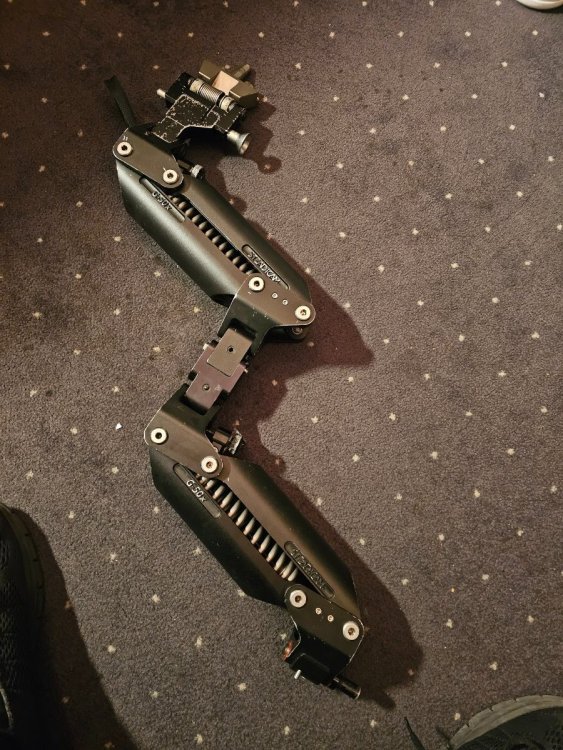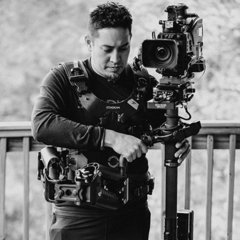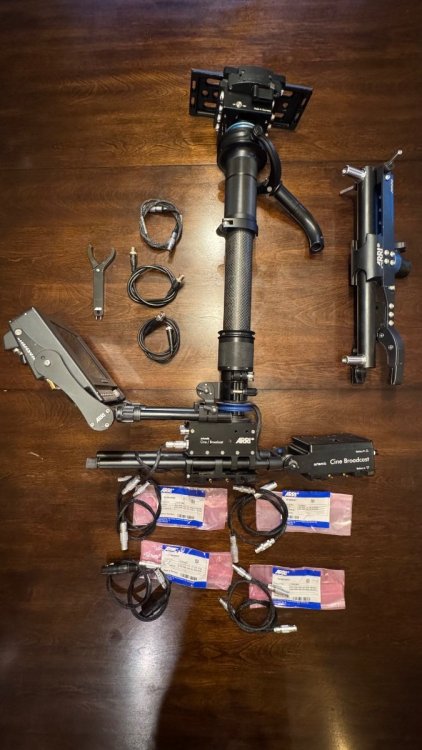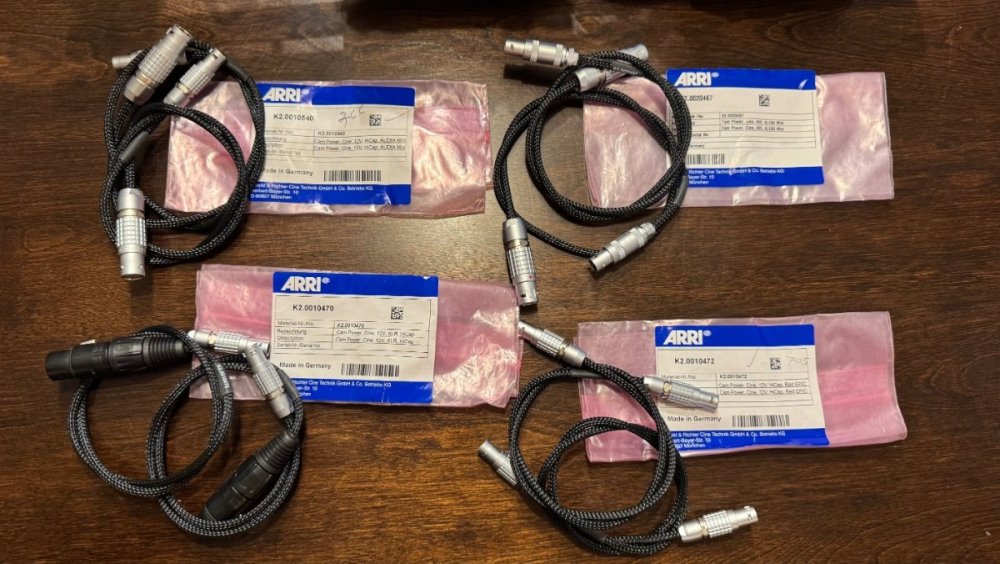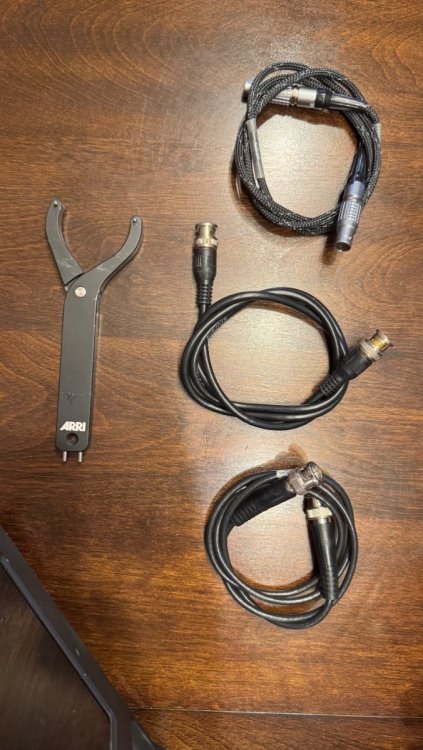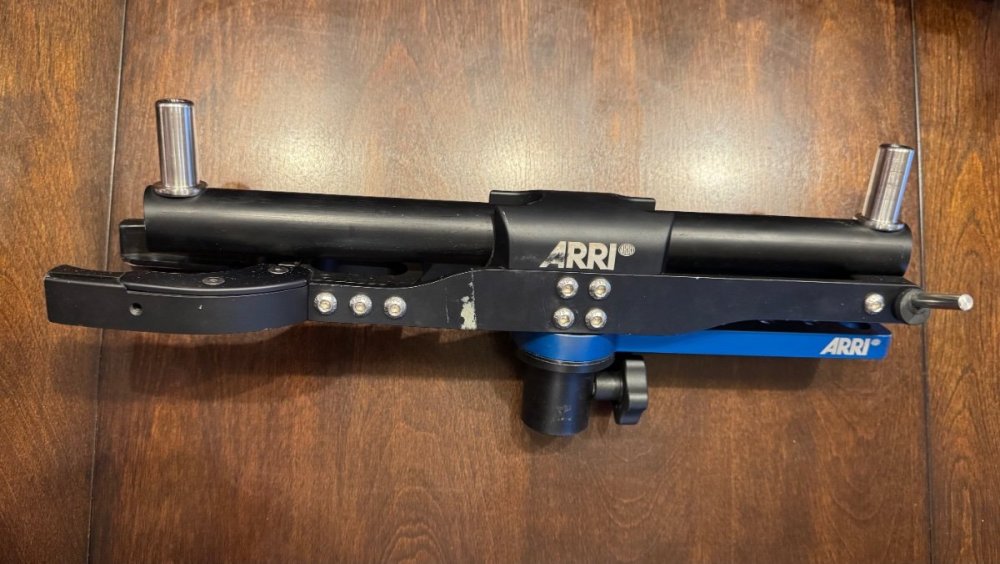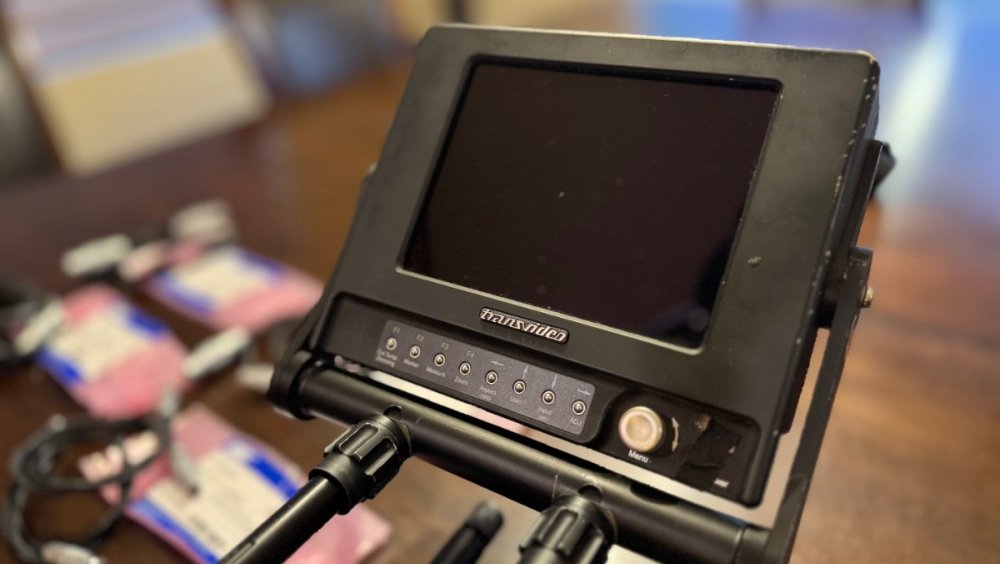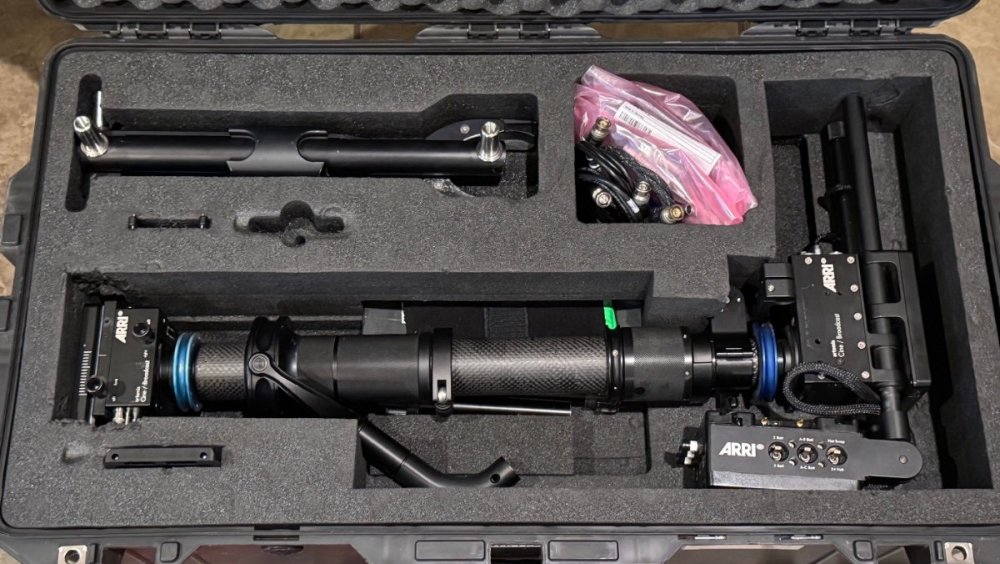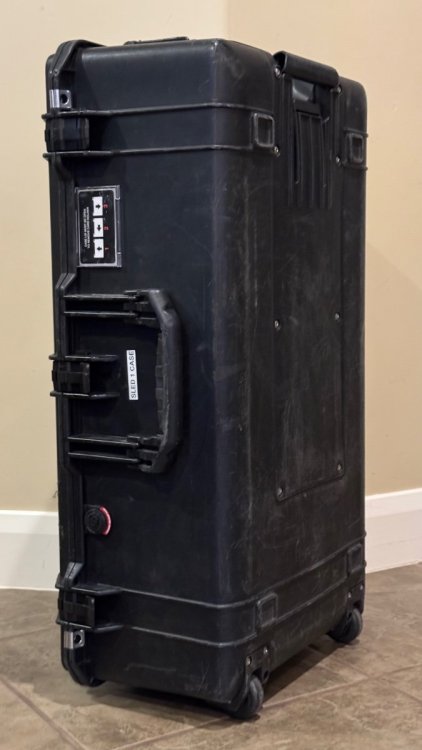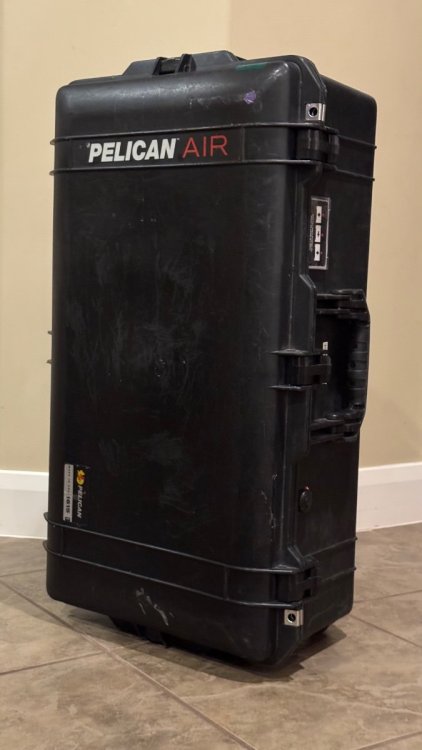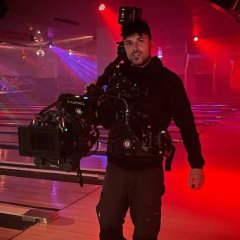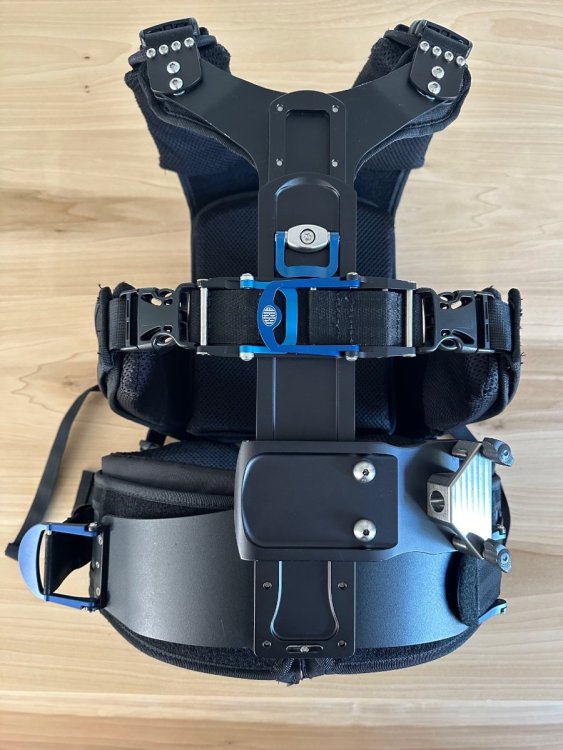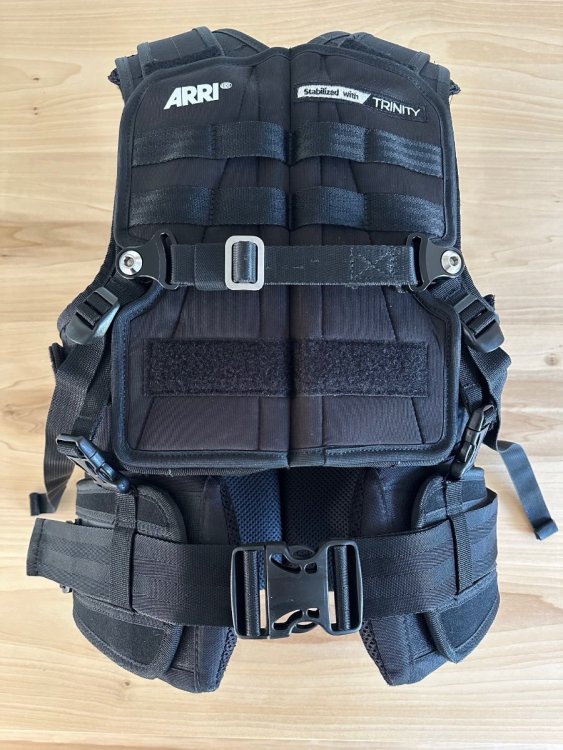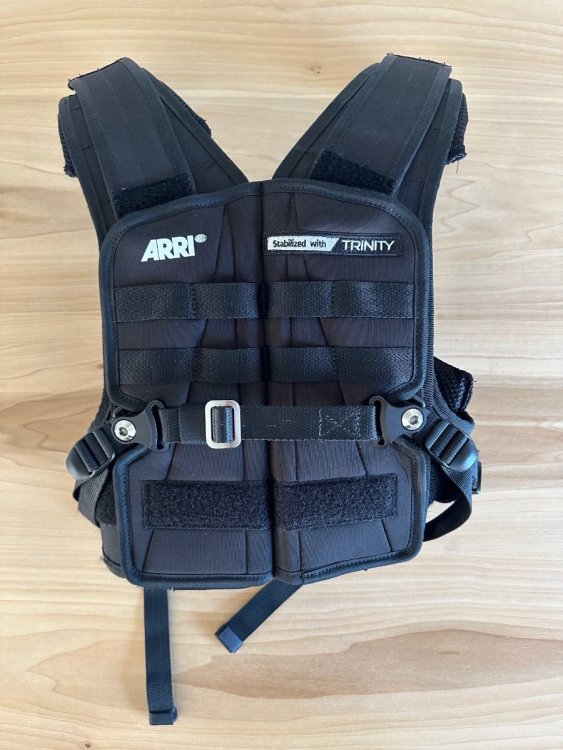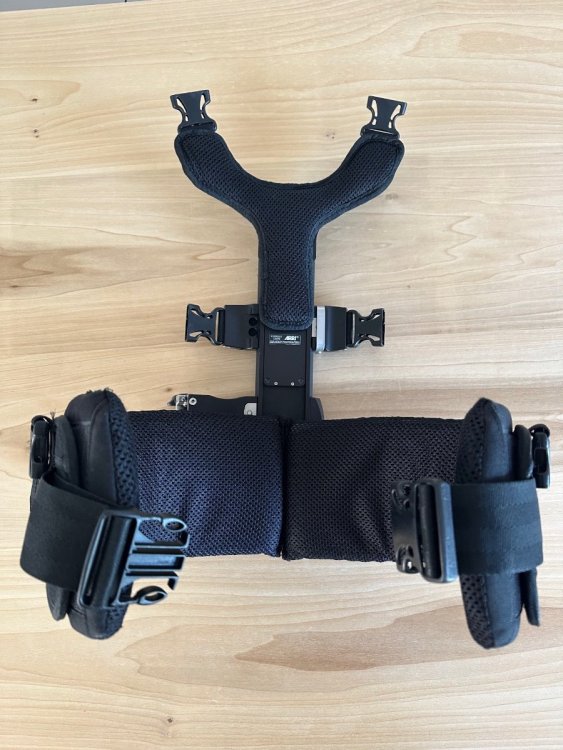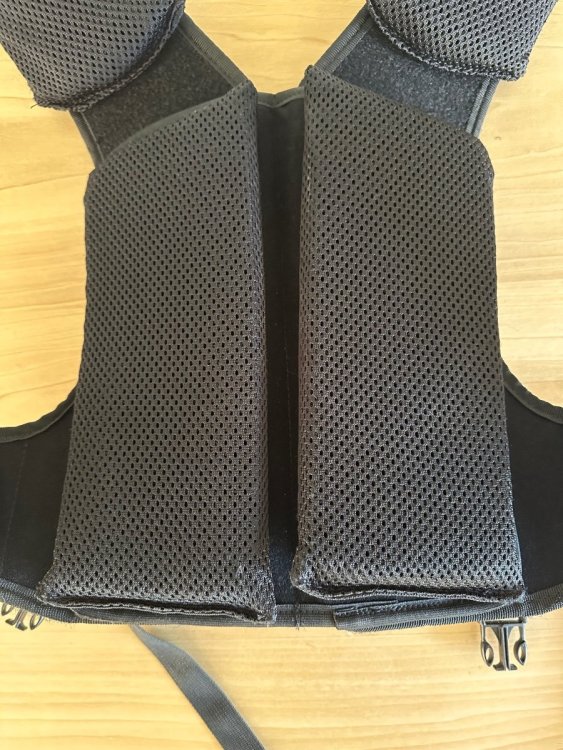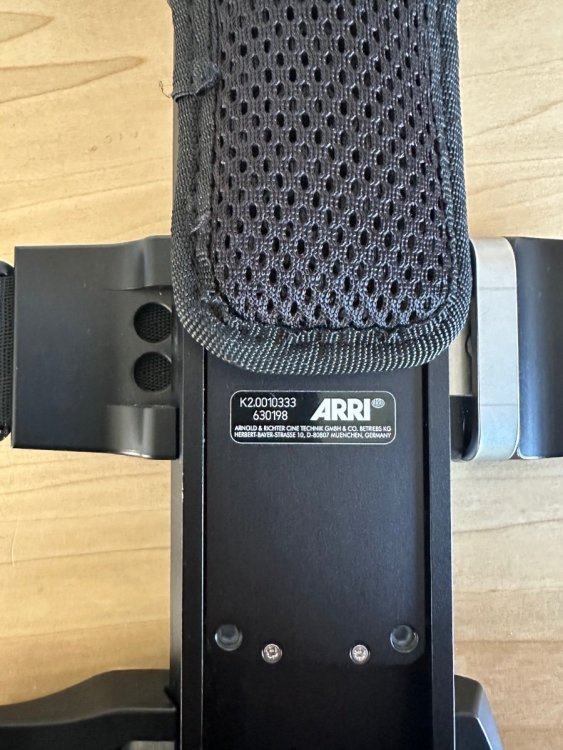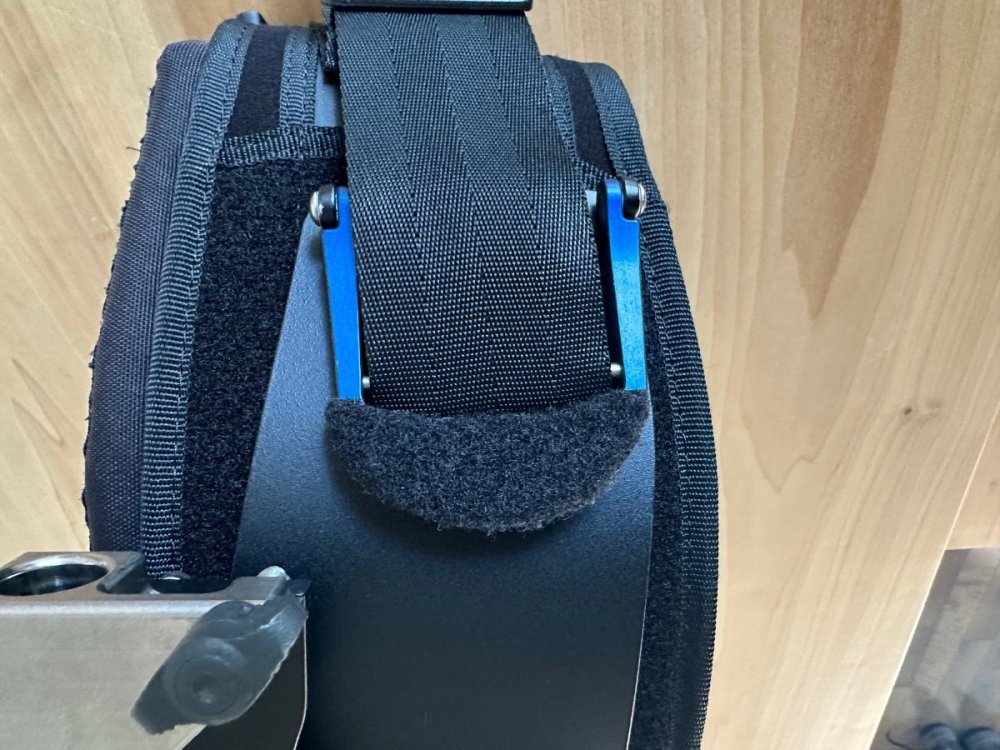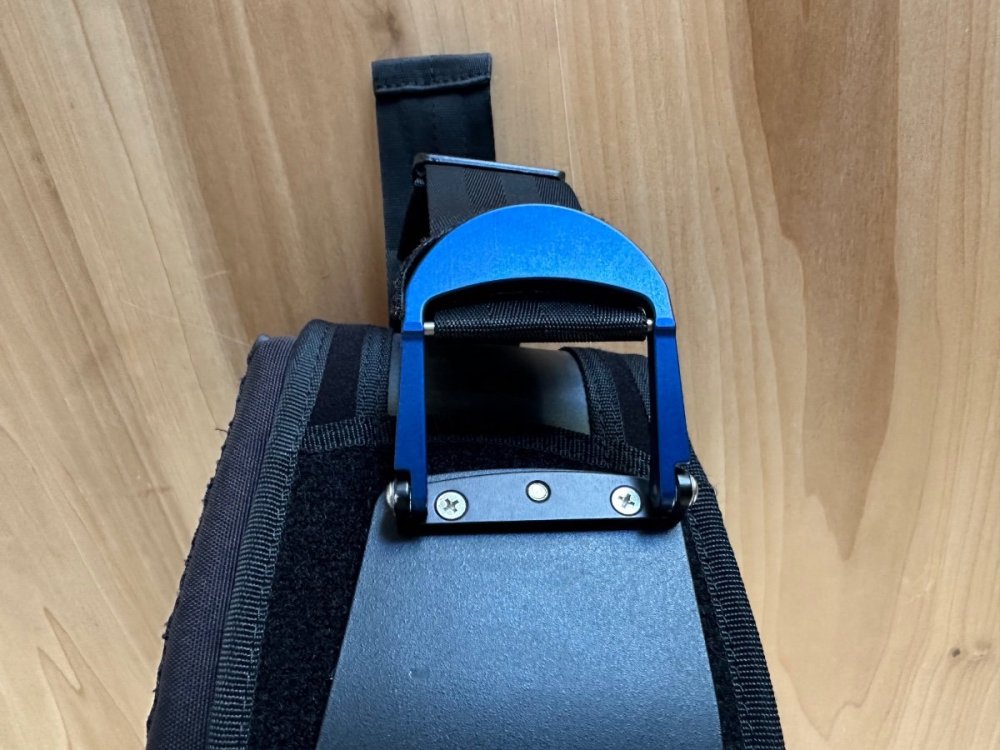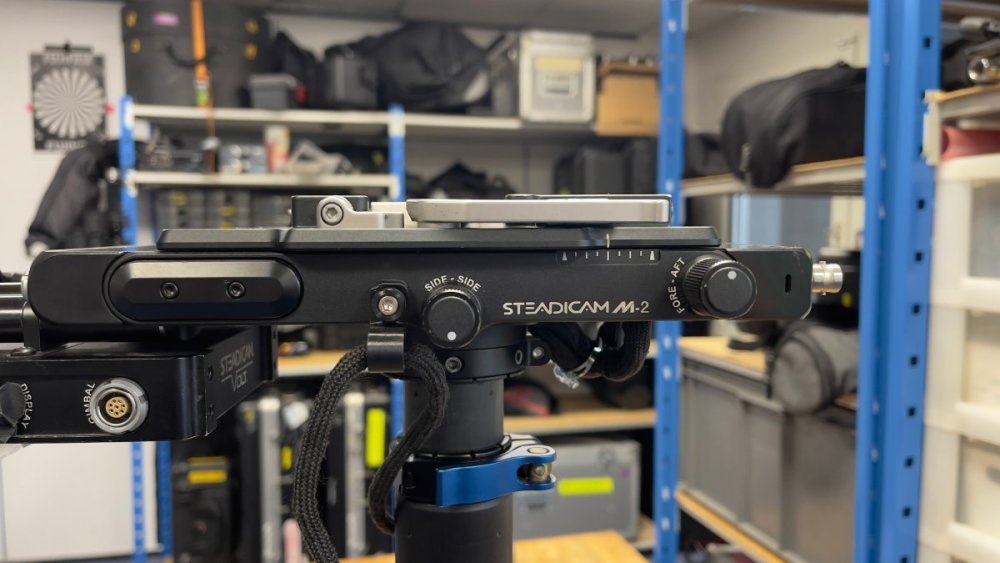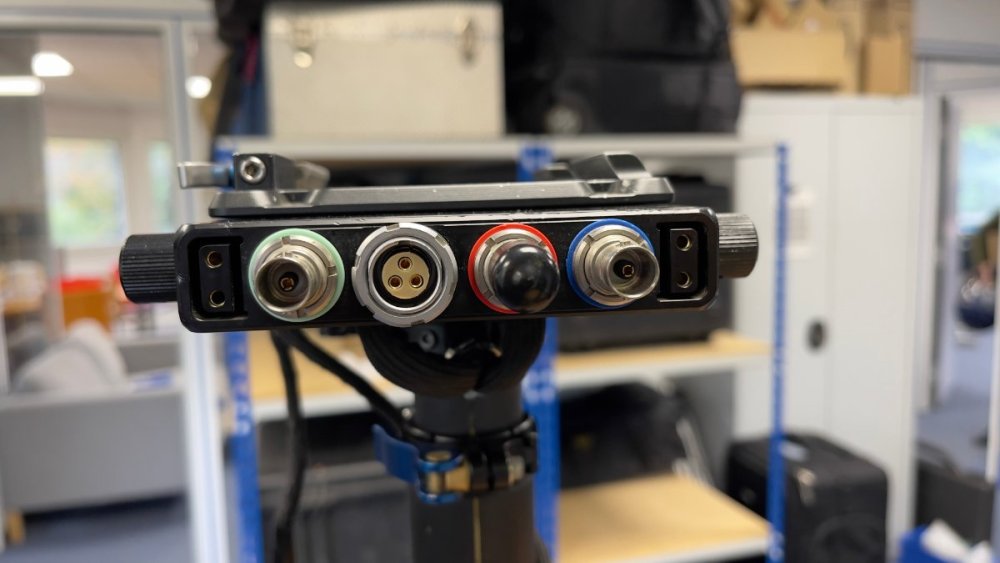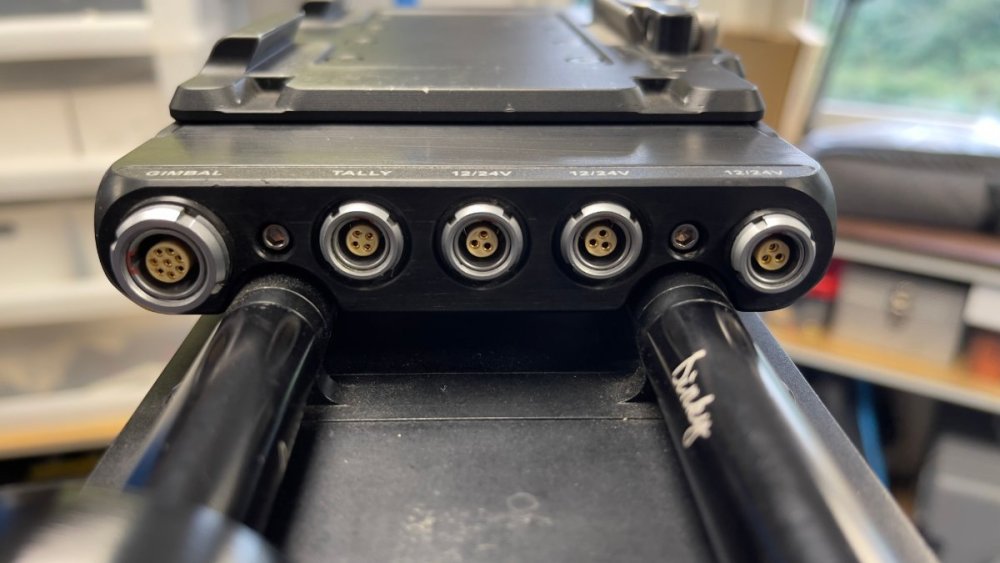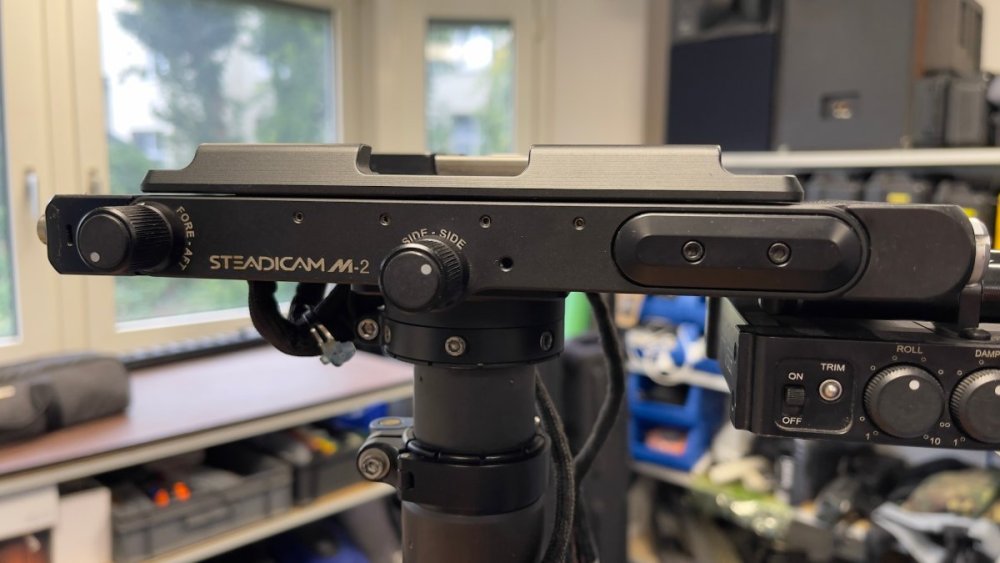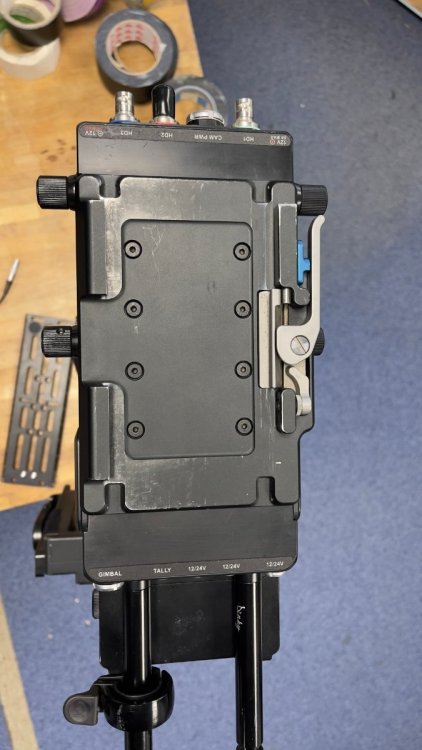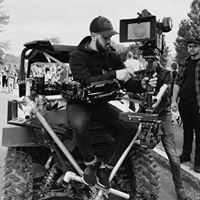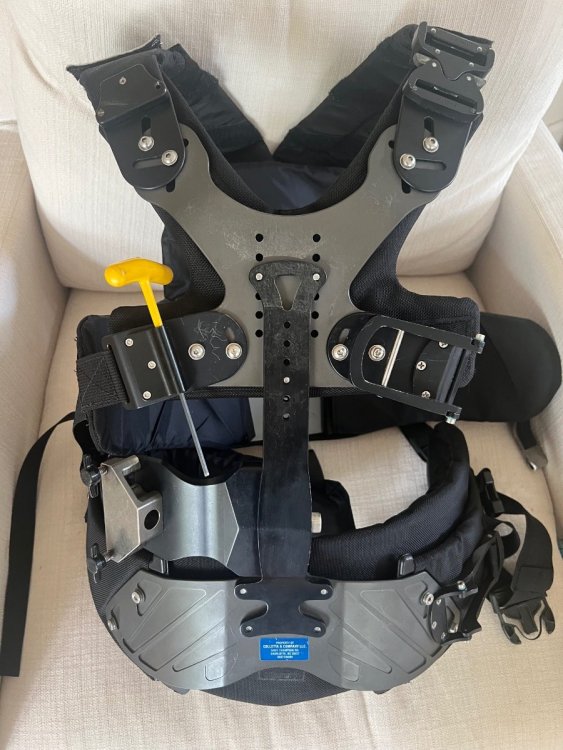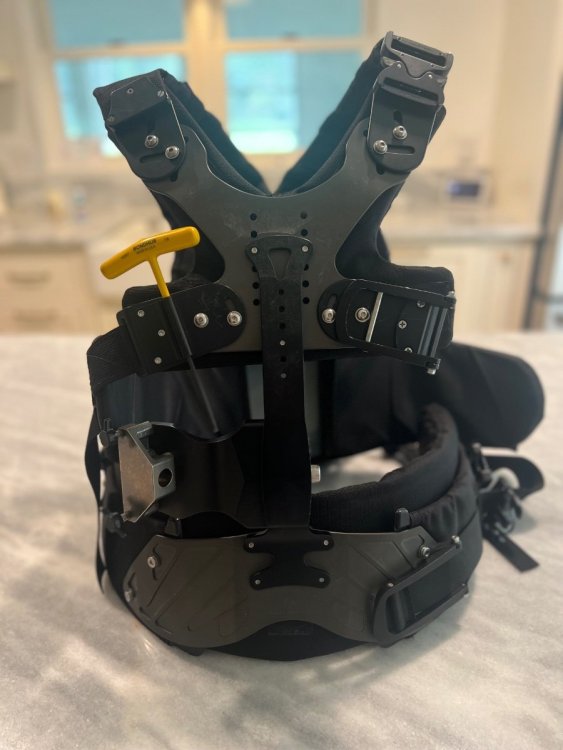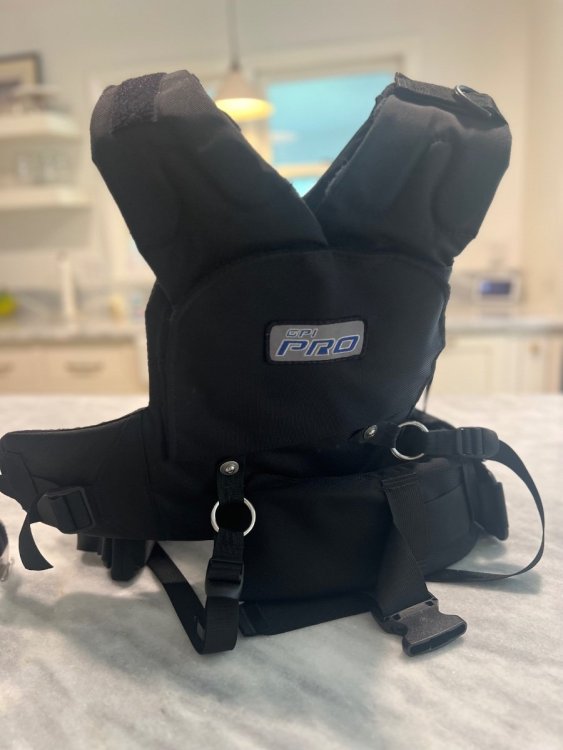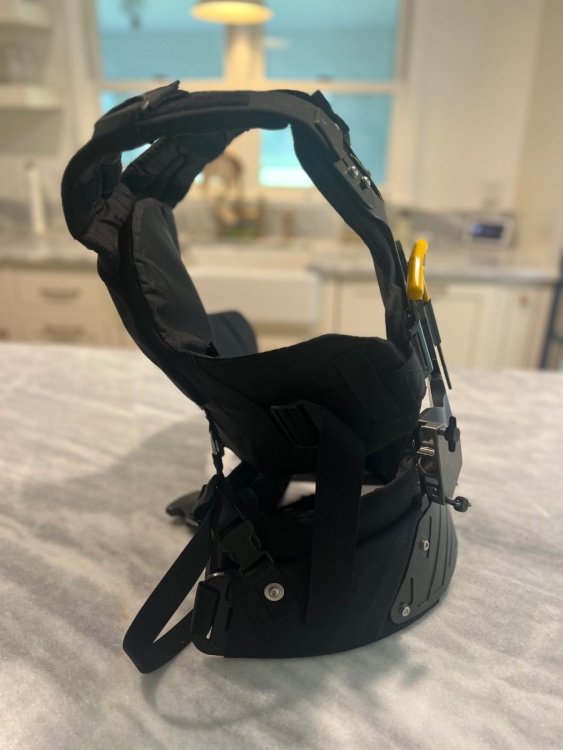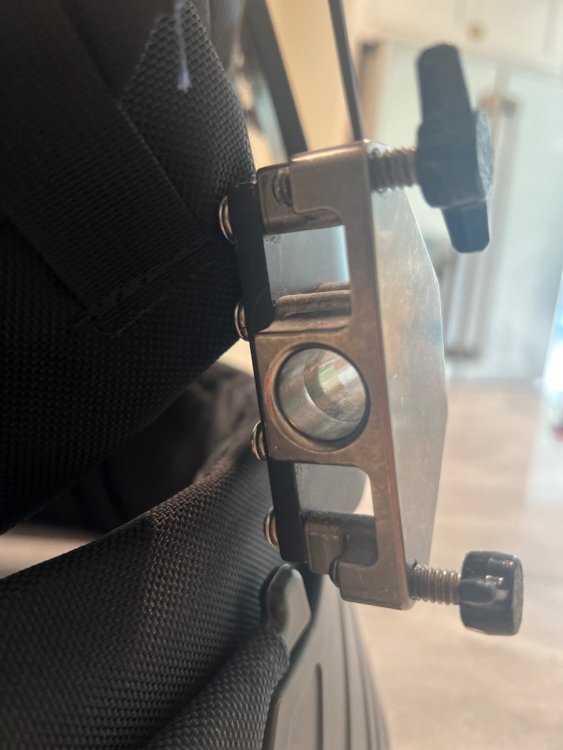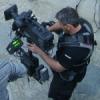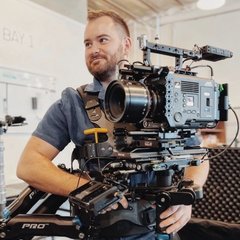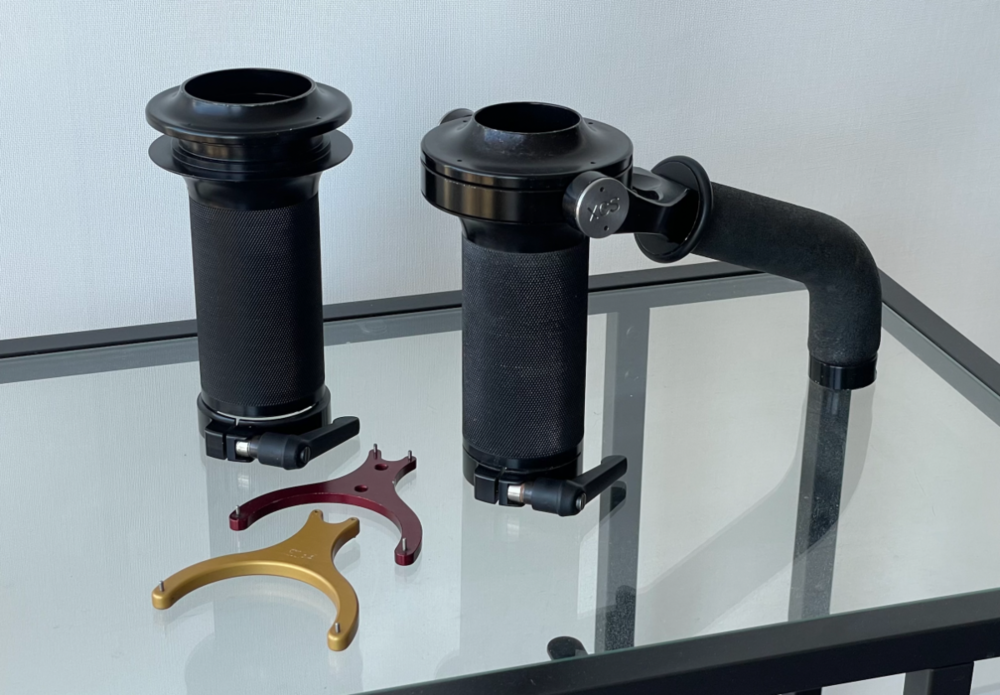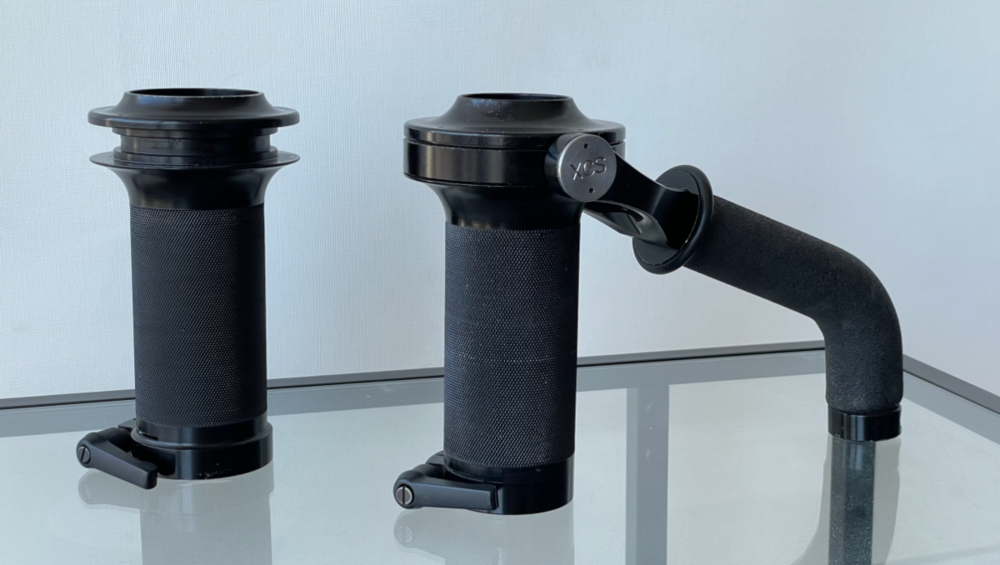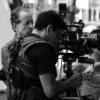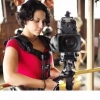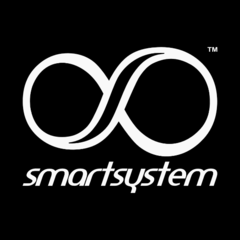Leaderboard
Popular Content
Showing content with the highest reputation since 07/02/2024 in all areas
-
Hi All I have had the Level on several jobs now. It performs really well. This is still a prototype. The final version will be shorter by an inch or so, and have WiFi so you can do software updates without sending it in. Plus more user inputs. Super simple to use, and much easier to set up than the Wave. The balance is not as critical. For example, this last show, I took the prompter and receiver off mid show and just kept going after just a regular Steadicam balance. This would have required a total rebalance on the Wave. There is still no manual lock, but this was not an issue because there is a pause button that locks the level in place. Really quick to do, as in this past commercial, I had to do some off angle shots as well. Just one button, press and go. Very low profile and discreet as the footprint is much smaller than the Wave. Although it only has 6° of adjustment, because it has a low center of gravity, it actually represents a big correction of horizontal control. You can see this when turned on and the level powers up. The locking screw is plastic but solid. Feels a little cheap. There are rubber footings that aid in keeping your camera plate from sliding at full tilt. The return to level after a full tilt is smooth. Looking forward to the final when mine gets switched out. One concern is how weatherized it is. You can see the inner circuit board between the level plates. I believe this too will be addressed in the final version. Looks to be end of this year. Cheers Taj2 points
-
New 2nd battery mount for Axis A customer asked for this, so I made a secure, low-profile battery holder for him. One piece clips on and bolts directly to the bottom of the Axis. The 2nd piece holds the V-mount (or AB mount, not shown). Use the D-tap for power. Sold with, or without, the PV-2 or AB Gold mount. Note the heavy duty protector for the V-mount battery release button. Price without the PV-2 or QR-GOLD plate $60. With either plate, add $130. Price includes shipping in USA, international extra. jholway@comcast.net2 points
-
Level has landed and will be using it thoroughly next week on a job. Cheers all and thank you for helping out.2 points
-
Hi guys. MODULAR+ (Modular plus) upgrade kit for GPI PRO vest is now available for pre-order 🔥 Check it out 📍 https://www.ya-inta.com/store/p/modular-upgrade-for-gpi-pro-vest Detail: Modular+ enhances the versatility and modularity of your GPI PRO vest. •Adjustable socket height •Reversible socket block plate***, allows regular and goofy in one vest (ideal for rental vest or specific shots requiring a side swap) •Low mode socket plate is optimized to minimize torque stress in low mode •Normal socket plate is optimized to maximize arm-monitor clearance view •Enhanced multiple safety pin lock locations •Laser engraved reference position Engineered for strength and efficiency, the Modular+ is lightweight, rigid, and streamlined. Precision-machined in-house by Koon W. Ya-inta, SOC, ACO, using multi-axis CNC machine. R&D + field testing + continue improvements over 1.5 years Designed with the future in mind, the Modular+ system offers a clear upgrade path. Additional accessories in the Modular+ product line will continue to expand its capabilities. Specs: Material: Aerospace-grade 6061, Stainless Steel 304 ***The normal socket plate is reversible for both regular and goofy operation. However, when mounted in the goofy position on a regular vest, there is a clearance limitation. A dedicated adapter for using a regular vest with a goofy setup is currently in development. If your vest is already configured for goofy operation, this issue does not apply. Check out promo video here2 points
-
All right, everybody level has shipped as of today tracking is in hand. looking forward to using it2 points
-
Hello Steadicam Operators, I’m parting with some incredible gear that has served me well over the years. The Steadicam G-50X Arm, ExoVest, and Sled are all in excellent condition, ready for a new owner who can put them to work on set. Over the past several years, I’ve transitioned more into a producer role, so I haven’t been in the camera department as much as I once was. Parting with this gear is bittersweet—it represents many great creative days on set. I know it will continue to serve someone very well. One notable selling point: the sled is the base for the Steadicam Trinity, and as confirmed by ARRI, it’s also upgradable to the 1.8 Volt post. The asking price for the complete package is $19,500 USD. If you’re looking for a high-quality rig that’s been well cared for, this is the one. Feel free to reach out with any questions or for more details! If you are interested, please reach out, and we can discuss the details further. Kind regards, Richard Included in the package: ARTEMIS 1.8" Cine HD Pro Sled (V-Mount, 12V/24V) G-50X Arm ExoVest Additional Accessories:Peter Abraham Zalex Longplate ACT 2 docking bracket 8" dovetail plate ExoVest Replacement Parts Telescopic Monitor bracket Custom milled G50X Pin to Mount Pro sled gimbal Cables: 12V XLR HiCap cam power cable (4pin Lemo 1S to 4pin XLR) 12V XLR power cable (3 pin Lemo OS - 4pin XLR) Cam Power / 24V ARRI 2pin Fischer cables Preston MDR Power 12V cables (6" and 2') RED EPIC Cam Power Cable (HiCap, 4pin Lemo 1S - 4pin Lemo) RED Cam Power Cable (HiCap, 4pin Lemo 1S -> 6pin Lemo B2) Cam Power cable (24V Panavision 3pin Lemo S) Case: Robust build, originally $8002 points
-
2 points
-
Hi Marc, same goes for vertical and lateral. Sorry for being not clear with my statement. What you can do to practice keeping the camera at a precise hight and on a precise path (straight line or arc) is a variation of the line dance. Instead of sticking a crosshair on a wall as a target you put it on a window or use a stand with a tennis ball on top of it. You need to see the back ground as well. Try to move in arcs or diagonal lines towards, away or around the target. Make the movement slow. Be close to the target as well. You will instantly see on what you have to work on. Hope this makes sense.2 points
-
2 points
-
I’ve been starting up a small maintenance shop in my workshop in New Jersey, doing maintenance and mods for quite a few operators. Obviously I can’t do warranty service, but for out of warranty repairs and maintenance and especially modifications, I’m happy to throw my hat in the ring if it makes sense geographically. If you’re on the west coast, I might check with the folks at Apex Cinema Gear, since I know they are working with Robert Luna who is an incredible resource for rig mechanicals (As well as both Justin and Stephen at Apex who do great work). There may be other resources (especially elsewhere in the world), and lead times may vary, but at least there are options!2 points
-
2 points
-
Anyone else bought one of these yet? I have seen them being tested. I have yet to receive mine. It has been 3 months since I paid in full! It was supposed to be delivered within 28 days. What’s the story? Anyone else in the same boat? Dean told me earlier this year they were ready to ship, but now I am told still in beta! Out $8k and still getting the runaround.1 point
-
1 point
-
1 point
-
PRICED IN USD. wk slingshot 2.0 + wk Steadicam Hardmount + slingshot hardmount wk craddle in picture is NOT included (could be added for ADDITIONAL $1200 USD) slingshot 2.0 ($4555 USD brand new) handheld extender x 4 ($700 USD) WK STEADICAM hardmount no case ($1300 USD brand new) Possum solutions WK hardmount ($200USD new) asking $4000 USD. (or $3000 without hardmount). shipping from vancouver canada, thru UPS/DHL/FEDEX buyer pays shipping, could Bill at your account.1 point
-
I think the logical conclusion why you got a timely reply and Taj is getting the runaround is sadly simple. They already have his money. They don't have your money YET. So they are being prompt and informative. I really hope they do deliver Taj's unit on monday like they have promised. All of those who are tempted by thier new product but dissuaded by thier horrendous historic customer service are watching. I am very interested in the level but the MKV reputation is holding me back until they have shipped many units and have many happy customers and the finished device proves reliable.1 point
-
1 point
-
Hi Marc, by vertical inconsistencies you mean headroom, correct? A couple things to try, you can re-trim your fore and aft adjustment to set the headroom you need for the shot to avoid having to do any unwanted tilting or booming of the rig. Try to keep a consistent pace and distance if you are leading or following a subject. Detuning the arm will make it less "springy"which will help, but will in turn require you having to work a little more to hold the lens height. Soften your steps as much as possible. There are a number of great posts in the forum about moving very slowly with the rig. Antlers when setup properly can help with tilt inertia giving you a bit more control, but as Benjamin said, practice is going to be your best friend over time.1 point
-
1 point
-
1 point
-
1 point
-
1 point
-
Recently bought a new rig so I'm selling my trusty M1! This rig is in great condition and was recently serviced. Theres normal cosmetic wear but nothing serious. Aside from and arm and a vest you'll have everything you need to get oping. Included: - Tilt stage - 2 section post - Transvideo 8'' X-SBL - 8- 150whr Core Batteries - Core Quad charger - 10+ BNCs - Camera Power Cables - Starlite 5'' low mode Monitor with 2 power cables - Hill Dock and Mag dock - 3rd battery plate - SOS plate - MDR plate - Full set of back up screws from SJS - Low mode collar - Steadicam Dovetail - Betz Dovetail - Thermodyne rolling case - Gimbal tool Originally everything was around $35,000 asking $22,000 Located in NYC, pickup preferred! Email jessecoyote14@gmail.com if interested1 point
-
Don't think "the" system. Have a big rolling Pelican, holding vest, arm, docking bracket and sled w/monitor and ONE battery, plus the cables that you will need -- essentially the complete basic rig, ready to grab and go. Have another with batteries, charger, your gotta-have tools and other stuff you'll probably need. A third for camera, ONE battery, mics w/ONE set of batteries, also as a grab and go. The idea is to be able to move in a hurry if you need to, and be able to set up and operate right away with what you NEED, having the rest of the stuff in a case that you can ignore until later. Then have smaller cases for the various components as smaller items, when you need to break things down. NUMBER them. Move stuff to the appropriate cases, as needed.1 point
-
1 point
-
1 point
-
1 point
-
1 point
-
Fully working original g50x (not upgraded g50),springs in perfect condition, lift and ride spins smooth. Was long time started, need maybe some cleaning and fiew parts relubed, but can use,only visually has marks but has no mechanical defects It's was my spare arm. Free shipping worldwide ONLY 3900eur1 point
-
Hello everyone! I hope you are enjoying your holidays. The SOA is selling its trusted ARRI A1 sled; former workshop and demo rig that has been well cared for and lightly used. Artemis 1, 2"post Trinity ready Included cables: 2x 12v Alexa Mini 2x 24v Alexa Mini 2x 12v 4-pin XLR 2x 12V Red (All cables are brand new) Transvideo Cinemonitor HD 6" with power cable to sled Docking bracket Dovetail stage plate Gimbal tool Pelican Air custom cut case Asking $19000 We will also send the sled to ARRI for factory inspection + any maintenance for sign-off prior to final delivery. Feel free to also email me at rey@steadicam-ops.com for any detailed questions.1 point
-
I'm selling my backup Arri Artemis Vest with a solide custom-made handle in excellent condition; overall looks clean but may have minor signs of use/surface marks for sale. (The left clamp has some marks on the surface.) There's a velcro for attaching patches and a custom-made patch (stabilized with TRINITY) but it can be easily removed. Retails at $4390 before taxes. Selling $3800 US Bought this for a feature and used it a total of 45 days. Buyer pays shipping and fees otherwise. INFO FROM ARRI: Highly adjustable and modular vest. Only the most comfortable and modern fabrics are used for the ARTEMIS vest. Fits any operator with a height from 1.5 m up to 2.1 m/4.9' up to 6.56'. Weight: 4.5 kg/9.9 lb with standard industrial vest-to-arm connector.1 point
-
If these are for a Tiffen M1/M2’s sled rods, I would use Zacuto rods. Tiffen standardized on the 1/2”x13 thread standard, which Zacuto is one of only a few companies to use, unlike most companies which seem to use the M12 thread standard. I source mine from B&H as I’m in the NY area, and they are findable as “Zacuto extension rods”1 point
-
I'm near Reno, but shot events around General Conference in October and get over that way now and then. I started with a Merlin2, then added vest and arm, then took it up to a Pilot, and now have moved up to a Flyer. Definitely low-level, low-budget, flying an EX1R. Having fun doing it. Goofy Foot. Dunno if there is anything that I could tell you, except watch the (ancient) Operating Tutorial video a couple of times. Even better if you have a rig to play with while you watch. If you don't have a rig, start cheap, just with a regular camcorder. Early on, spend a day flying Goofy Foot, especially if it feels like you're doing things with the wrong hands. Those of us who fly Goofy Foot don't do it to be special, we do it because it feels more natural. It doesn't take long to get comfortable flying, and sooner than you expect, you will you stop thinking about the mechanics, and discover that the camera is reading your mind . . .you want a shot, and you have it. Remember, the objective IS the objective. The billions of dollars worth of studios, sticks, Steadicam, remote vans, location setups, C-stands to gaff tape to batteries to sets to helicopters to costumes to props, PAs, ADs, Craft Service, ALL OF IT is there for one purpose, to put the objective lens in the right place, pointed the right way, at the right time to see the right thing. Steadicam is a whole new way to do that, a new process, and one which gives a level of freedom that nothing else will, but it takes practice. Get a rig, play with it, even before the workshop, if you can. The workshop will take you from basic to expert -- maybe even master. From what I've been told, you get a year's worth of skills in the first couple of days, then build on that like learning a new language. If I could justify the expense, I'd be right there beside you.1 point
-
1 point
-
1 point
-
As I have never had the pleasure of wearing one of your vests Andrea, I am positive that yours is of the highest quality. And I did say it was a simple design because, well it is. And that's what makes it stand out. ProAim will never be better but they will cut corners and sell this stuff for cheap. I remember back when I was a member of HBS and I was in the process of building my own "rig" I ordered a Flycam 7000 gimbal and wow what a piece of work that was. Everything was cast and just really worthless! It's sad that they copy all the really great equipment and people actually by into it. Mind you, I can't afford one of your vests or any Flowcine arm but I sure won't waste any of my money on a copy! If they would just get their R&D dept. to actually design and machine something good maybe they could enter into a new era of sales but alas I never see that happening. Maybe one of these days I will get to fly one of your systems Andrea. Keep up the great work!!!!1 point
-
1 point
-
1 point
-
Selling my GPI PRO VEST, $3800, purchased in 2018. In good working condition, minor wear and tear in the form of some scuffs and scratches from use. I’m no longer in the stesdicam game so looking to offload my last piece of gear steadicam gear. 6’2” operator, 36” chest and waist measurements. 190-205lbs operating weight over the years. Priced to sell! $3800 Buyer pays shipping, based in Charlotte, NC.1 point
-
1 point
-
1 point
-
Hi all; I've got a new vendor and all stocked up again with plates. I've even got a couple of new holes in the edges so that you can configure the posts in many ways, rather than just the four corners. I've got some good pricing, probably a bit better deal. Pictures to follow. Janice Have a wonderful 2024 after an horrendous 2023.1 point
-
Also interested in the monitor! its tough seeing the smallhd 703 on sale for $2200 right now. Not sure which monitor to get.1 point
-
XCS gimbal in great shape, smooth as buttah. Hasn't been used a lot, mainly keeping it as a backup. Purchased it new from Greg, never abused it. Got a couple small cosmetic scratches but besides that, it's in perfect shape. Gimbal can be used on either a 1.5" post or a 2" post by simply swapping the sleeve. Comes with 2 hand tools. Buyer pays all shipping charges. Asking US$3800.00 Francois.1 point
-
Hello everyone A few days ago a scammer contacted me outside the forum trying to sell me a sled - which was posted on the forum by another user - I followed the game to see how far it went.. He called himself "John Weekend", and his email is: johnwkd468@gmail.com Googling his email I found that he had already tried to scam in another forum: https://www.thecj2apage.com/forums/scam-user-name-johnwkd_topic50570_post514794.html#514794 The paypal account where he wanted me to send money is: ndungufran23@gmail.com Be careful. Greetings to all, Gus1 point
-
A 10 minute reel of shots I made with and without the Volt for Hulu’s “Dollface”. Most of the video is accompanied by descriptions of how I tune my Volt for different shots, along with why. This tool has fundamentally made my days at work better, allowing me to make bolder choices, with more precise results!1 point
-
Patrick, Please please do NOT become dependent on the Volt. If you have as much passion as you seem to have (referring to your first post on this thread) you should learn to be a good Steadicam Operator without it. You seem to have great respect for Garrett and Jerry and the entire world of Steadicam, to learn without using the volt (as they had and most of us had to) would be a great way to express that respect, IMHO. Your fellow op, - Kat1 point
-
Hi Tom I'm Andrea, CEO and Senior Engineer inside SmartSystem. As technicians, we are always happy to receive feedback. Especially, the negative ones push us to find better and "smarter" solutions... always. As you know, the world is a perfectible place. For this reason, can I kindly ask to you if tested our system and where? Maybe we met somewhere in some exhibition? What you found wrong or bad and what could be considered good? Sincerely Andrea1 point
-
Paddocks Radical Options or "The GPI Story..." George Paddock was an engineer in the Navy, later became a Steadicam operator/owner when buying his EFP in 1990. Imidiately he started to modify it and that became his first brush with Steadicam modification/manufacturing. He was the person behind the modification that made Dynamic balance with the EFP possible/easier possible. The construction of a for and aft to the bottom of the sled. It was so successful that his upgrade was even sold trough CP directly. Paddocks Radical Options (PRO) came about as an upgrade for the stagnated Steadicam Model 3/3A that was not majorly upgraded in 12 years (Most of the parts and technology, like the Arm, electronics, etc. was basically the same since 1976). The PRO basically incorporated design aspects from Bob DeRose, using his "tele-post" later the GPI Center Post, as well as his DA-1 (the upper Junction box), the lower for and aft and all the little and big brackets and widgets that he had made for the 3A for years. Chris Haarhoff added his Donkey Box to it and George Paddock came up with the Monitor, Housing, the Power Supply, Batteries. (They were sold in parts as the Steadicam patents were still very much power. Many Steadicam hardliner believed that that was in direct violation and competition with Steadicam... It was a well deserved Option.) The interesting part about that was that for years many Workshops were conducted by CP and PRO with CP/DCE/PRO hybrids until that day when the war/break came about... And No I don't know exactly what happend... You will notice that many parts from the 3A will fit the PRO and vice versa... as the PRO design was initially meant as an upgrade and not as a replacement for the 3/3A. The Master Series was the answer to the PRO or at least got pushed quicker in production, which came with different diameter Post, Gimbal and Arm Post which were not interchangable with the PRO. A try from CP to dry out the supply of Arms and Gimbals for the PRO system. Which eventually turned out to be a shot in there own foot. (As we know CP went down... GPI is still here.) All customers of the first PRO were disappointed or fed up 3A owners that needed something more reliable. (Remember? Everytime you flipped the switch for the Monitor with anticipation... will it glow or blow up...) You still needed the 3A Vest, Arm and Gimbal to compleat the set up as Cinema Products did not sell single parts, actually they decidet what they sold you at the time. Later the PRO Gimbal got introduced as well as much later the Arm and the Vest which compleated the PRO set up and marked the departuer from all parts Steadicam. And the second compleat System (Sled, Arm and Vest) as an alternative to the original Steadicam. GPI was the first to introduce an interchangable Super Post as a standard item as well as the Gyro Module, Stand-alone Monitor, quickly disconnectable center post, drop in Camera plateform, true 24 Volt system (okay second as the Panaglide was first) and many more things not available to the Steadicam Community until the Master Series Steadicam. Besides George Paddock, Chris Haarhoff and Bob DeRose, Mark O'Kane, David Emmerichs and Ted Churchill were named additional Designers. (As Ted is not named on any patents, he was closely involved with the development of the monitor, and some technical aspects.) "Guineapigs", Testers and first Costumers were Chris Haarhoff, Mark O'Kane, David Emmerichs, Ted Churchill, Jimmy Muro, Andrew Rowlands, Colin Anderson, Steve St.John, Randy Nolan, Bob Ulland, Greg Lundsgaard, Scott Sakamoto, Mark Van Loon, Rusty Geller, Ian Jones, Jim McConkey, Mark Emery Moore, Rick Raphael, Bob Gorelick, Dave Knox, Guy Bee, Dan Kneece, Dave Luckenbach and a couple of others that I can't remember off hand... And again please feel free to correct me or add anything that I missed or compleatly screwed up... please... Here a 1993 picture (from an old GPI add), showing Mark O'Kane's PRO. With: 3A Gimbal, Donkey Box 1, Scissor Monitor Arm, 3 cable Center Post, Preston UHF and the original Leightweight Panaflex. I believe the rig is Serial #002. (Chris Haarhoff used to own #001, which went to Kurt Jones and now is owned by Brian Hart.)1 point
-
With today’s Lithium batteries you have you two basic cell types, Polymer and Ion. Both deliver the high current you need for the HD and film cameras we run. They both have similar performance and temperature curves. I have owned, tested and used Lithium packs for over 12 years and both cell types have just kept improving and work well. Extreme hot and cold you should be a bit more cautious. Engineers may say by the numbers that Ion cells can deliver a higher current at startup due to lower internal cell impendence, but with the current capability of both types of cells I find it’s indistinguishable between battery packs with the wattage we run and the amount of current batteries can provide. 90, 120, 160, 190, 235 watt hr battery pack being the most common standard sizes. Using a larger watt hr pack will extend the life of that battery pack under similar current loads since they deplete at the same rate. So if you are buying a 90 watt battery pack Vs. a 150 watt pack and putting an 8 amp constant load on it for example, the 90 watt pack will of course reach the end of its useful battery life sooner over the life of the battery Vs. 150 watt hr pack that may cost $40. more and weight additionally 4 ounces more but may give you 6 months longer run time over its battery life in addition to its initial longer run times. I have gone from three 90’s watt packs 10+ years ago, to two- 160’s 5 years ago, and to two 235watt packs today. Buy the way two 235 watt packs weight 1-2 ounces less than three A/B 90 watt hr packs with a total increase in capacity of about 74%. Additionally you will notice that some resellers are selling 14.4 Vs. 14.8 nominal voltage packs that allows them to give you a 10-15 watt higher output rating which is negligible (a numbers game) to steadicam, ONLY if you equipment can handle the higher voltage output of these packs. It only gives you an appearance of higher capacity which operators may think they are getting a longer run times, they are not. Because the camera will run below the batteries low voltage rating. Listed are some well known performance factors by battery manufactures but I feel sometimes misunderstood by the end user. 1) First both types of Lithium cells and will deplete at a very similar rate when used similarly. 2) Both cell types will lose performance and deplete over time whether or not they are used. 3) Both cell types will typically lose 20-30% of the current load capacity after 18-20 months or 100 cycles when high current loading a battery pack, slightly more cycles when not. High current loads are considered power draws that are greater than 60% of the battery wattage rating. Or just about every battery we use on a sled under 150 watts if you run two batteries and power the camera. 4) Different battery wattages have different thermal fuse ratings. Typically between 10.25- 15 amps. This is important as you draw down the battery voltage when using it and your battery ages. The lower the voltage output of the battery the high the current (Amp) draw it has on your battery pack. So as your battery ages it pulls more current (amperage) at lower voltages to run that camera, you will reach that thermal fuse limit sooner. 5) That most all reputable battery suppliers in our market are using reputable cell manufacturers of equal quality. So that name brand pack when opened up might have that same Samsung, Sanyo, Saft cell and you can expect similar performance. These companies are all completing for the same market. 2/3 of the packs I take apart from different resellers are using the exact same cell. And the price varies from each company. I have tested a few off brands and find they perform as well or better then the two major brands on the market. 6) We all have different tolerance to battery packs at the end of their useful life. I can only speak for myself here. When my batteries are only lasting 20 minutes before I have to change them it’s time for new batteries. Others may change sooner, some may allow even shorter runtimes. So battery end of life is very subjective. What is missing out of this equation of battery runtimes and performance (ability to deliver power) on a sled is the most important, least talked about and least understood subject. Power delivery though the sled. This is where two identical battery packs under the same current load using the same camera can have two different run times, power outputs and cycle life. This comes down to three things. Proper power wire gauging through your sled including power cables to camera. Connector sizes in your sled, and is there an active battery management system, or is it just you managing/monitoring the packs yourself. Wire : The length of the power wire run through the sled system is or should be an important consideration for all. Most who know me understand I could go into great detail on these points but ones needs only to visit a web page with a DC voltage loss calculator and input the few basic parameters to get the big picture on power loss over a give wire length. It will ask a few basics you, fill in the blanks. A) AC or DC current B) Nominal voltage- input the lowest voltage you run your batteries down to. 12.5, 13.0, 13.5 C) Wire length. Remember this is a loop. Voltage travels from battery to camera, back to battery. A standard XCS/Pro sled wire run would be around 10 feet for a god estimate of length. 3 and 4 stage posts add the additional length of the post stages, times 2 D) Wire type copper or tinned copper I would guess most are using with standard strand count. E) Wire gauge most makers are using 22 Awg wire and one or two in a multi conductor scenario running parallel. Using two 22 Awg wire doesn’t equal 19 Awg. In a perfect world in the lab with no current draw or minimal, not true in operation. One only needs to Ohm out each conductor to see that difference. These on line calculators will tell you the voltage loss in your system due to the wire gauge/length you have. I would say that on average you will see a 1.5 volt loss from top to bottom on many systems, but not all. So that may be 20% of your battery life gone due to poor wiring/connector standards when your sled is under load. Lastly battery management. This as well is critical to battery performance and cycle life. In all current sled designs except for one manufacturer, they combine two or three battery packs in parallel or series and sometimes both with no monitoring of the individual capability of each battery pack. I am not talking about reading battery voltages, rather an active battery capacity monitoring system. When battery packs are linked together in 12 or 24 Vdc mode they are only as good as the weakest battery pack or cell in any single pack or a wire that has a higher resistance, it all comes into play. There is far more intelligent full proof method. Using this old hard wired method which is still a standard way to handle batteries is why one should not run old and new battery packs together at the same time. You’re depleting the performance of the overall battery system and runtimes. Not even considering the increased resistance in the sled wiring due to heat buildup due to a weaker battery pack. If you what the best performance out of your packs and don’t have proper battery management electronics use packs of the same cycles or age, don’t mix one old with one new. I am not advocating any specific battery supplier just keep an open mind on what is available. Sorry for the long post. Heavily edited to keep it this short. GregWith today’s Lithium batteries you have you two basic cell types, Polymer and Ion. Both deliver the high current you need for the HD and film cameras we run. They both have similar performance and temperature curves. I have owned, tested and used Lithium packs for over 12 years and both cell types have just kept improving and work well. Extreme hot and cold you should be a bit more cautious. Engineers may say by the numbers that Ion cells can deliver a higher current at startup due to lower internal cell impendence, but with the current capability of both types of cells I find it’s indistinguishable between battery packs with the wattage we run and the amount of current batteries can provide. 90, 120, 160, 190, 235 watt hr battery pack being the most common standard sizes. Using a larger watt hr pack will extend the life of that battery pack under similar current loads since they deplete at the same rate. So if you are buying a 90 watt battery pack Vs. a 150 watt pack and putting an 8 amp constant load on it for example, the 90 watt pack will of course reach the end of its useful battery life sooner over the life of the battery Vs. 150 watt hr pack that may cost $40. more and weight additionally 4 ounces more but may give you 6 months longer run time over its battery life in addition to its initial longer run times. I have gone from three 90’s watt packs 10+ years ago, to two- 160’s 5 years ago, and to two 235watt packs today. Buy the way two 235 watt packs weight 1-2 ounces less than three A/B 90 watt hr packs with a total increase in capacity of about 74% Additionally you will notice that some resellers are selling 14.4 Vs. 14.8 nominal voltage packs that allows them to give you a 10-15 watt higher output rating which is negligible (a numbers game) to steadicam, ONLY if you equipment can handle the higher voltage output of these packs. It only gives you an appearance of higher capacity which operators may think they are getting a longer run times, they are not. Because the camera will run below the batteries low voltage rating. Listed are some well known performance factors by battery manufactures but I feel sometimes misunderstood by the end user. 1) First both types of Lithium cells and will deplete at a very similar rate when used similarly. 2) Both cell types will lose performance and deplete over time whether or not they are used. 3) Both cell types will typically lose 20-30% of the current load capacity after 18-20 months or 100 cycles when high current loading a battery pack, slightly more cycles when not. High current loads are considered power draws that are greater than 60% of the battery wattage rating. Or just about every battery we use on a sled under 150 watts if you run two batteries and power the camera. 4) Different battery wattages have different thermal fuse ratings. Typically between 10.25- 15 amps. This is important as you draw down the battery voltage when using it and your battery ages. The lower the voltage output of the battery the high the current (Amp) draw it has on your battery pack. So as your battery ages it pulls more current (amperage) at lower voltages to run that camera, you will reach that thermal fuse limit sooner. 5) That most all reputable battery suppliers in our market are using reputable cell manufacturers of equal quality. So that name brand pack when opened up might have that same Samsung, Sanyo, Saft cell and you can expect similar performance. These companies are all completing for the same market. 2/3 of the packs I take apart from different resellers are using the exact same cell. And the price varies from each company. I have tested a few off brands and find they perform as well or better then the two major brands on the market. 6) We all have different tolerance to battery packs at the end of their useful life. I can only speak for myself here. When my batteries are only lasting 20 minutes before I have to change them it’s time for new batteries. Others may change sooner, some may allow even shorter runtimes. So battery end of life is very subjective. What is missing out of this equation of battery runtimes and performance (ability to deliver power) on a sled is the most important, least talked about and least understood subject. Power delivery though the sled. This is where two identical battery packs under the same current load using the same camera can have two different run times, power outputs and cycle life. This comes down to three things. Proper power wire gauging through your sled including power cables to camera. Connector sizes in your sled, and is there an active battery management system, or is it just you managing/monitoring the packs yourself. Wire : The length of the power wire run through the sled system is or should be an important consideration for all. Most who know me understand I could go into great detail on these points but ones needs only to visit a web page with a DC voltage loss calculator and input the few basic parameters to get the big picture on power loss over a give wire length. It will ask a few basics you fill in the blanks. A) AC or DC current B) Nominal voltage- input the lowest voltage you run your batteries down to. 12.5, 13.0, 13.5 C) Wire length. Remember this is a loop. Voltage travels from battery to camera, back to battery. A standard XCS/Pro sled wire run would be around 10 feet for a god estimate of length. 3 and 4 stage posts add the additional length of the post stages, times 2 D) Wire type copper or tinned copper I would guess most are using with standard strand count. E) Wire gauge most makers are using 22 Awg wire and one or two in a multi conductor scenario running parallel. Using two 22 Awg wire doesn’t equal 19 Awg. In a perfect world in the lab with no current draw or minimal, not true in operation. One only needs to Ohm out each conductor to see that difference. These on line calculators will tell you the voltage loss in your system due to the wire gauge/length you have. I would say that on average you will see a 1.5 volt loss from top to bottom on many systems, but not all. So that may be 20% of your battery life gone due to poor wiring/connector standards when your sled is under load. Lastly battery management. This as well is critical to battery performance and cycle life. In all current sled designs except for one manufacturer, they combine two or three battery packs in parallel or series and sometimes both with no monitoring of the individual capability of each battery pack. I am not talking about reading battery voltages, rather an active battery capacity monitoring system. When battery packs are linked together in 12 or 24 Vdc mode they are only as good as the weakest battery pack or cell in any single pack or a wire that has a higher resistance, it all comes into play. There is far more intelligent full proof method. Using this old hard wired method which is still a standard way to handle batteries is why one should not run old and new battery packs together at the same time. You’re depleting the performance of the overall battery system and runtimes. Not even considering the increased resistance in the sled wiring due to heat buildup due to a weaker battery pack. If you what the best performance out of your packs and don’t have proper battery management electronics use packs of the same cycles or age, don’t mix one old with one new. I am not advocating any specific battery supplier just keep an open mind on what is available. Sorry for the long post. Heavily edited to keep it this short. Greg1 point

